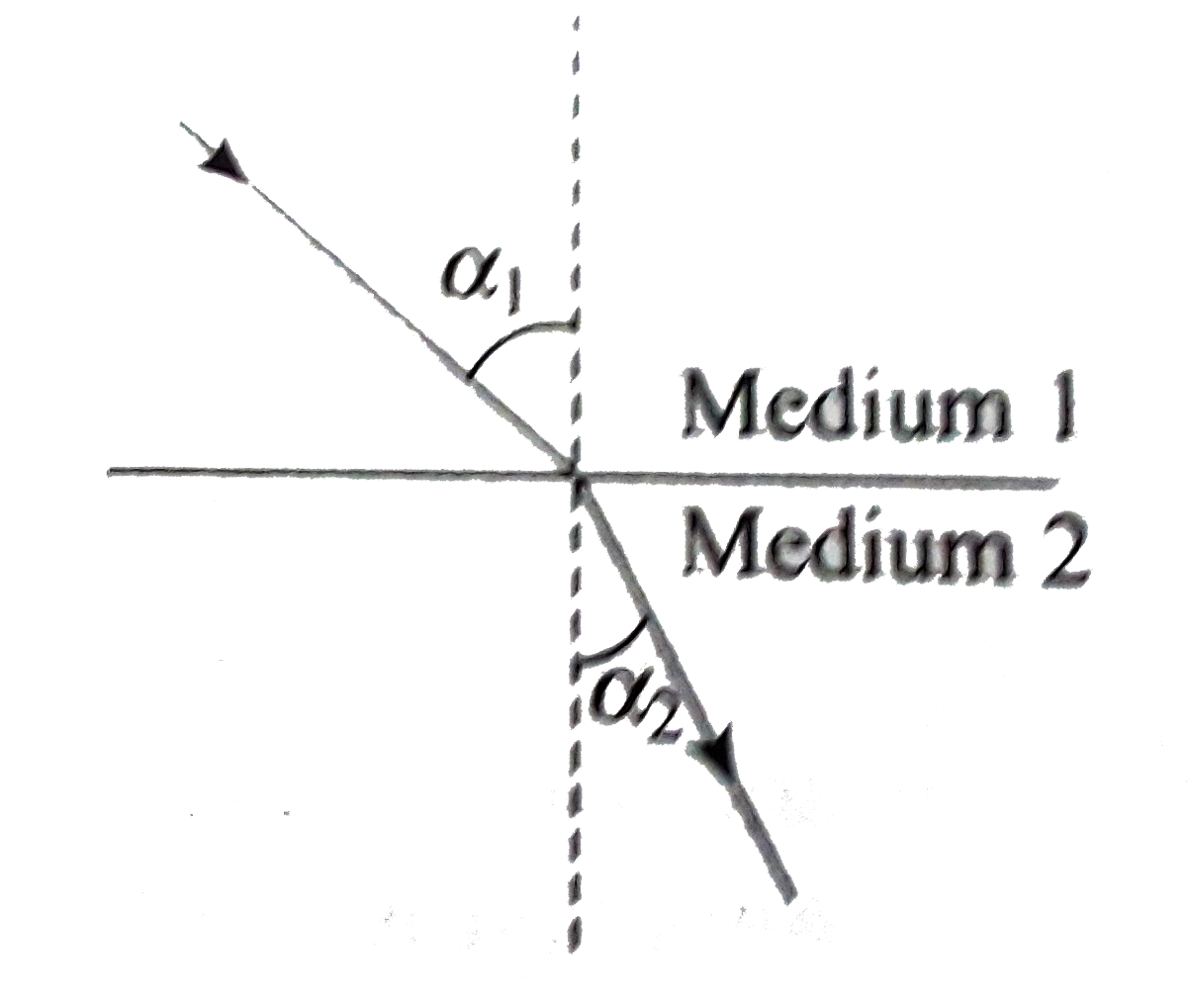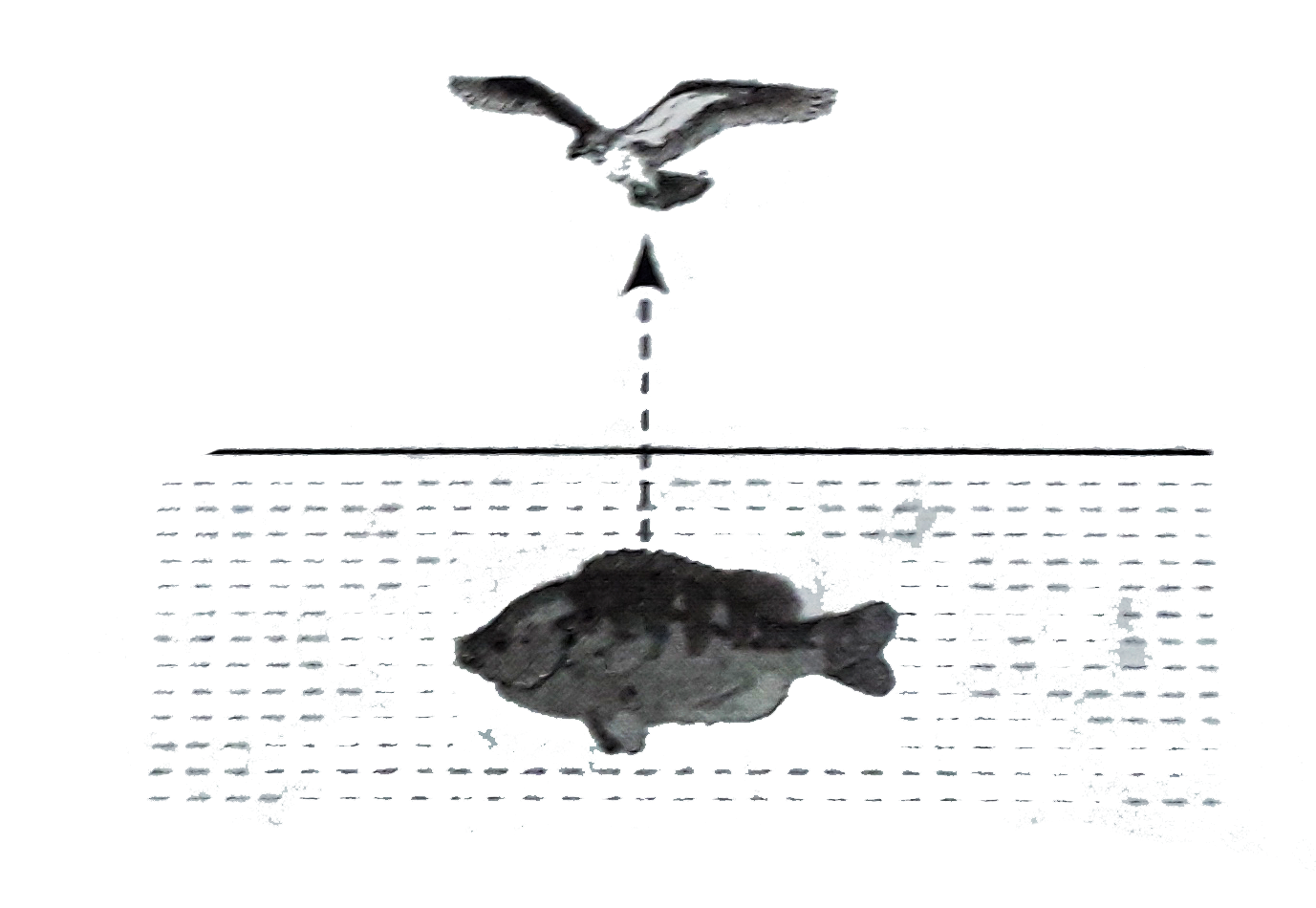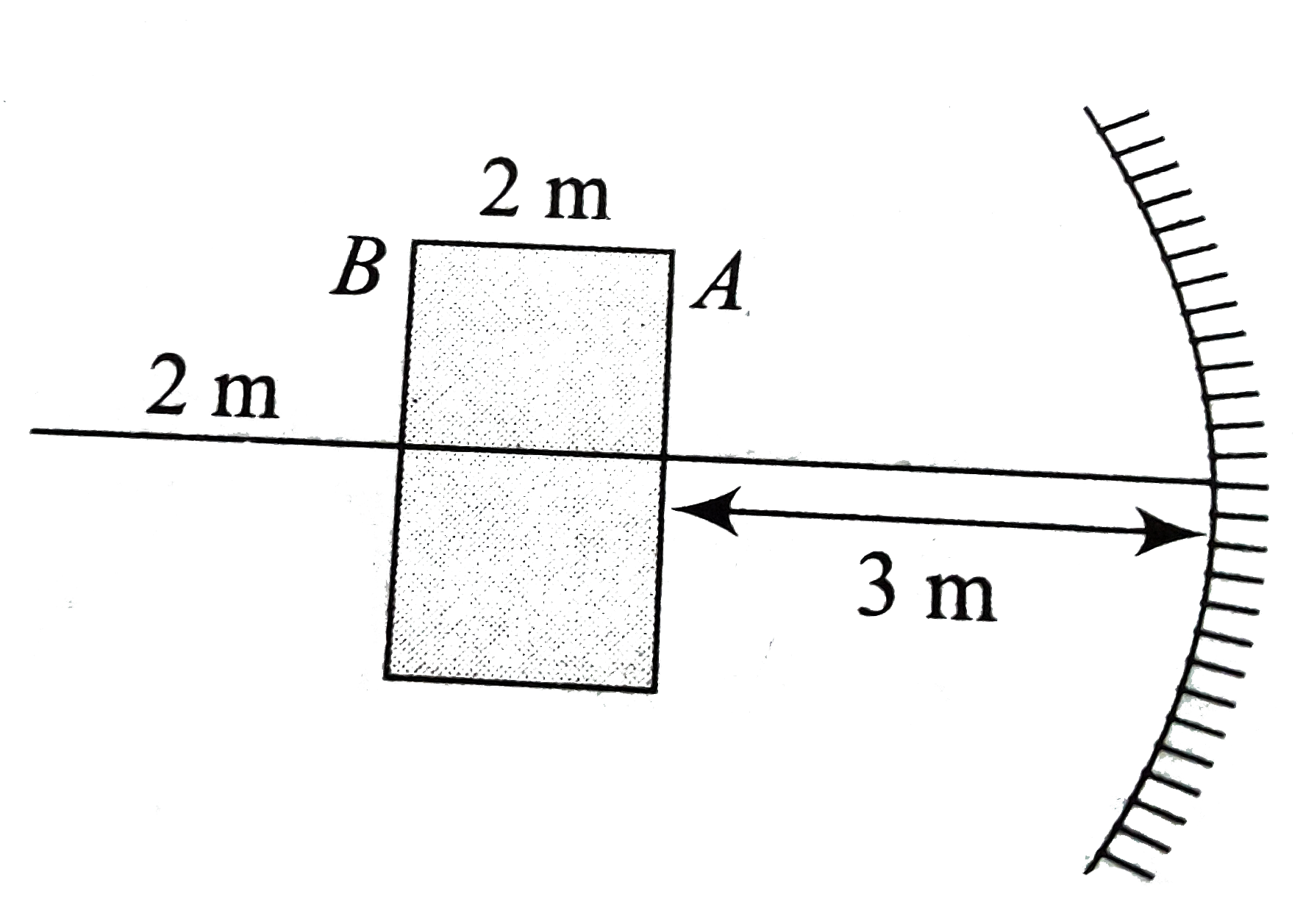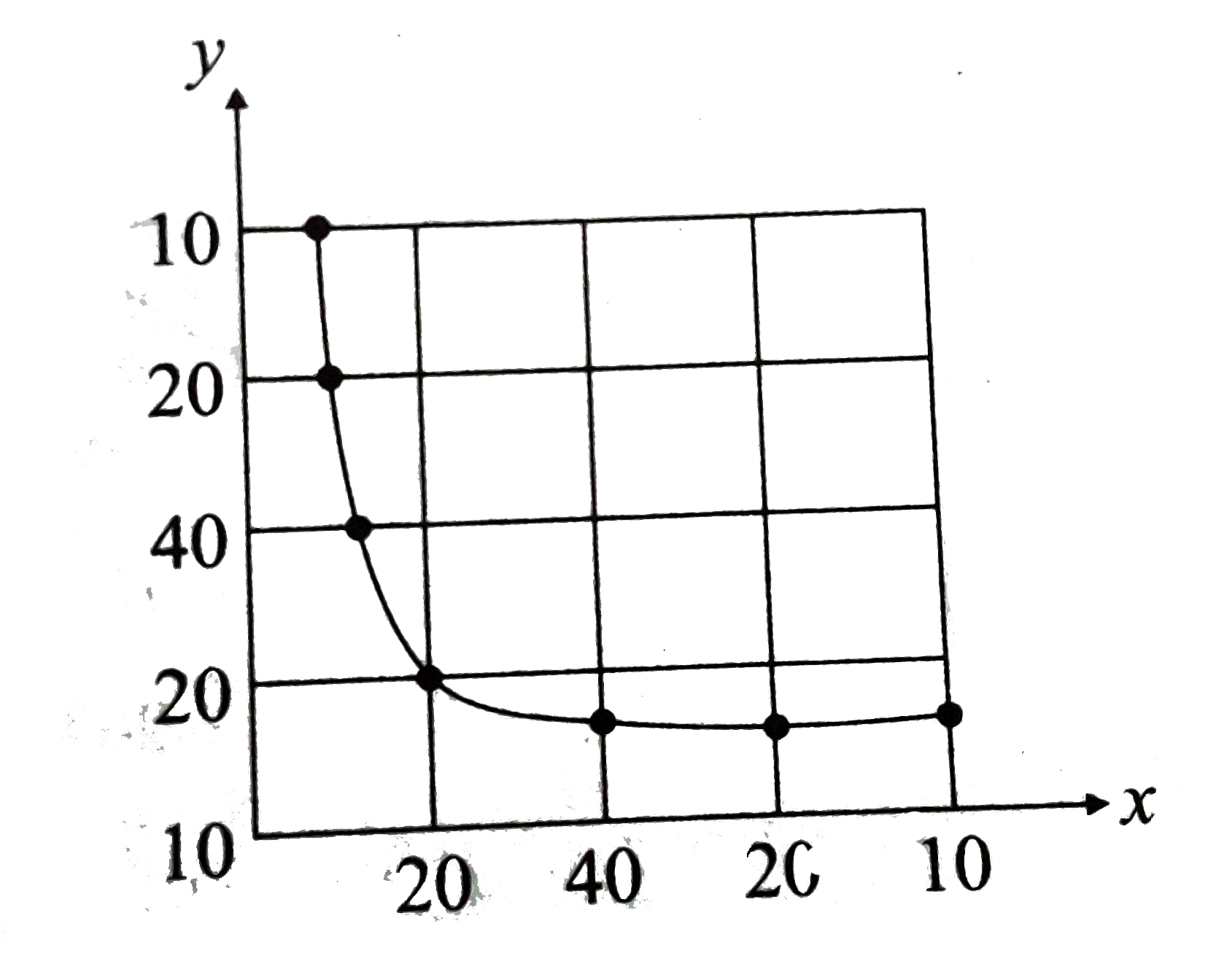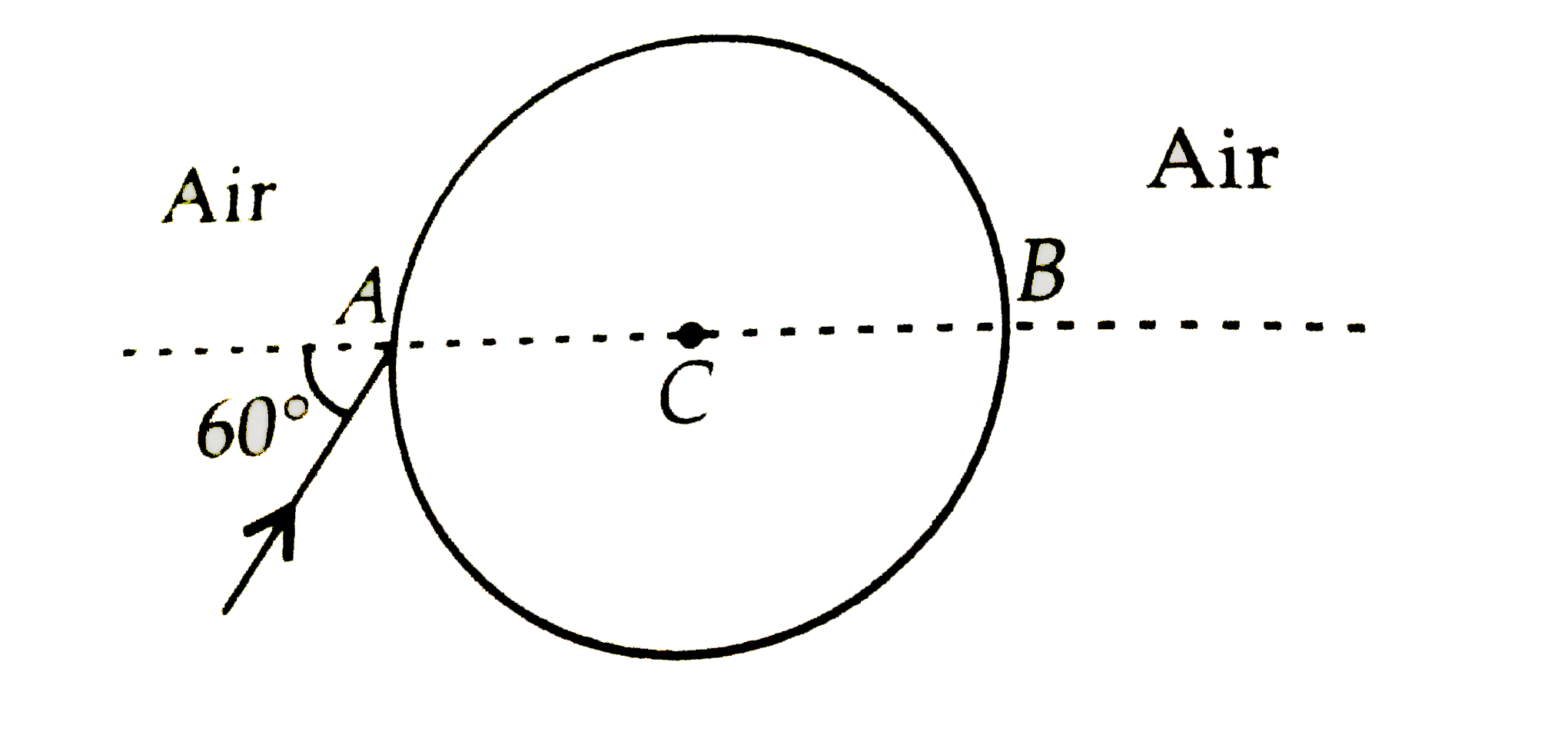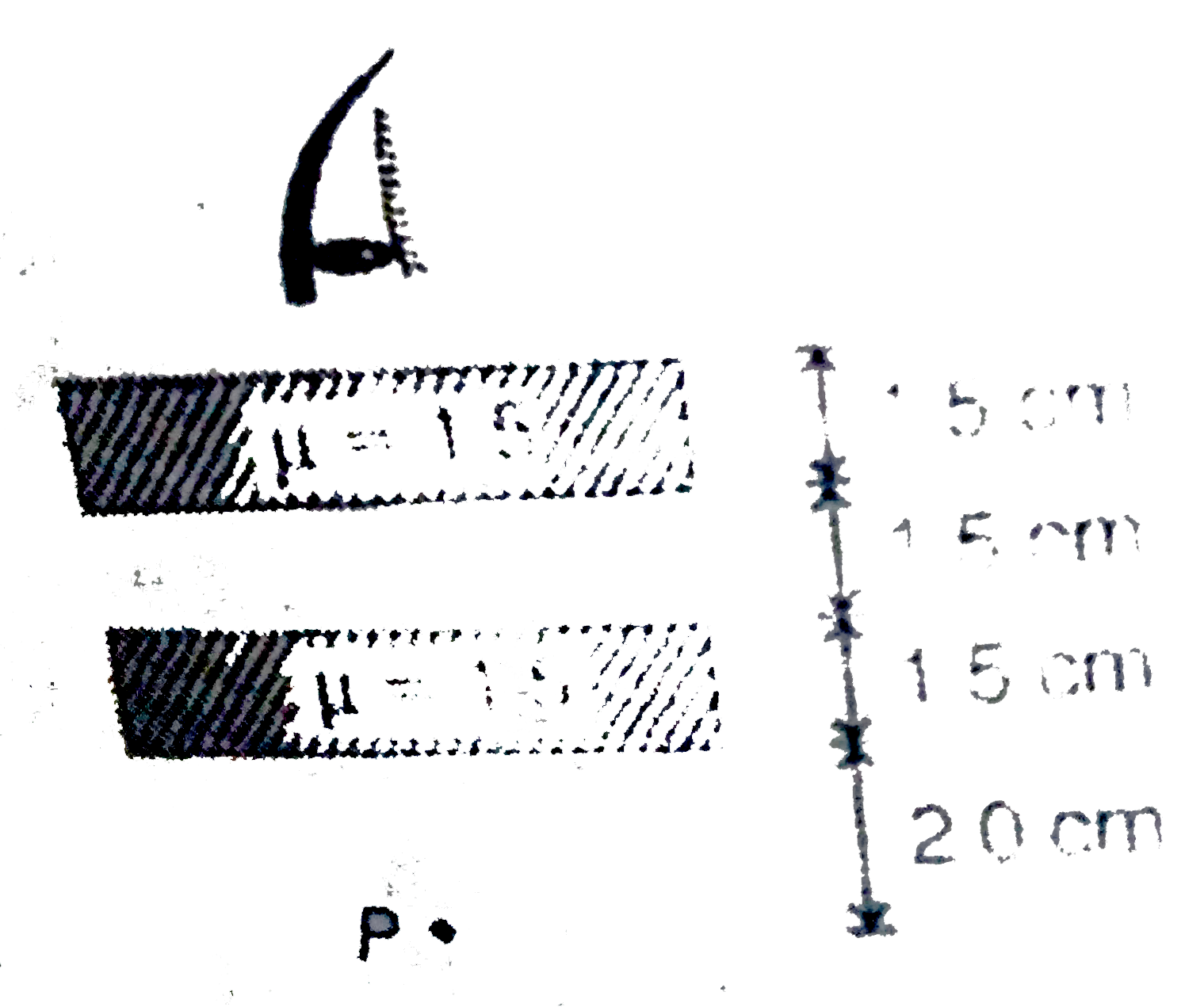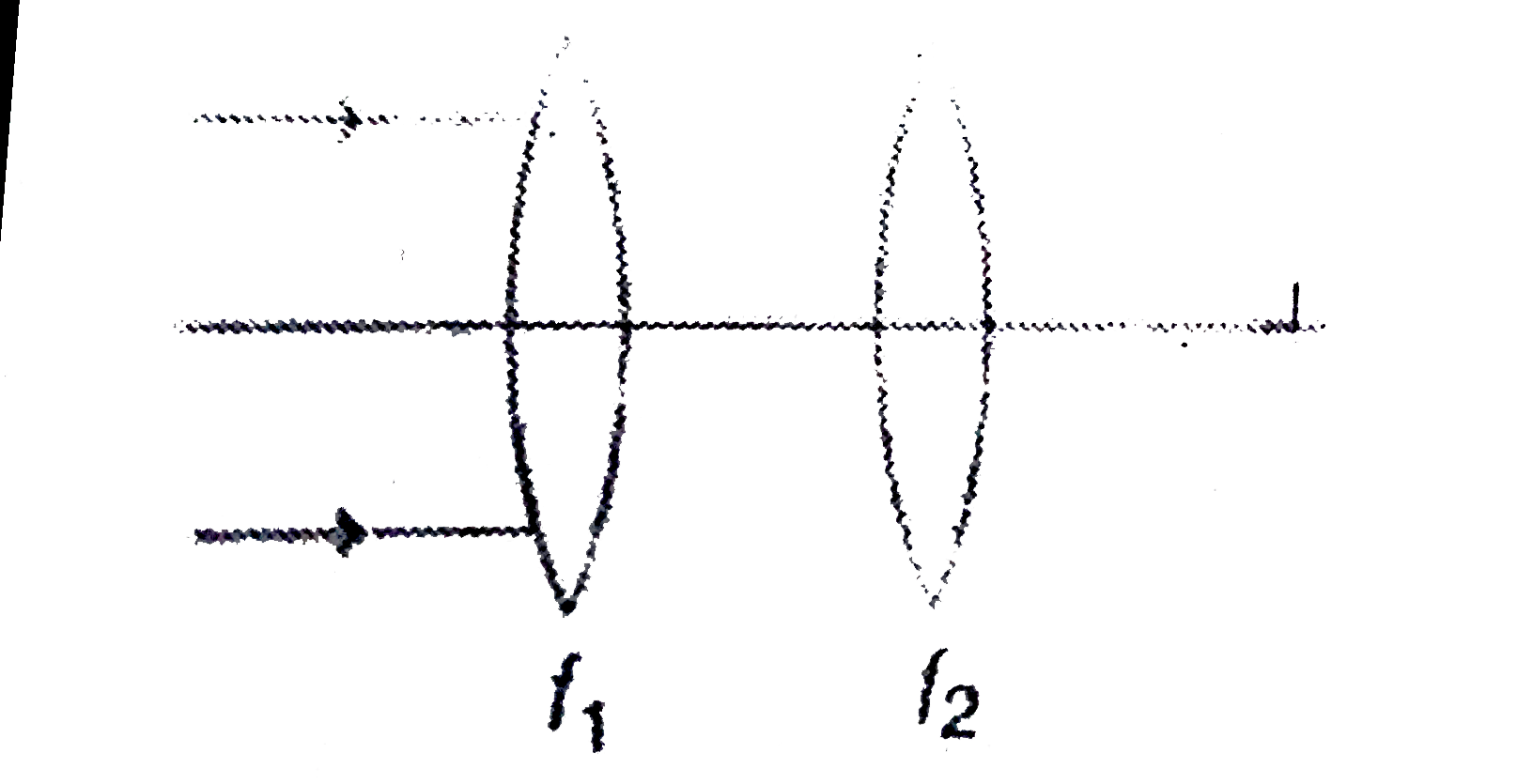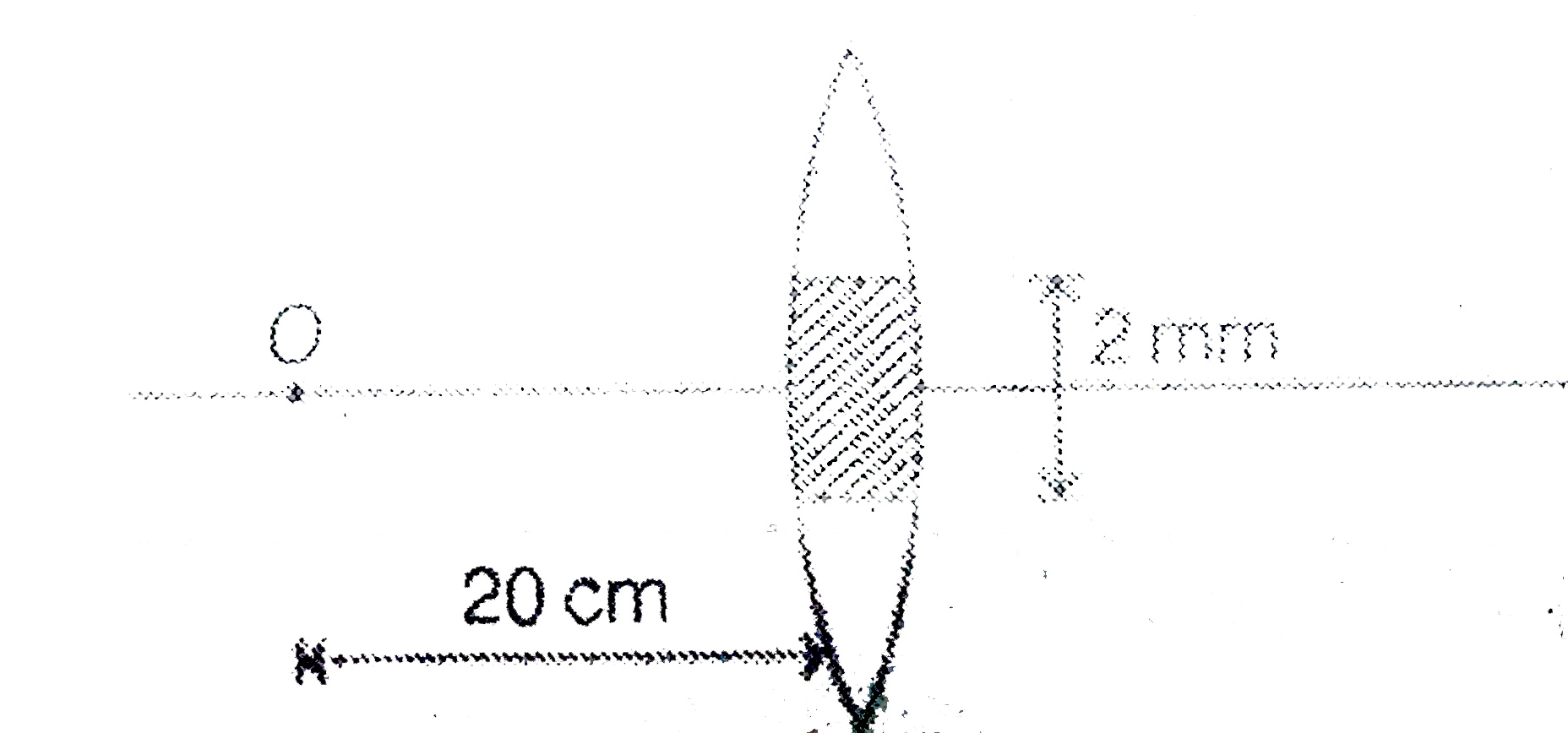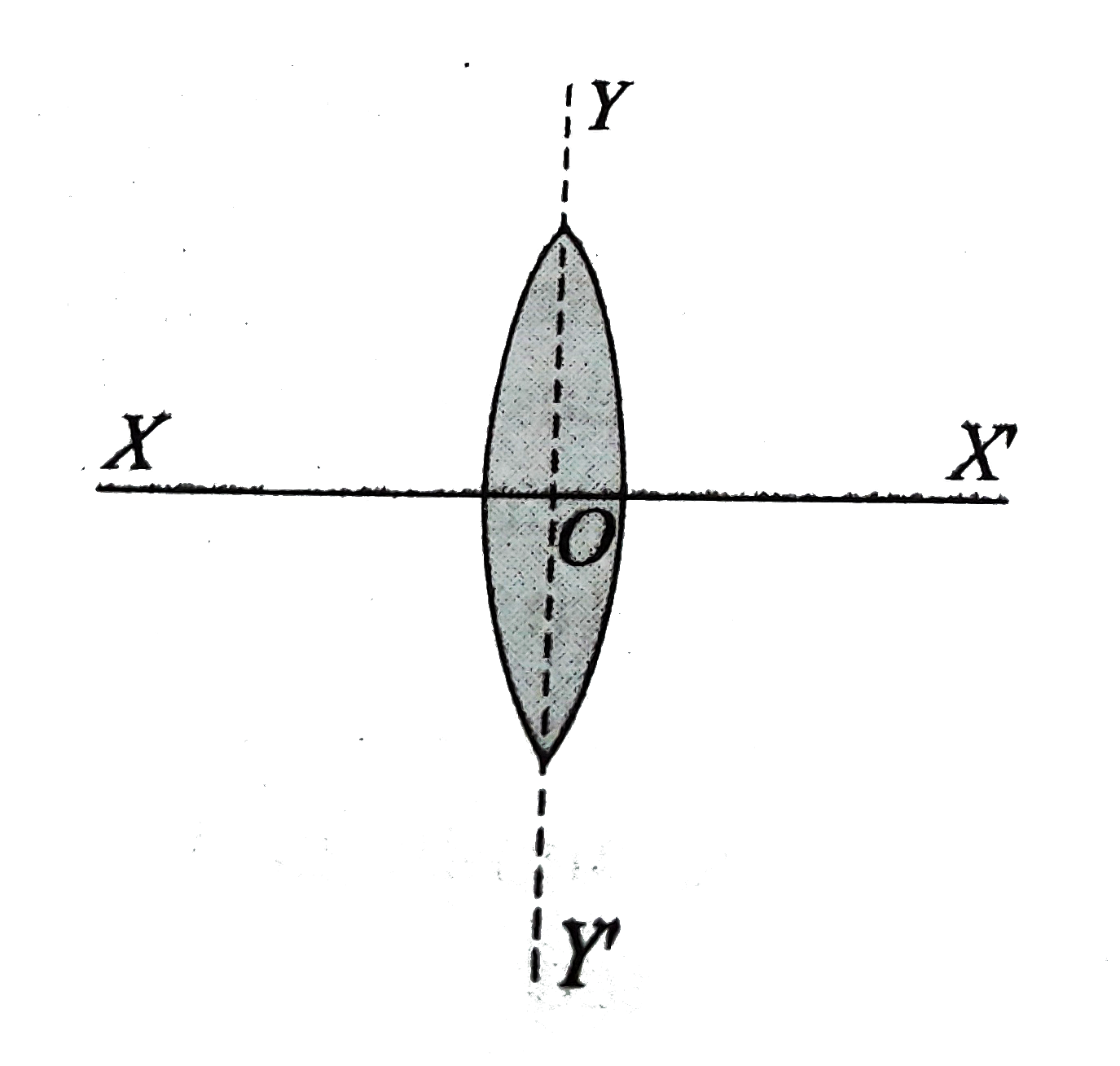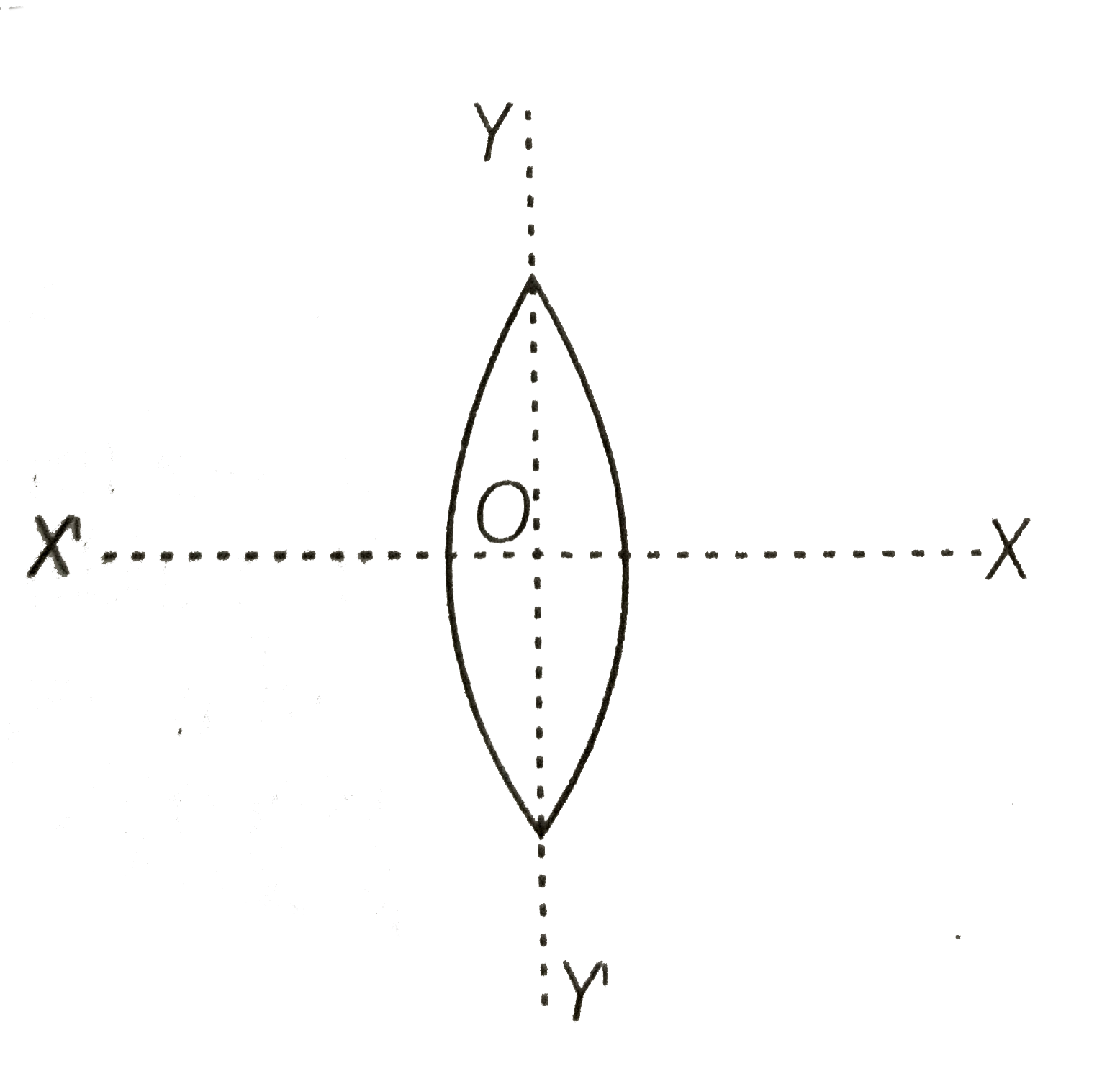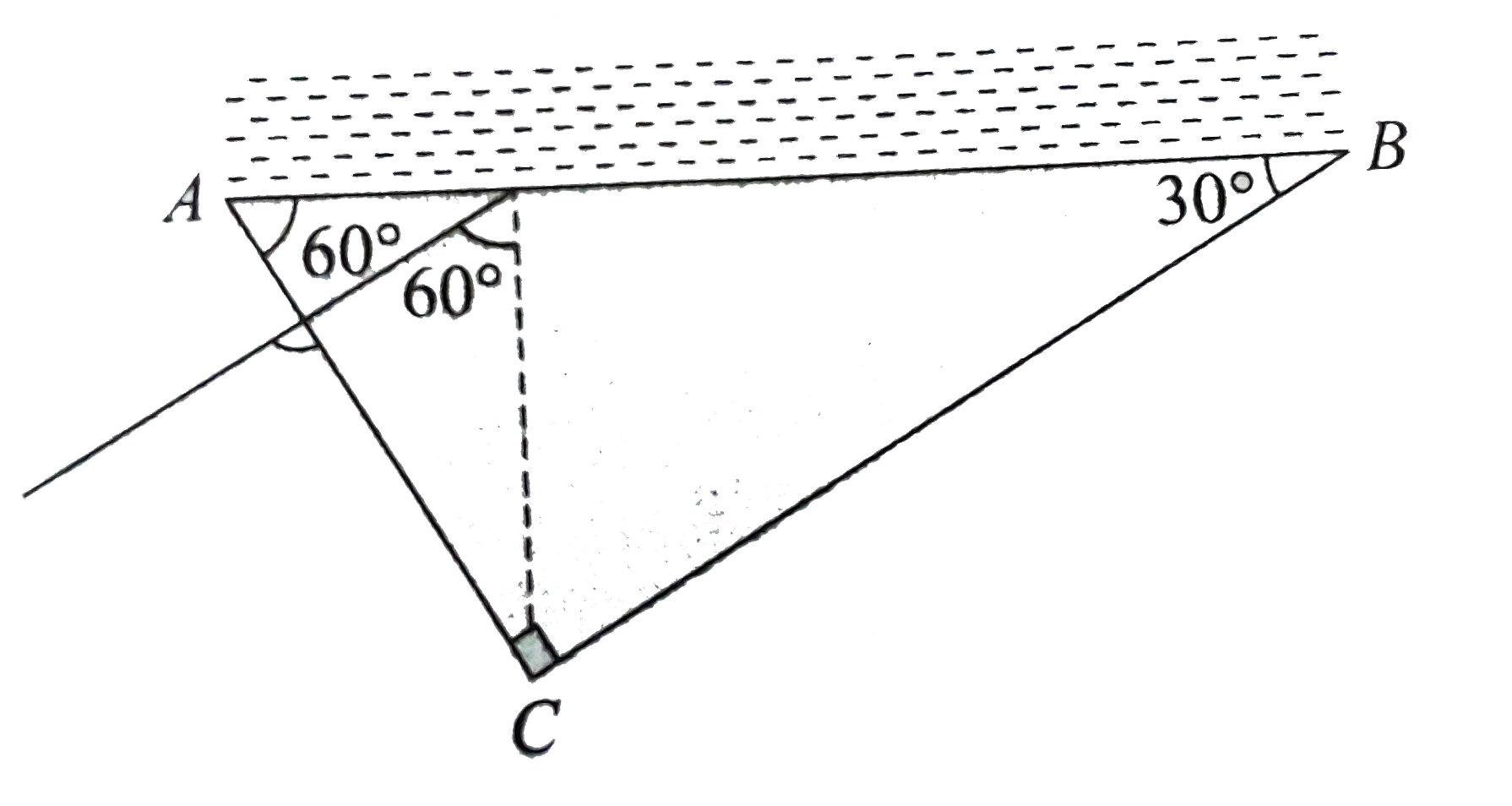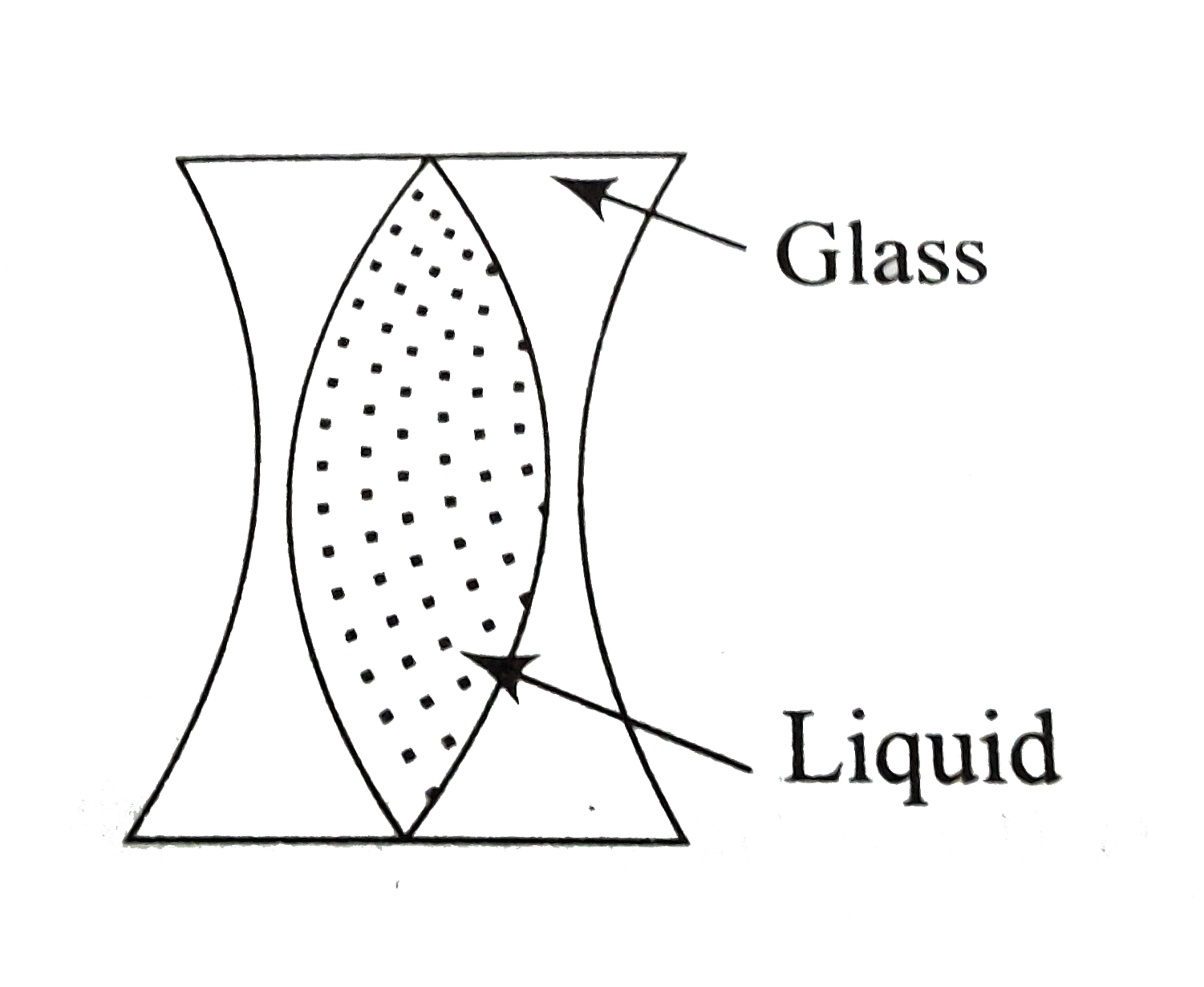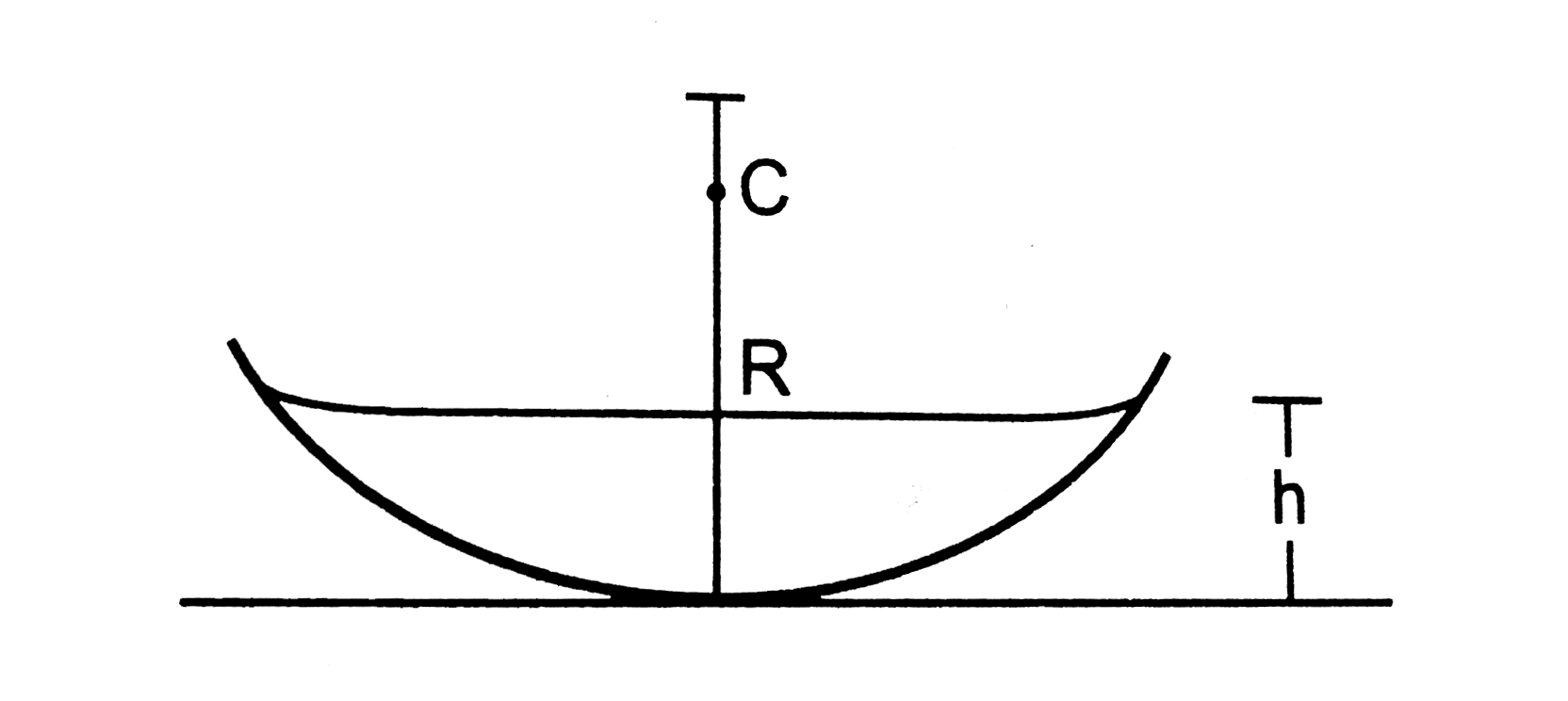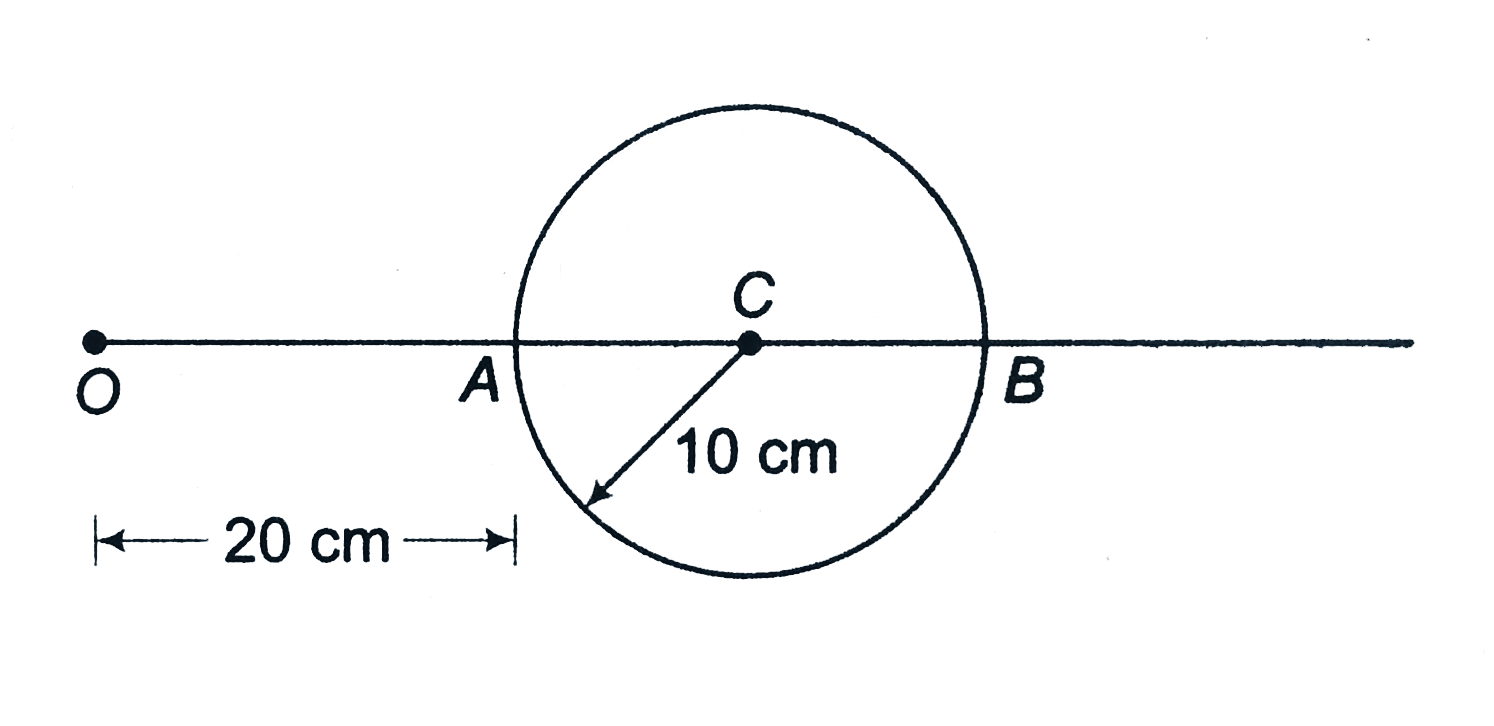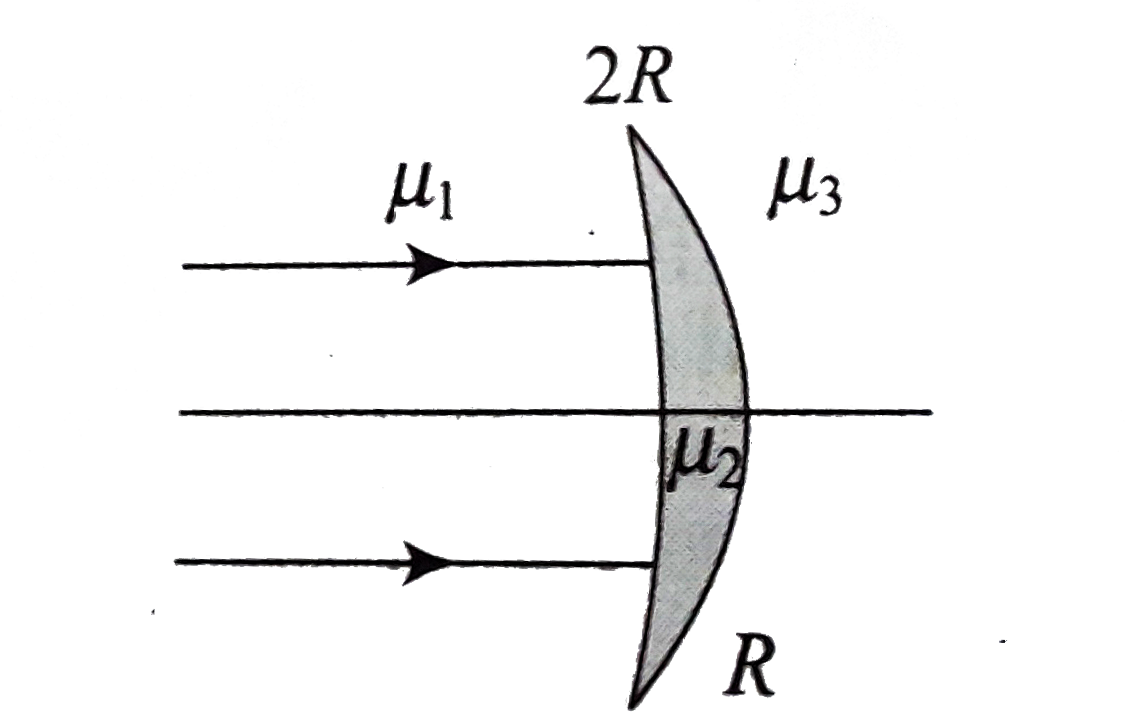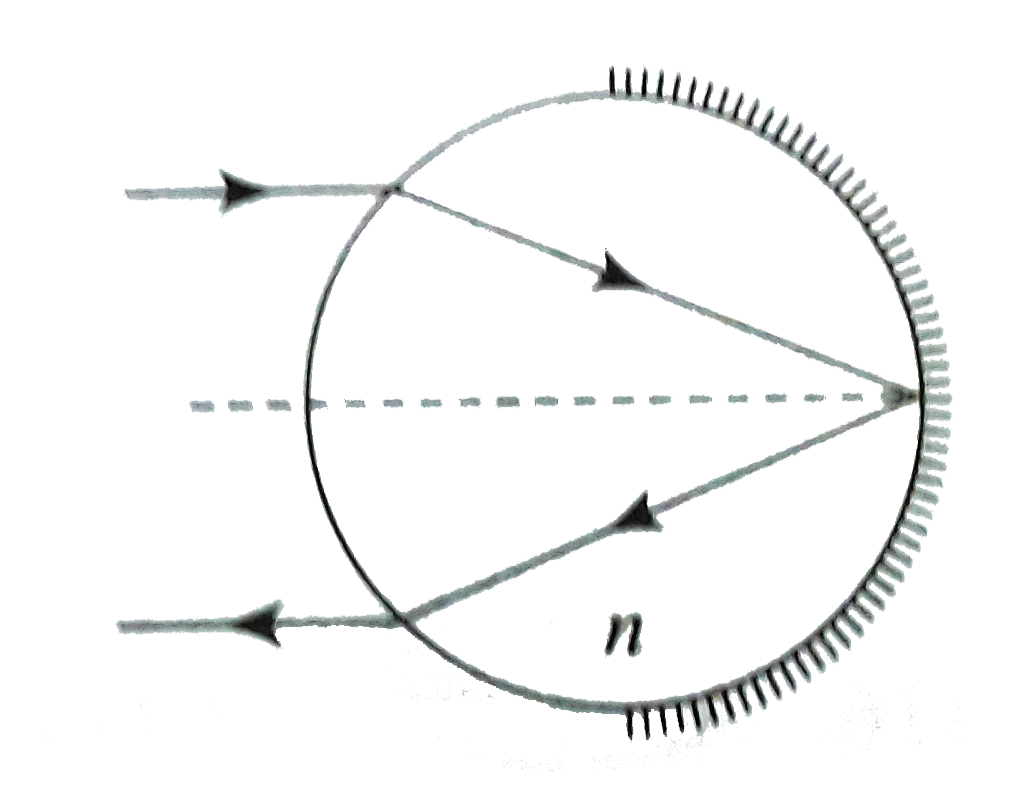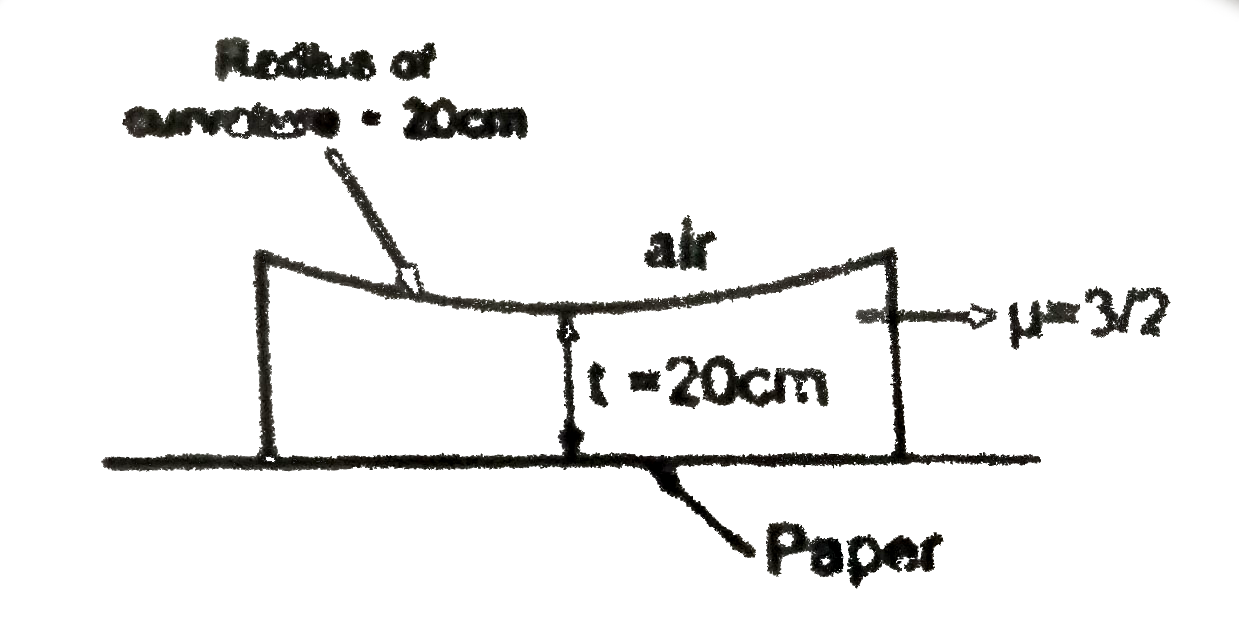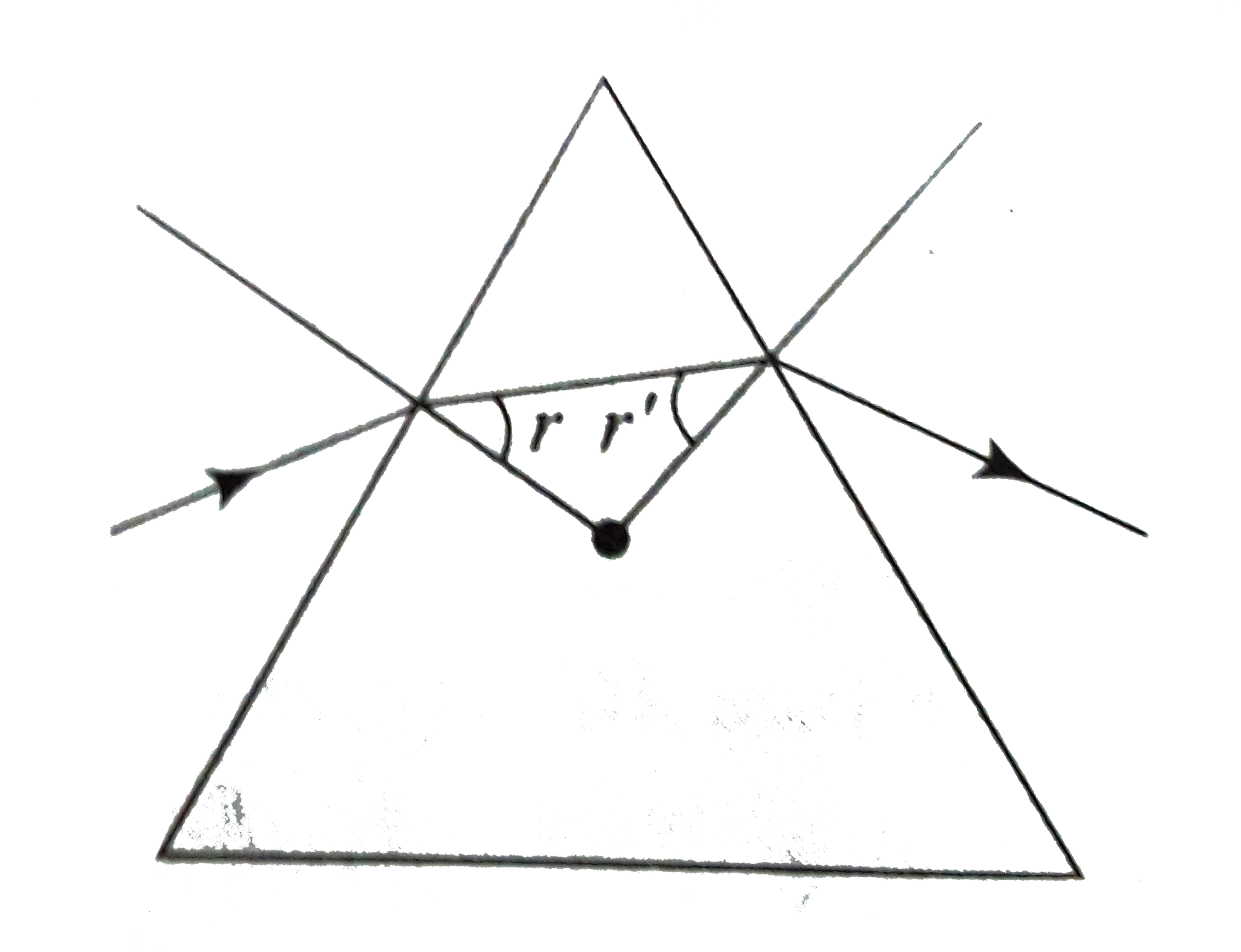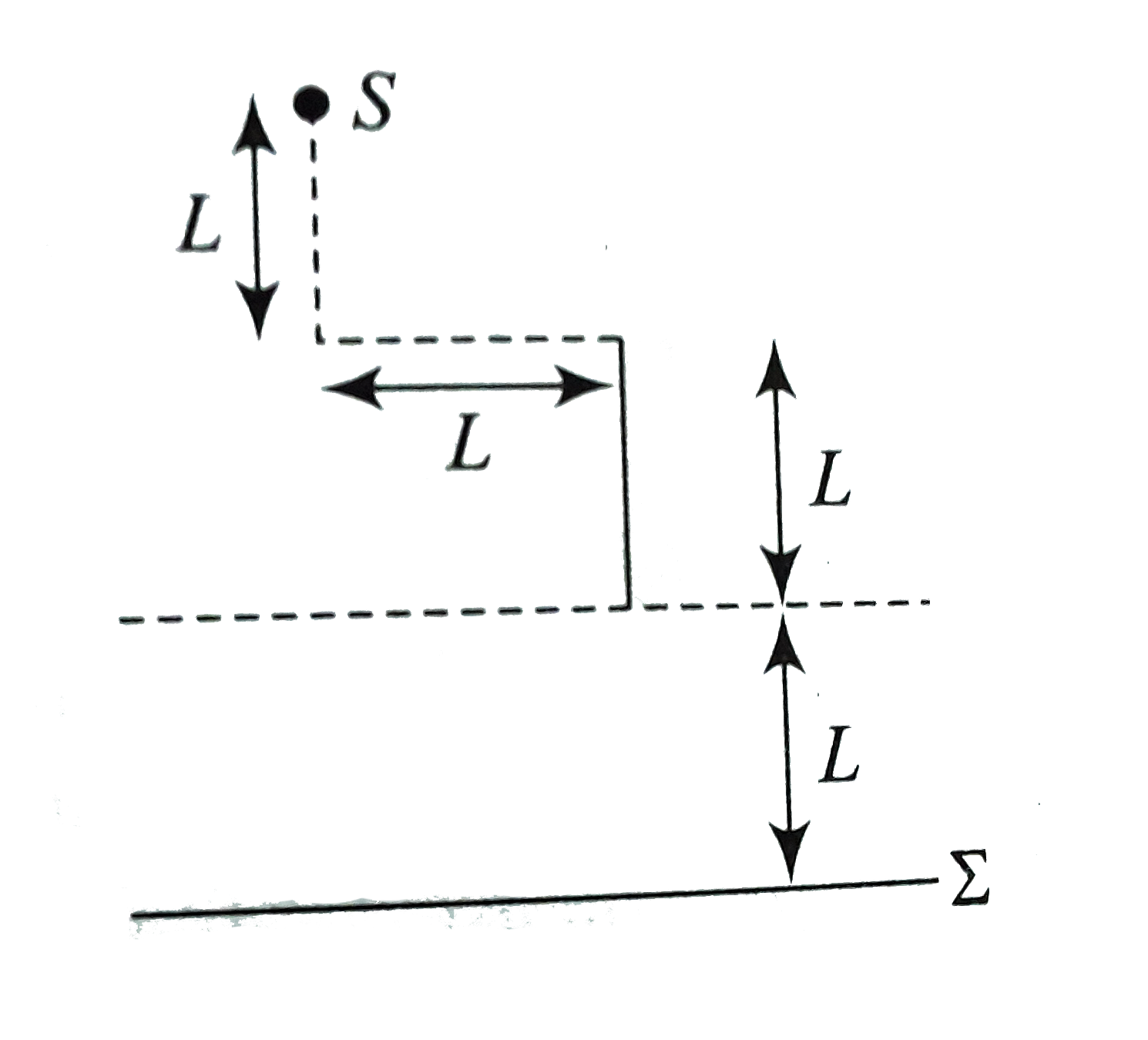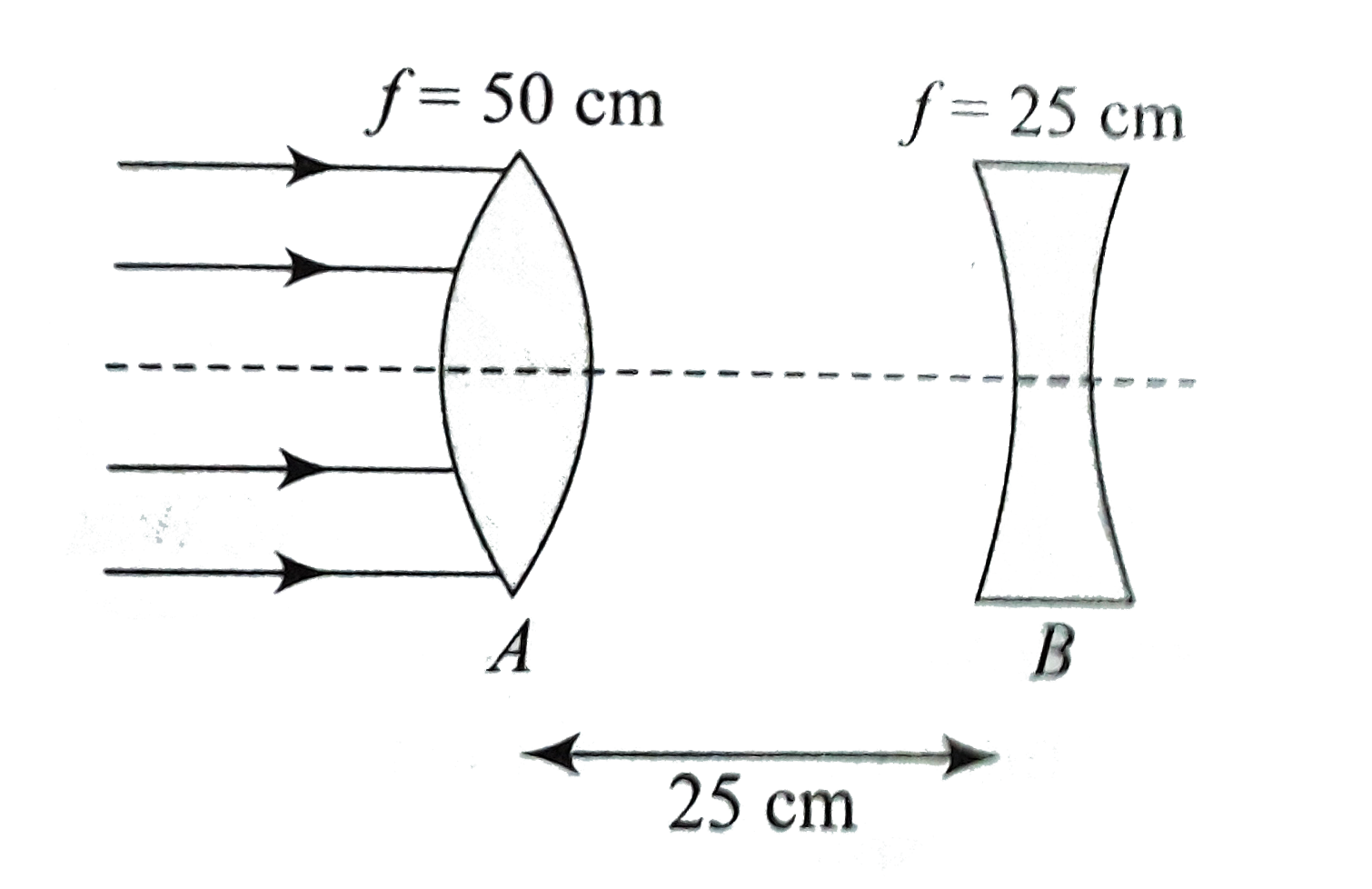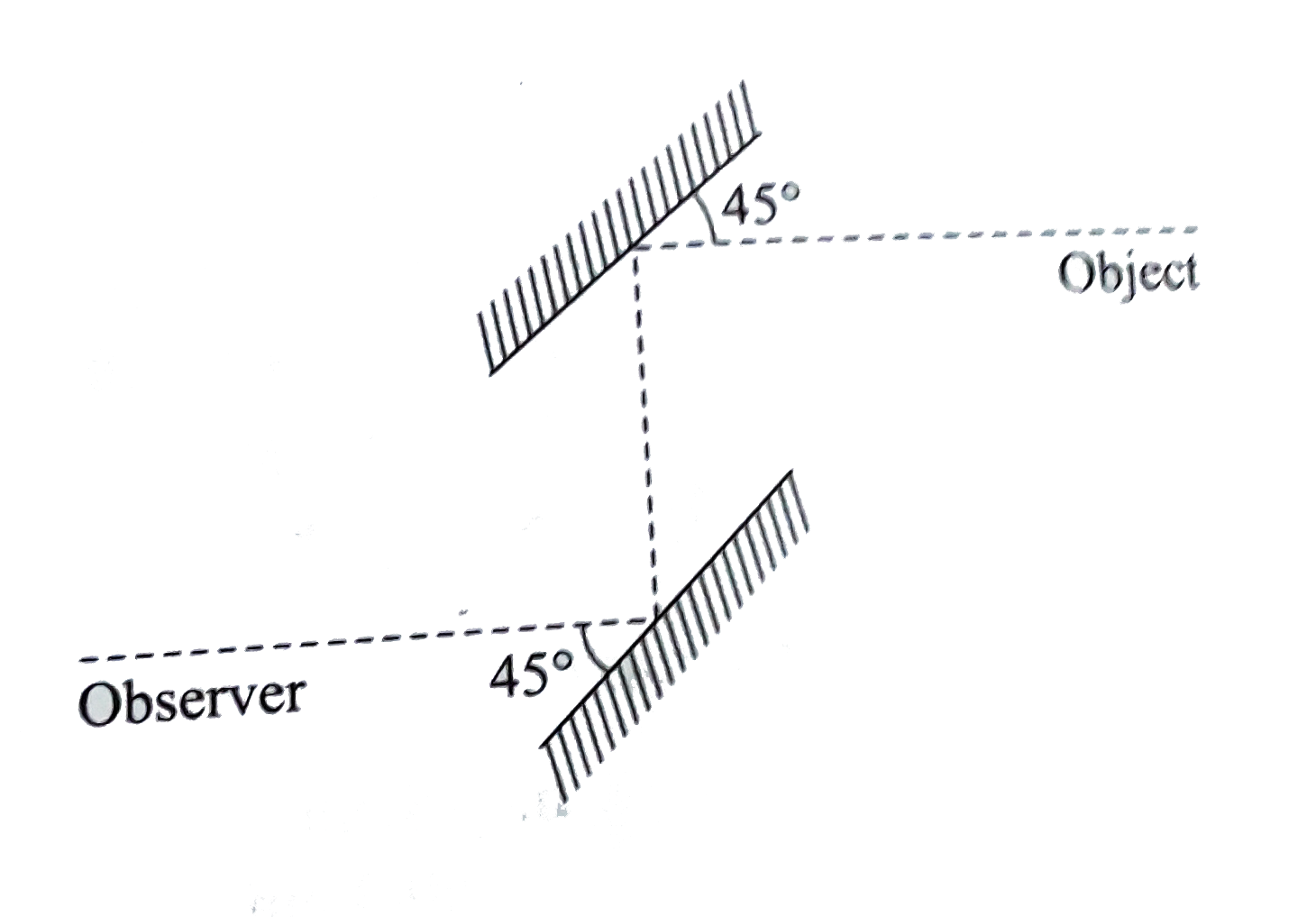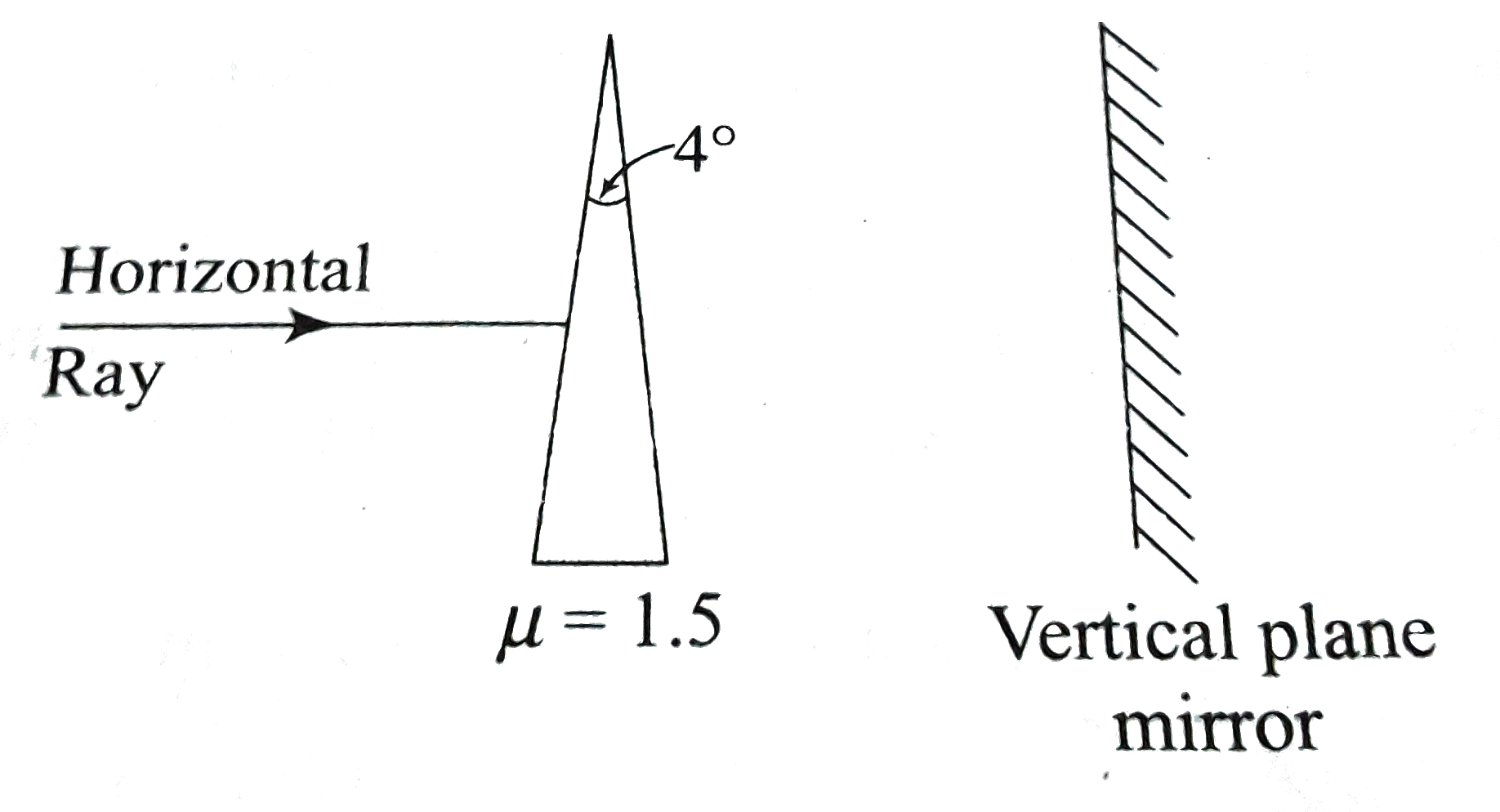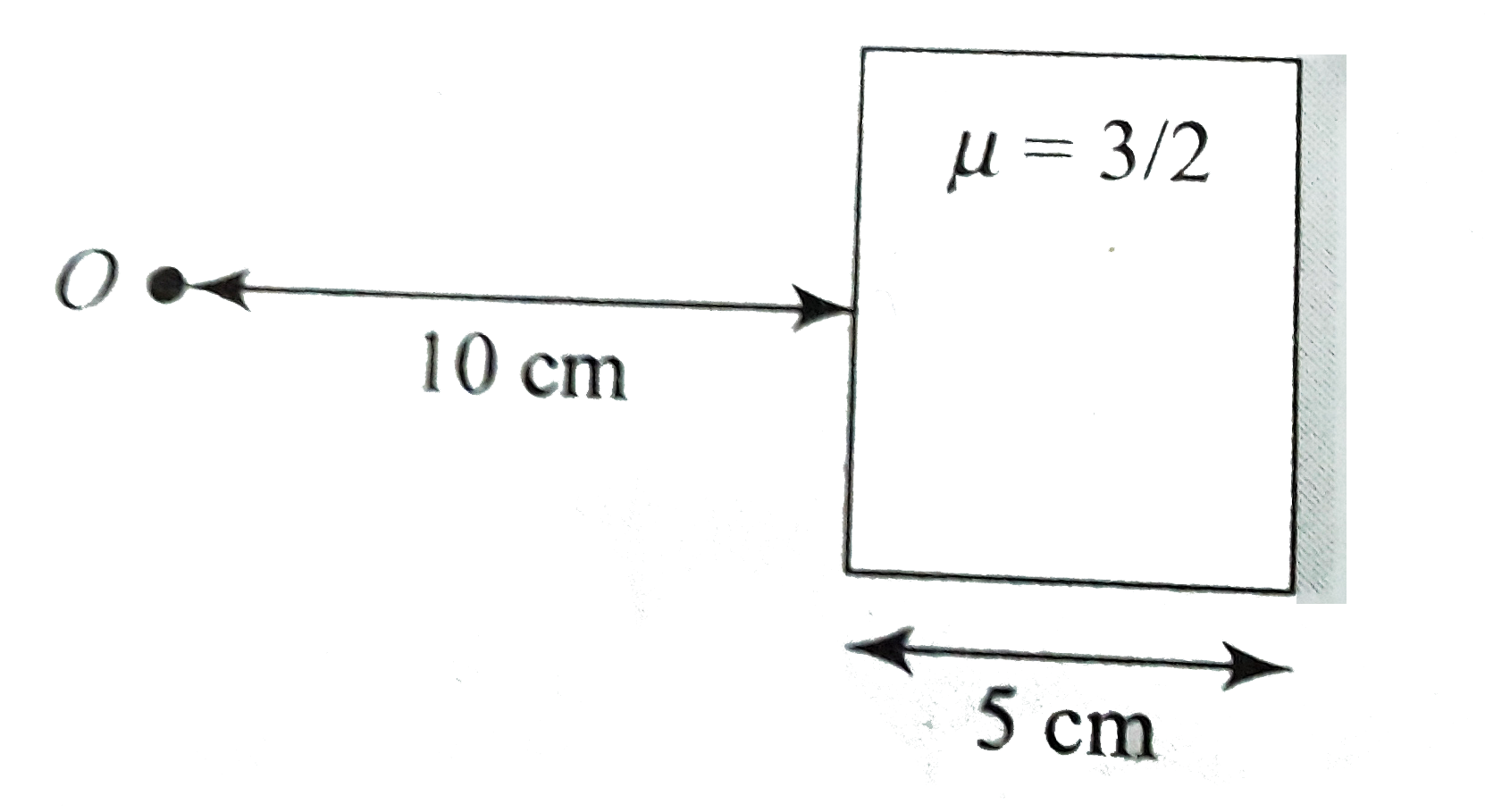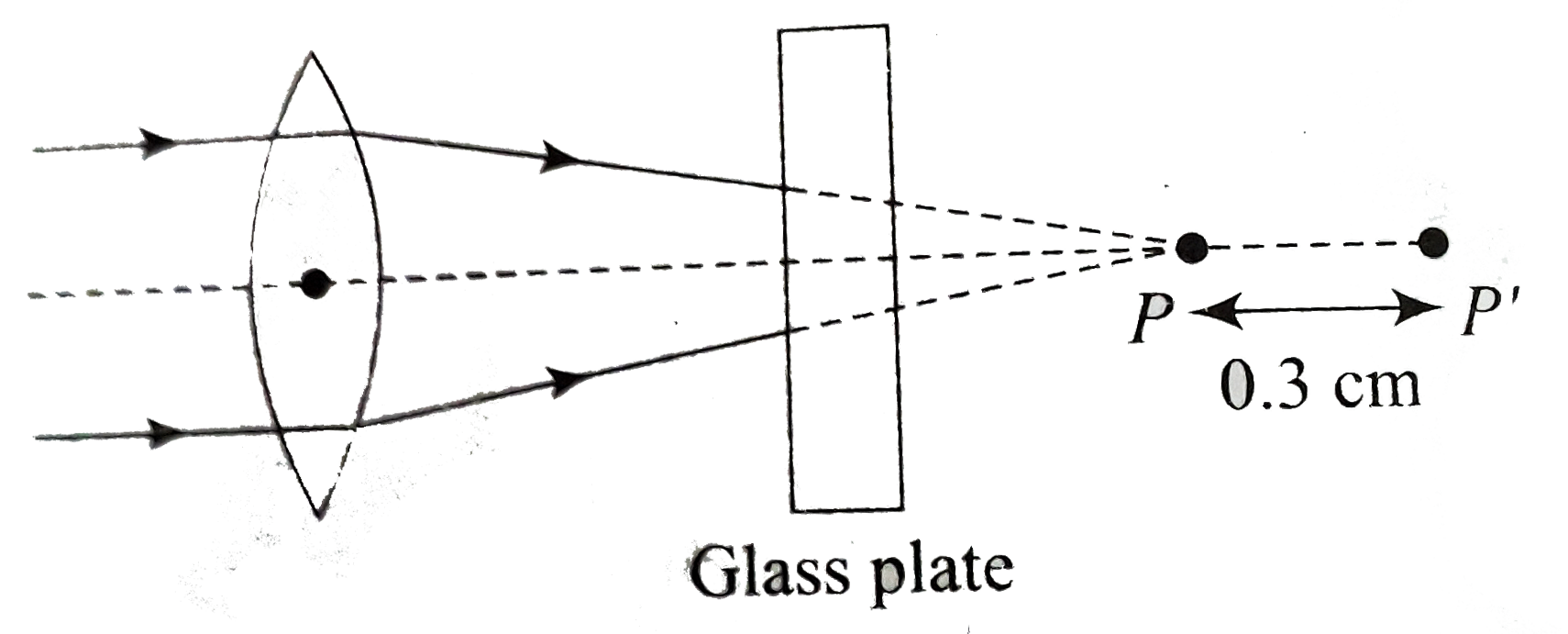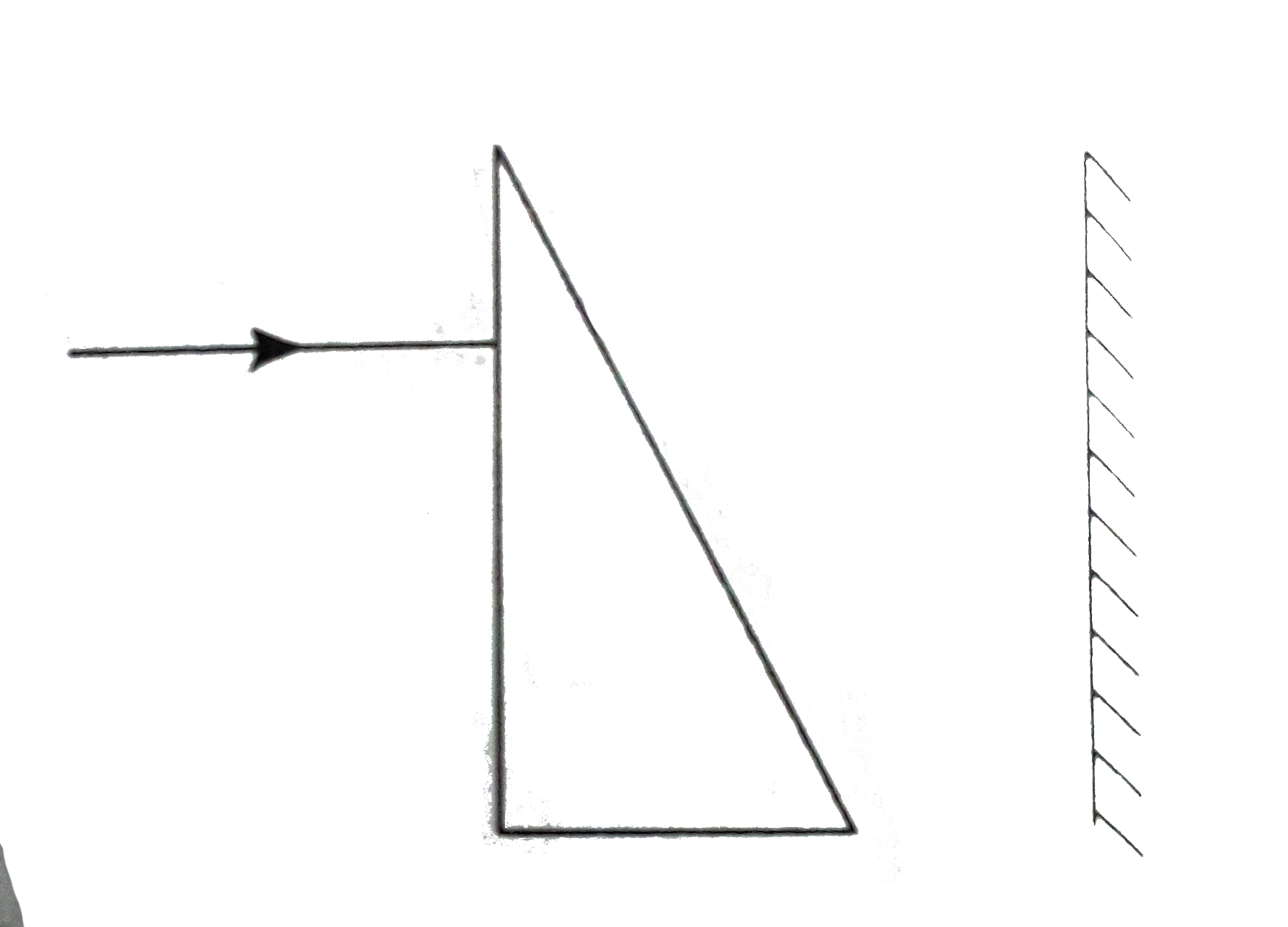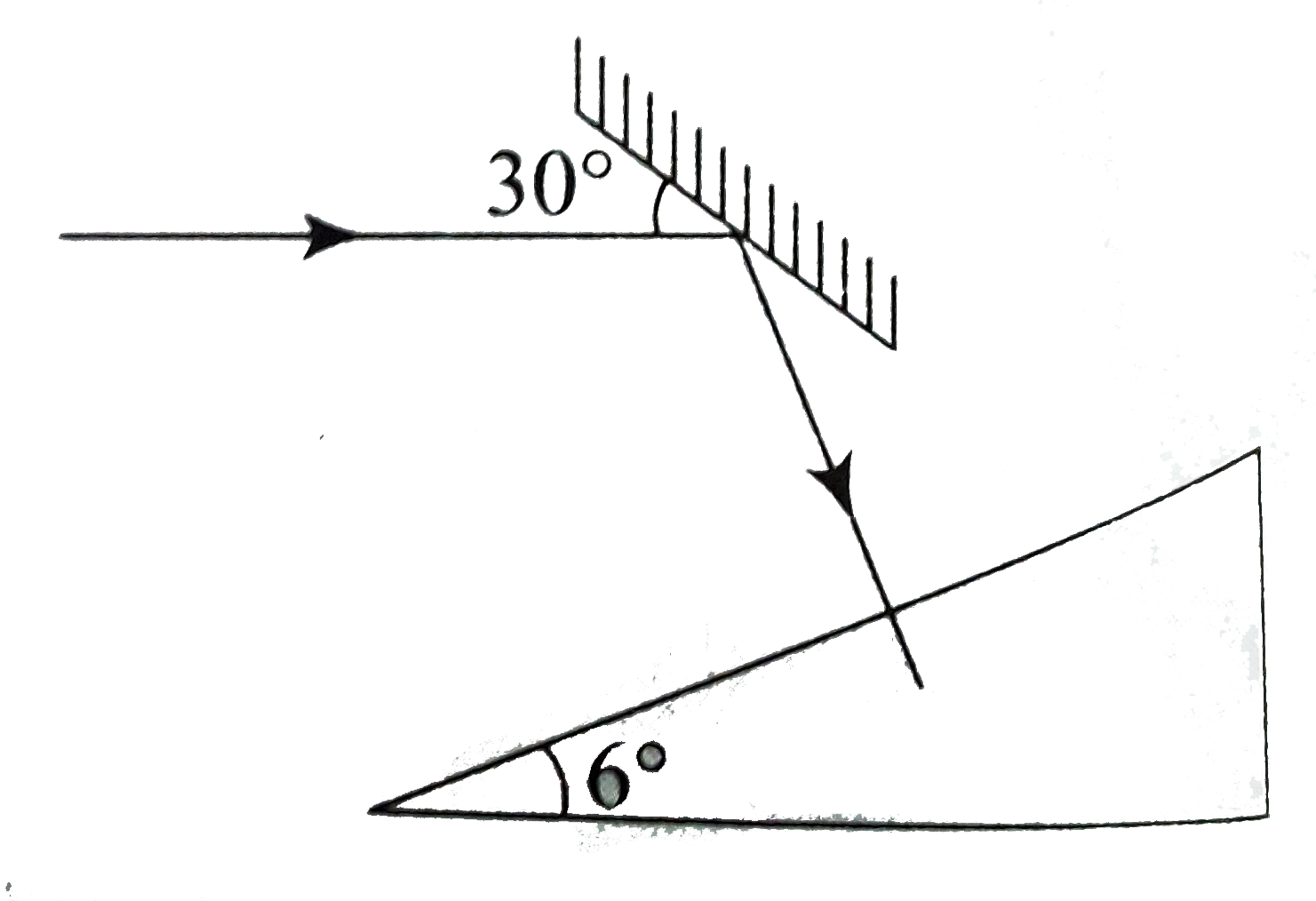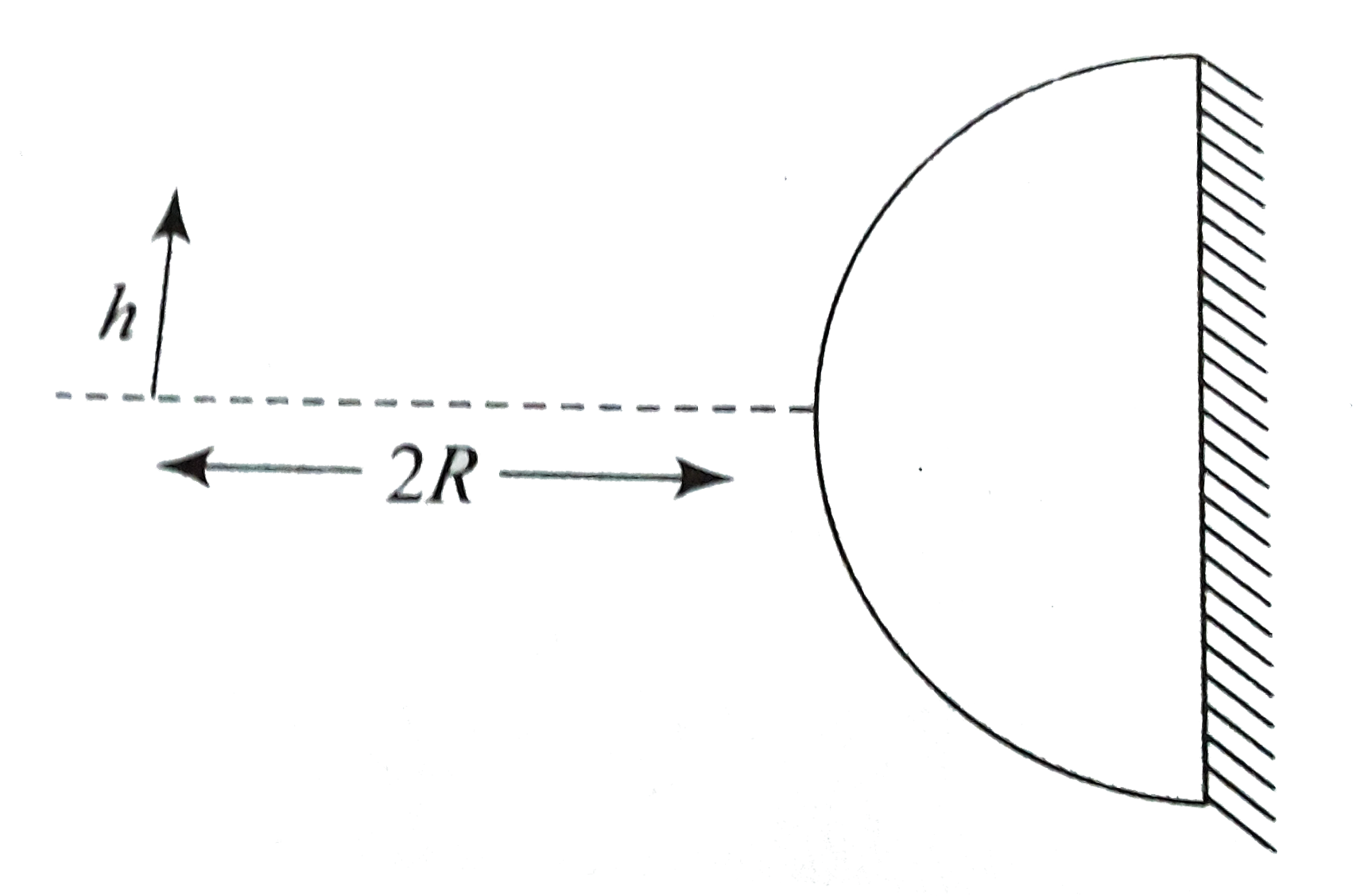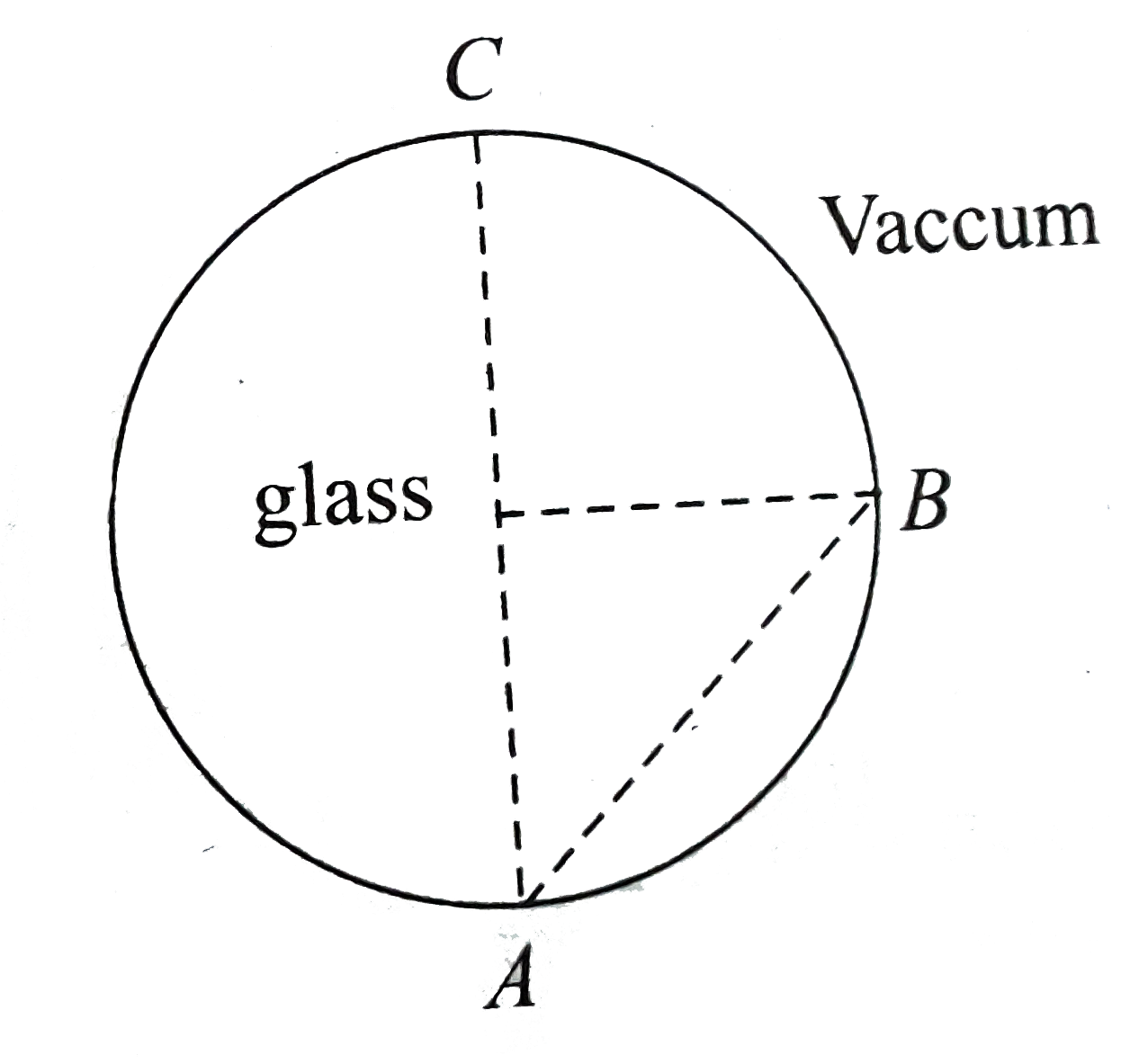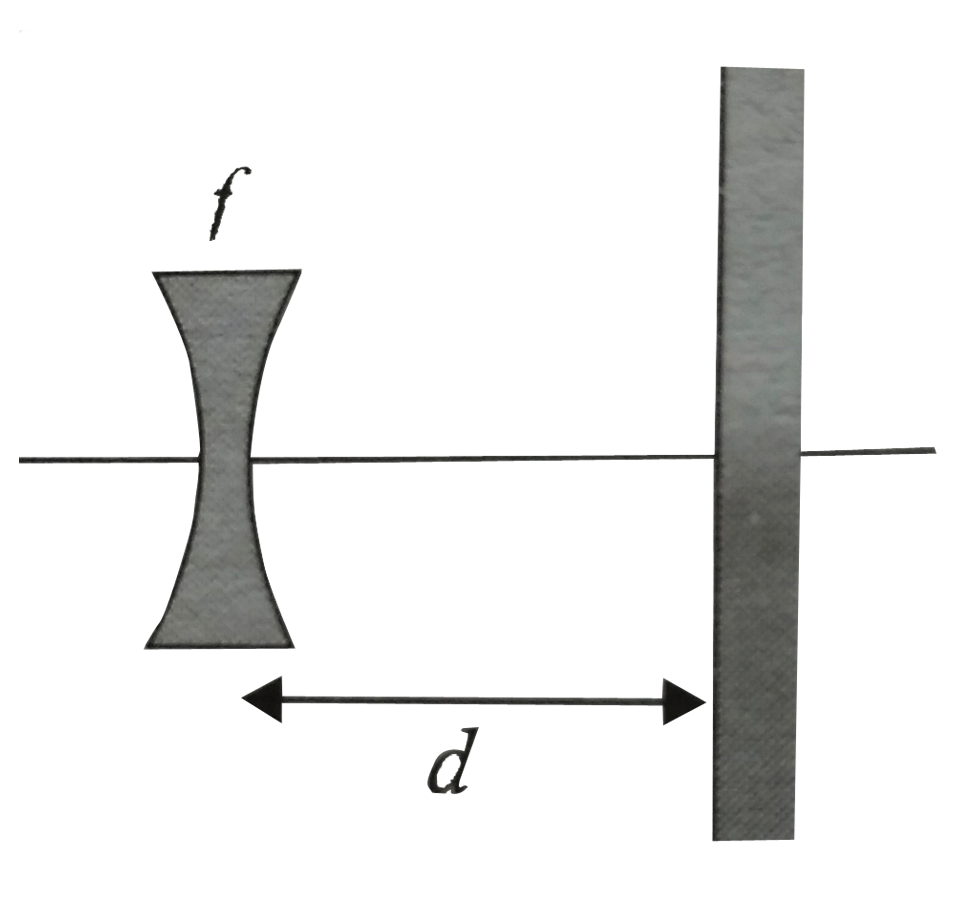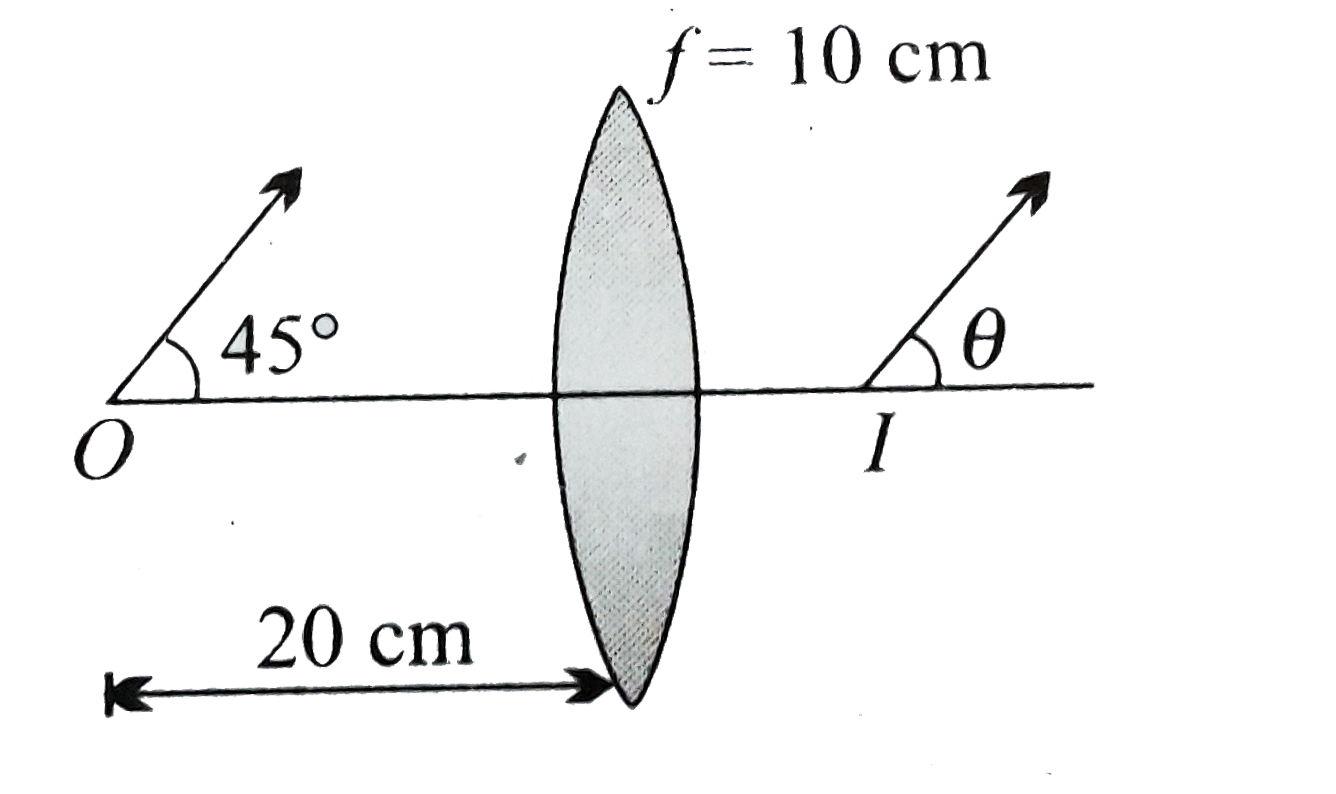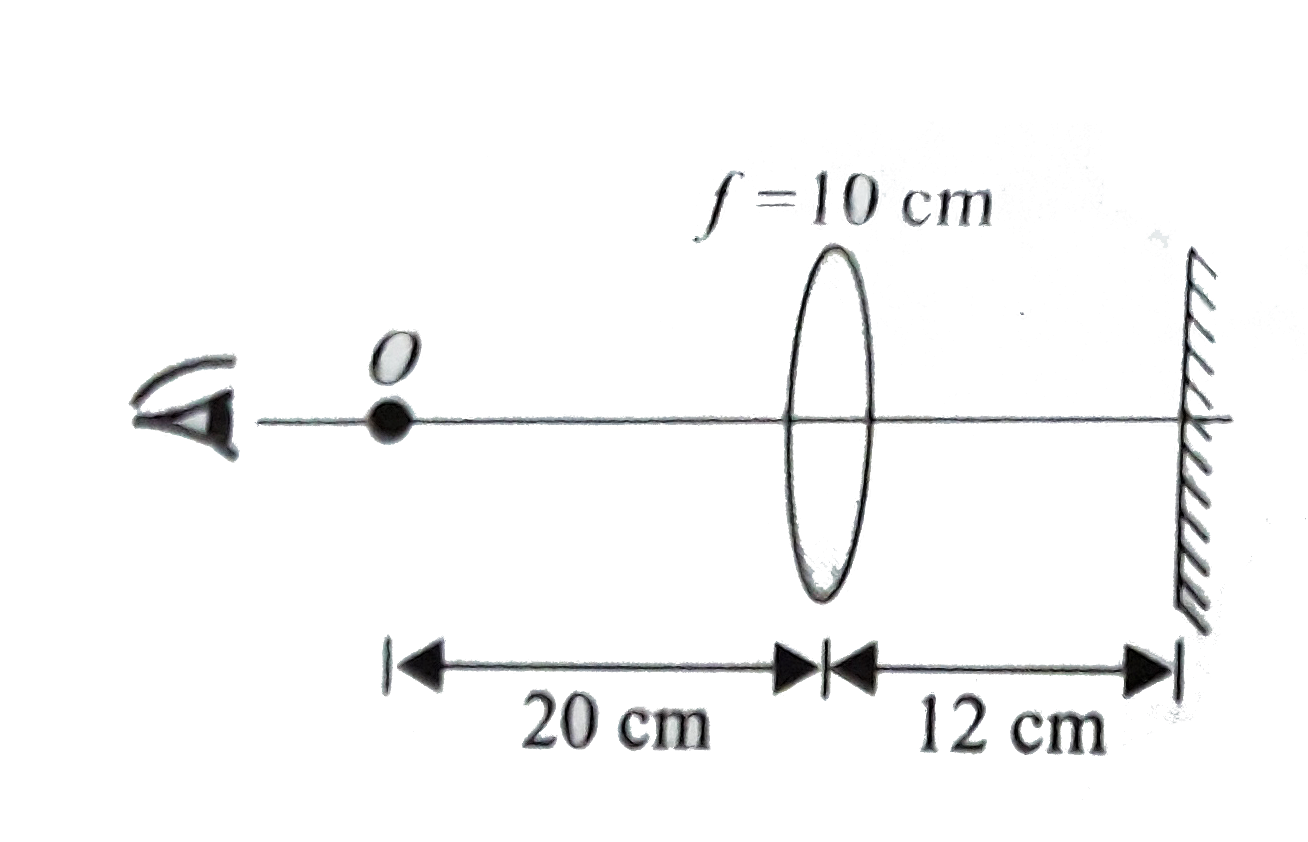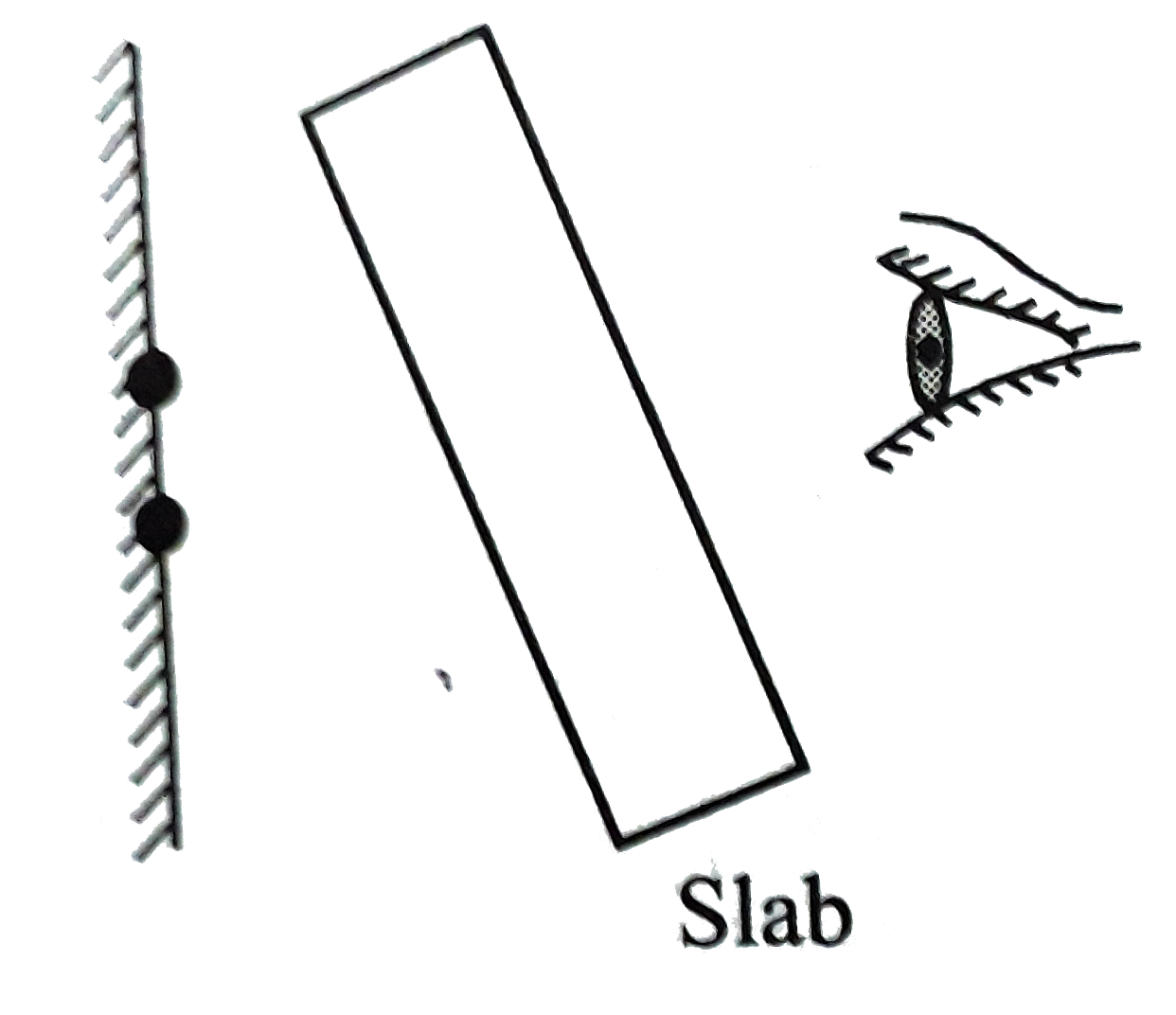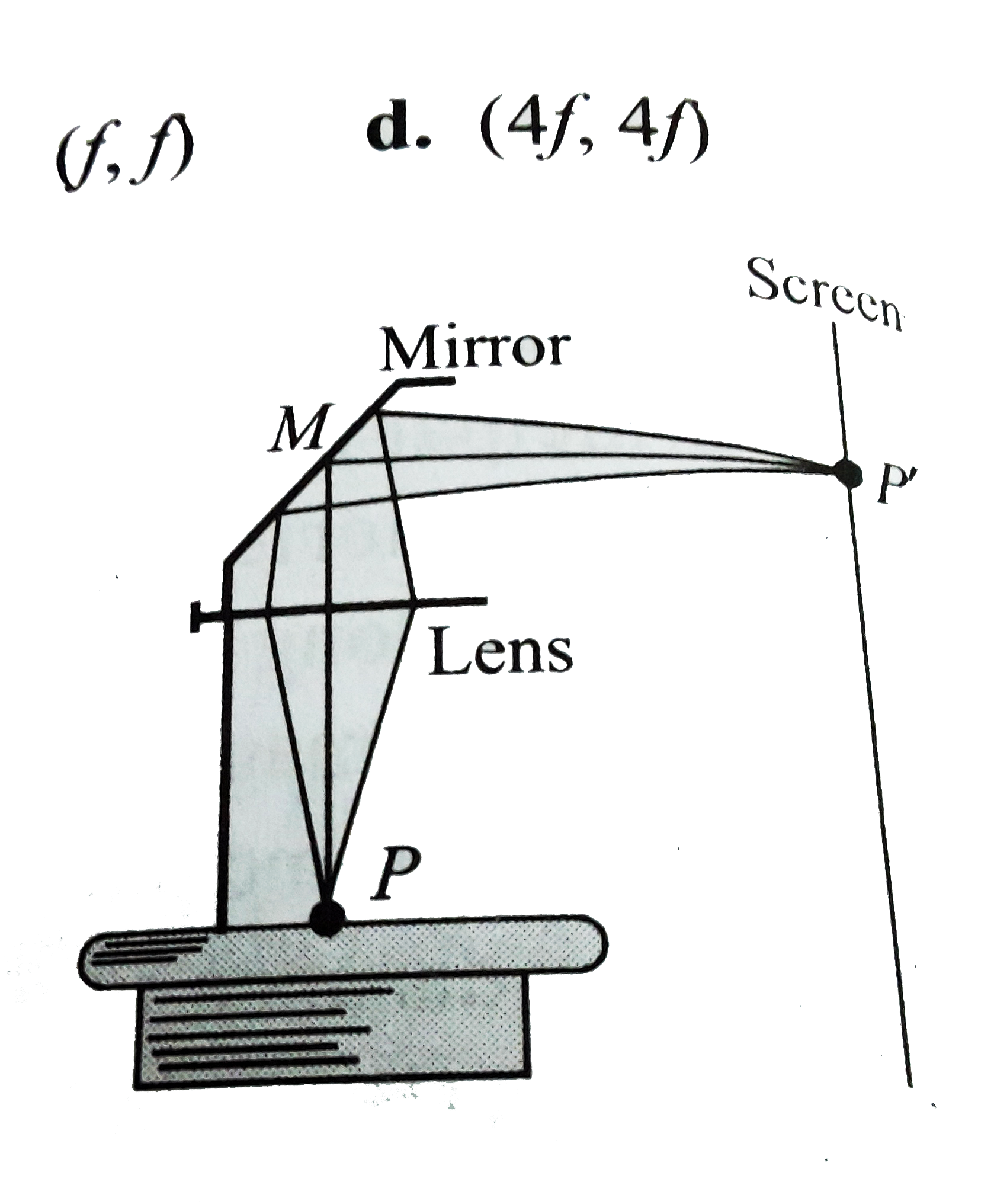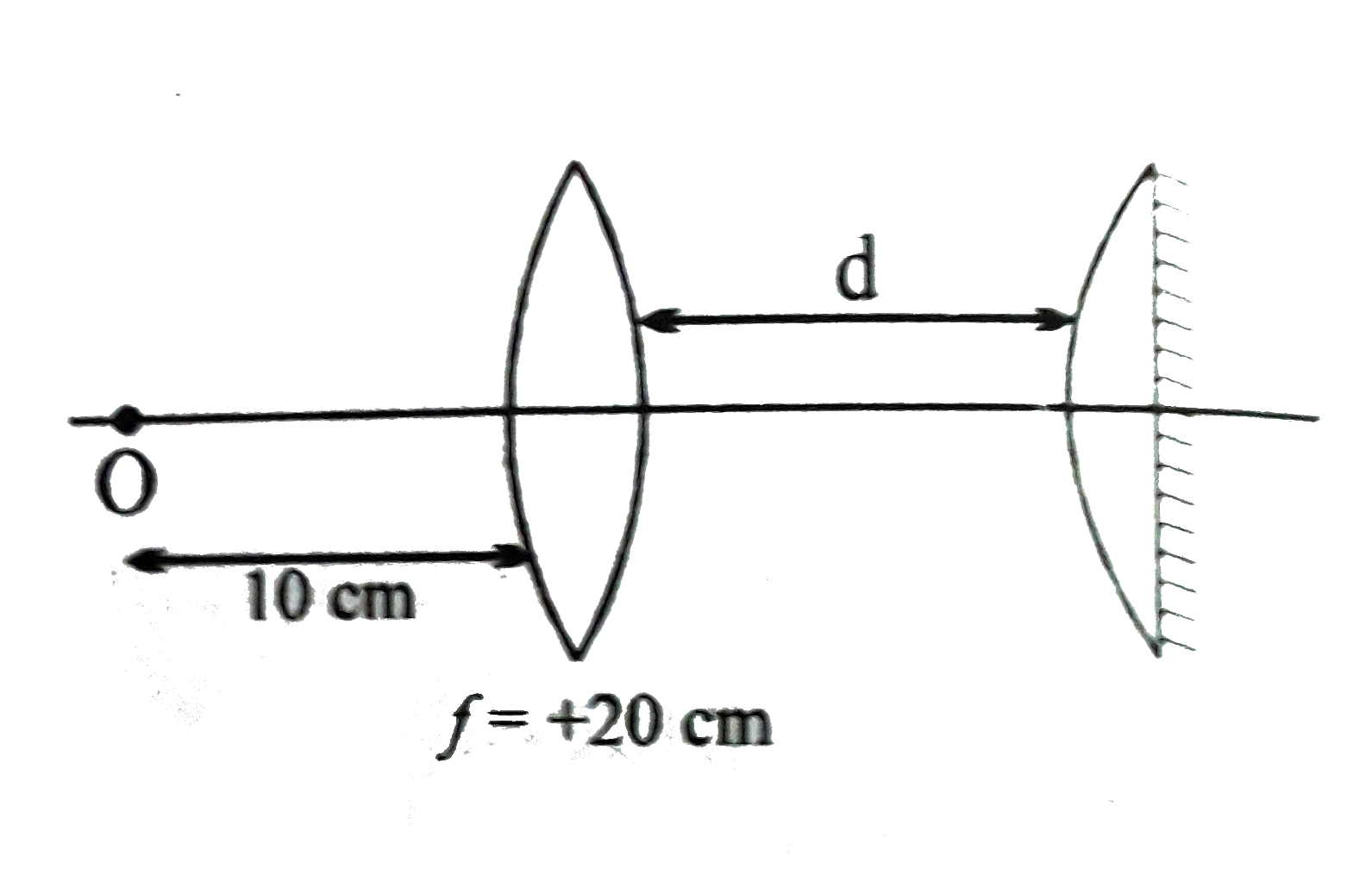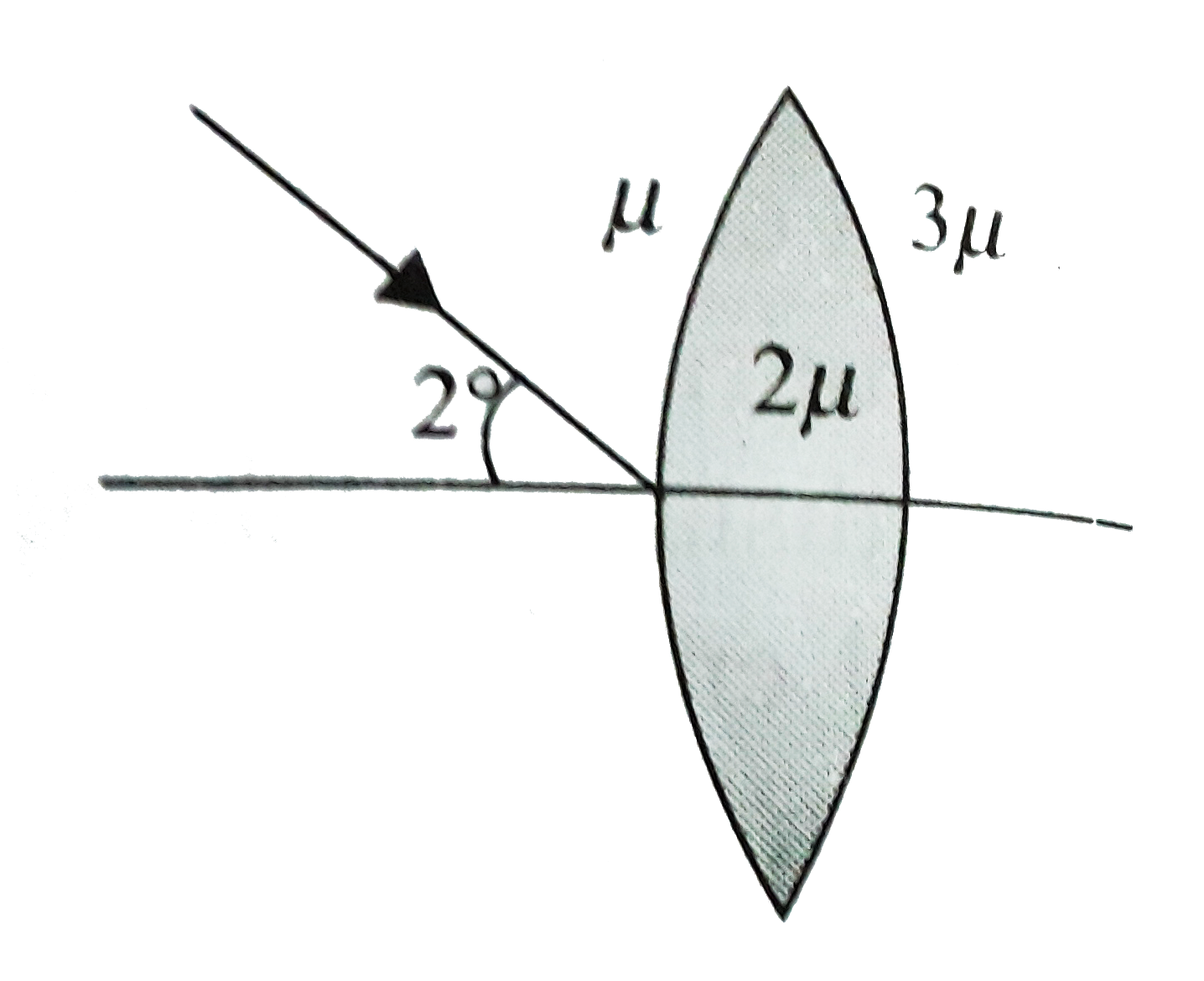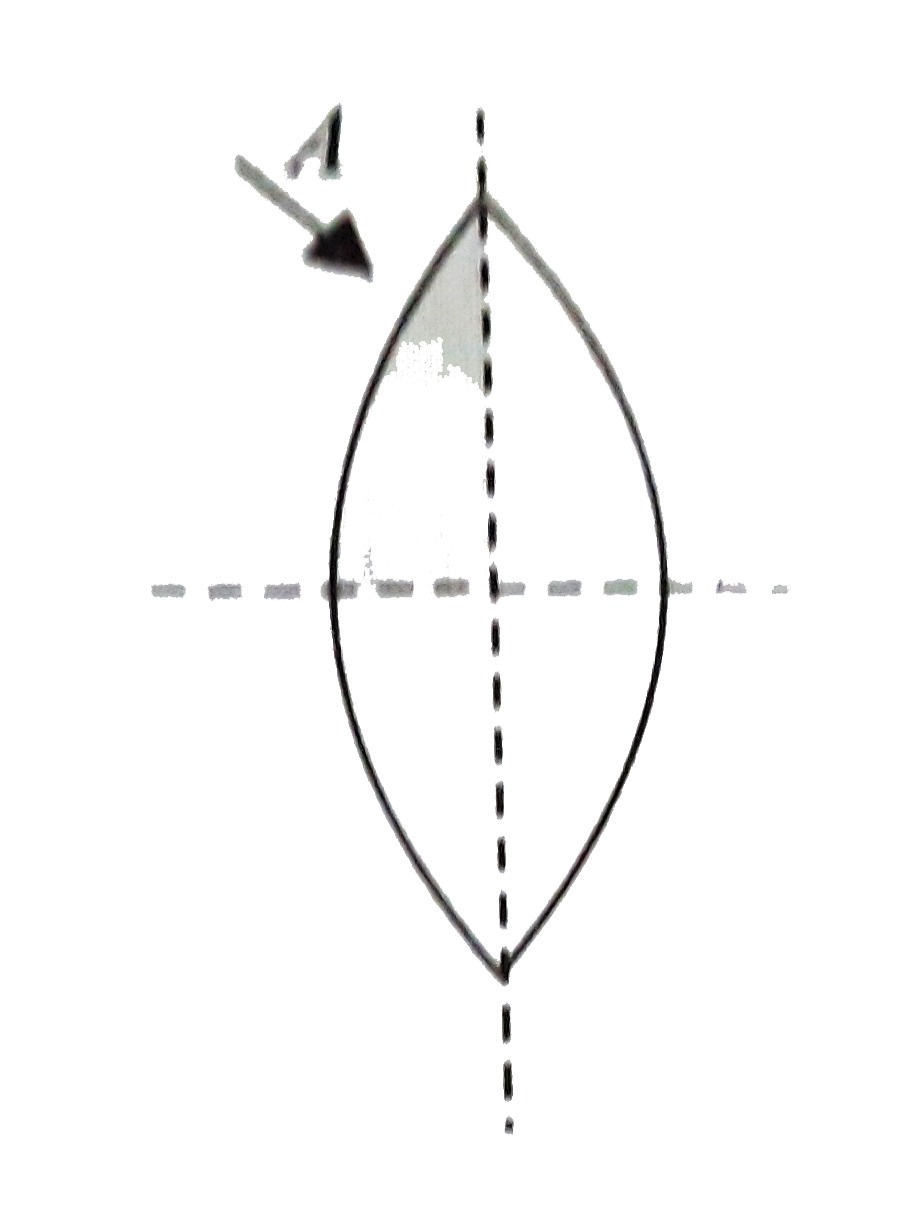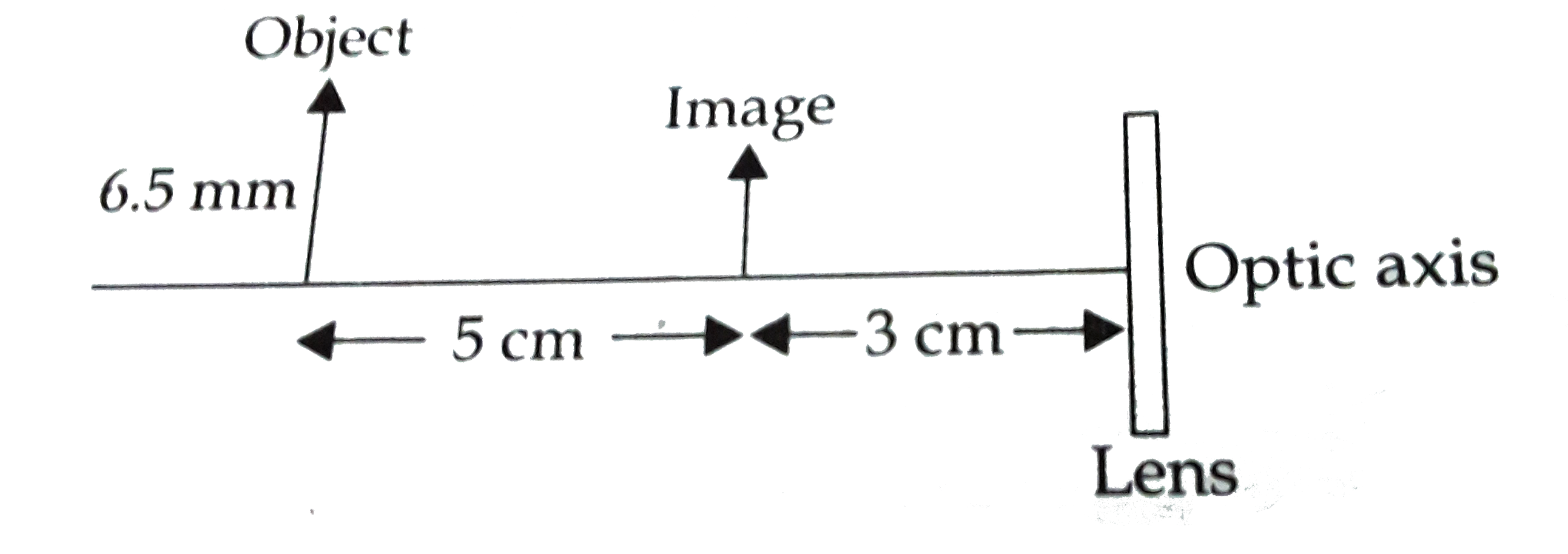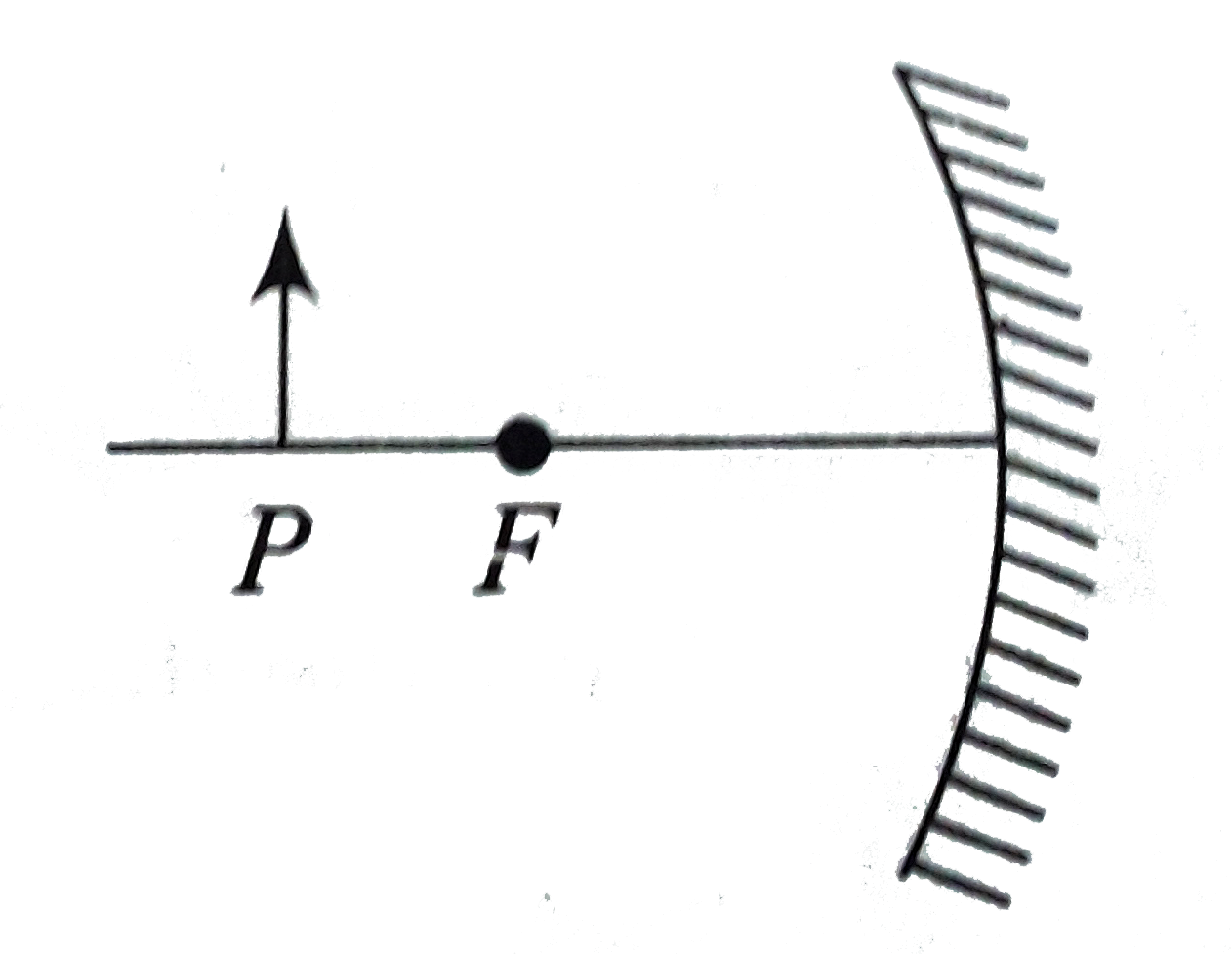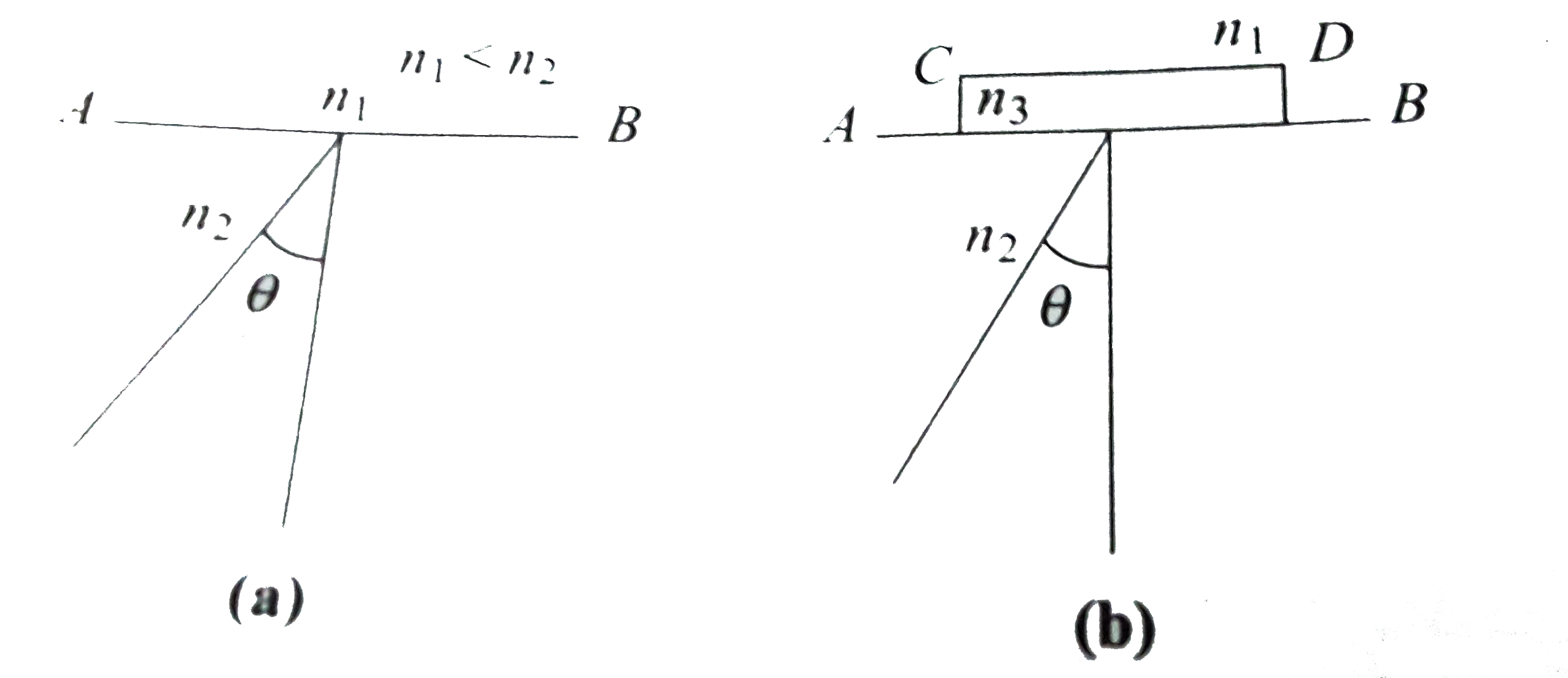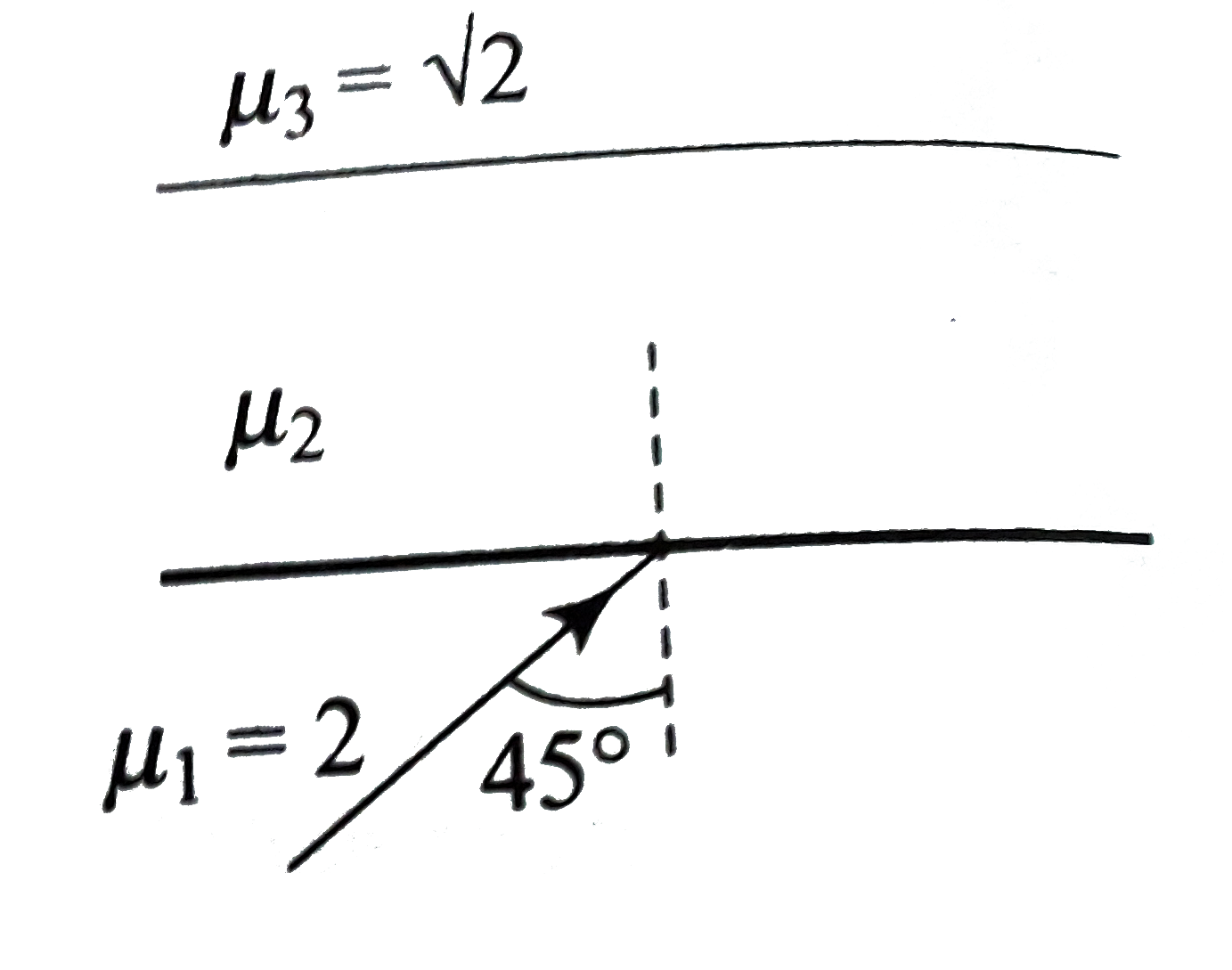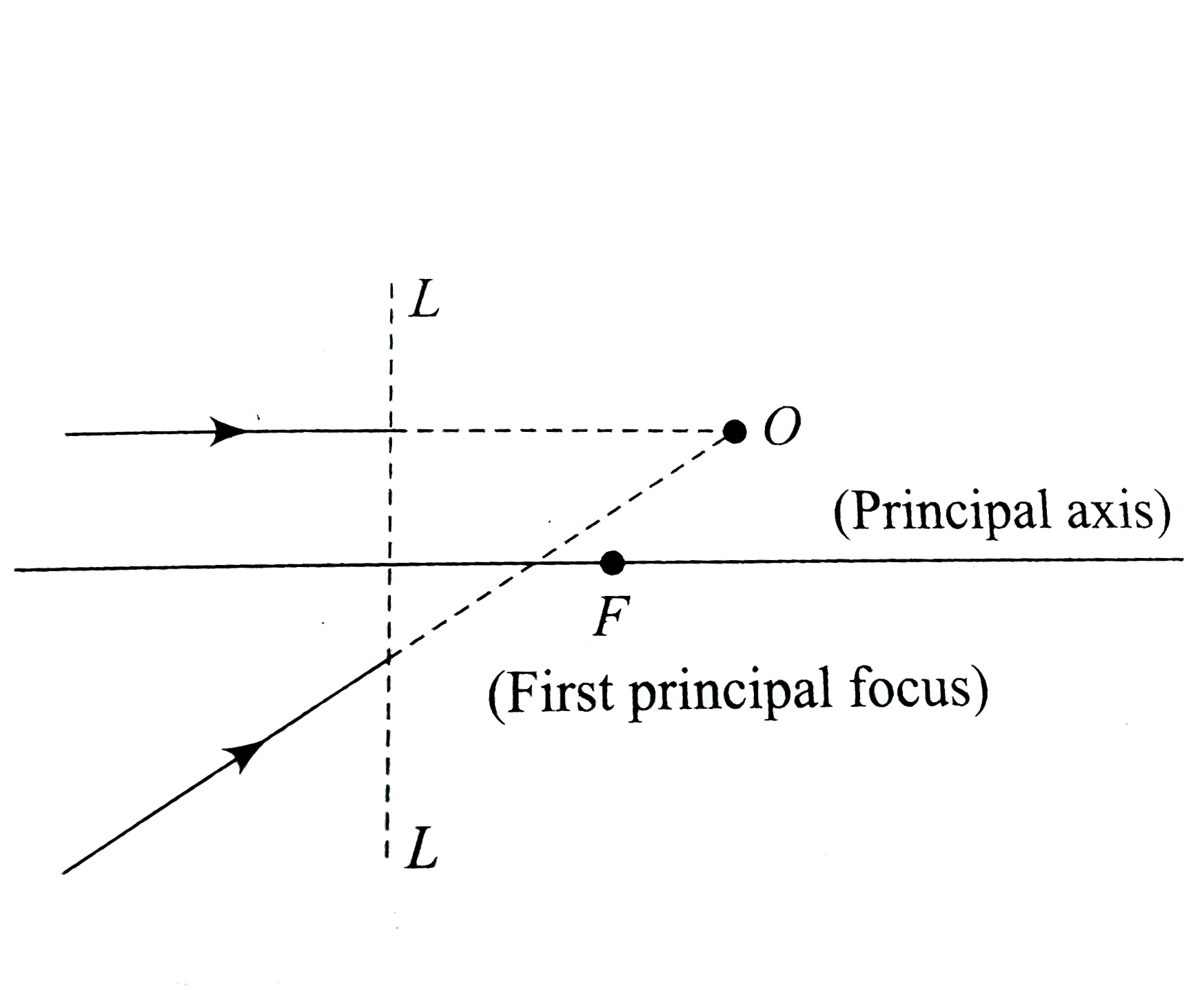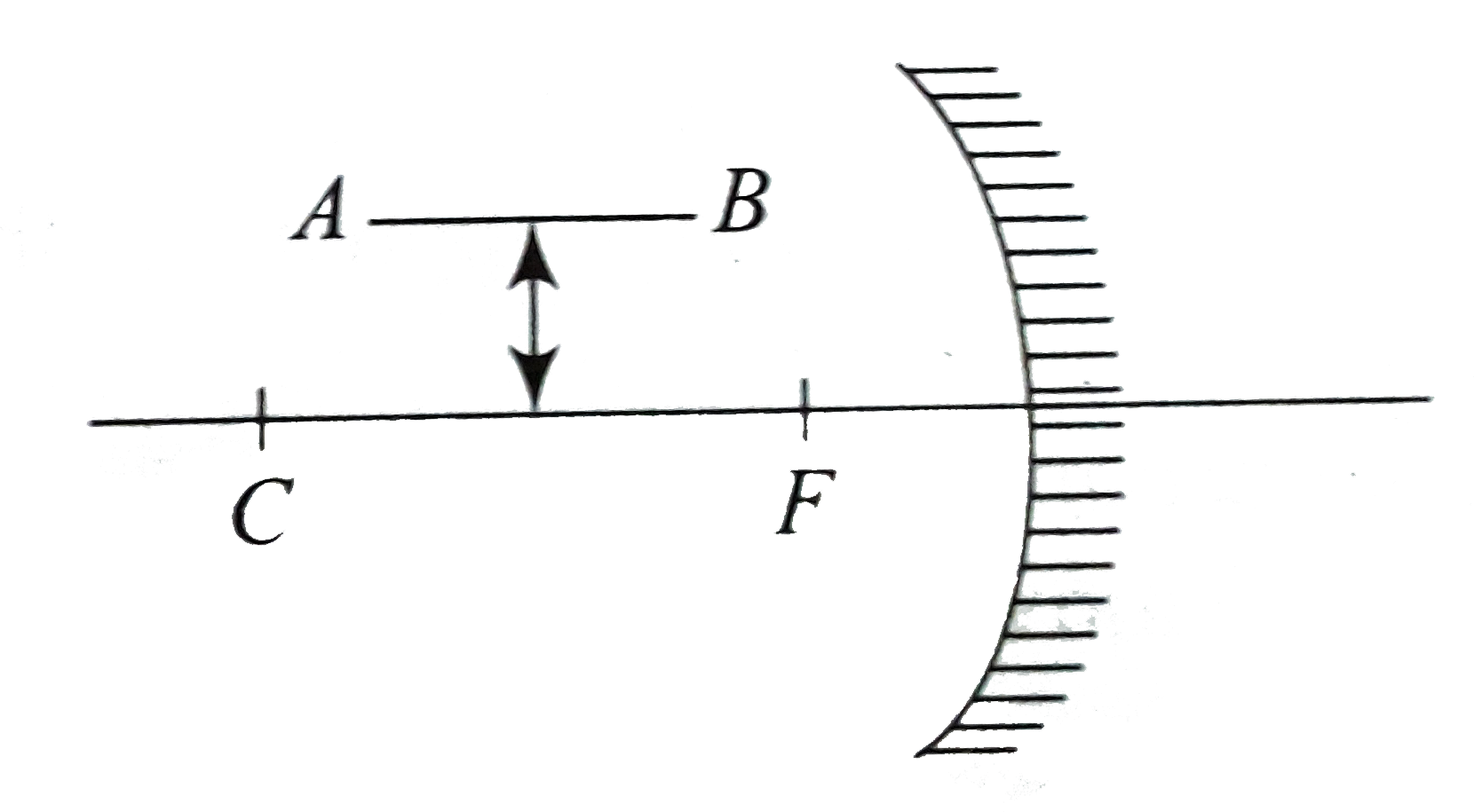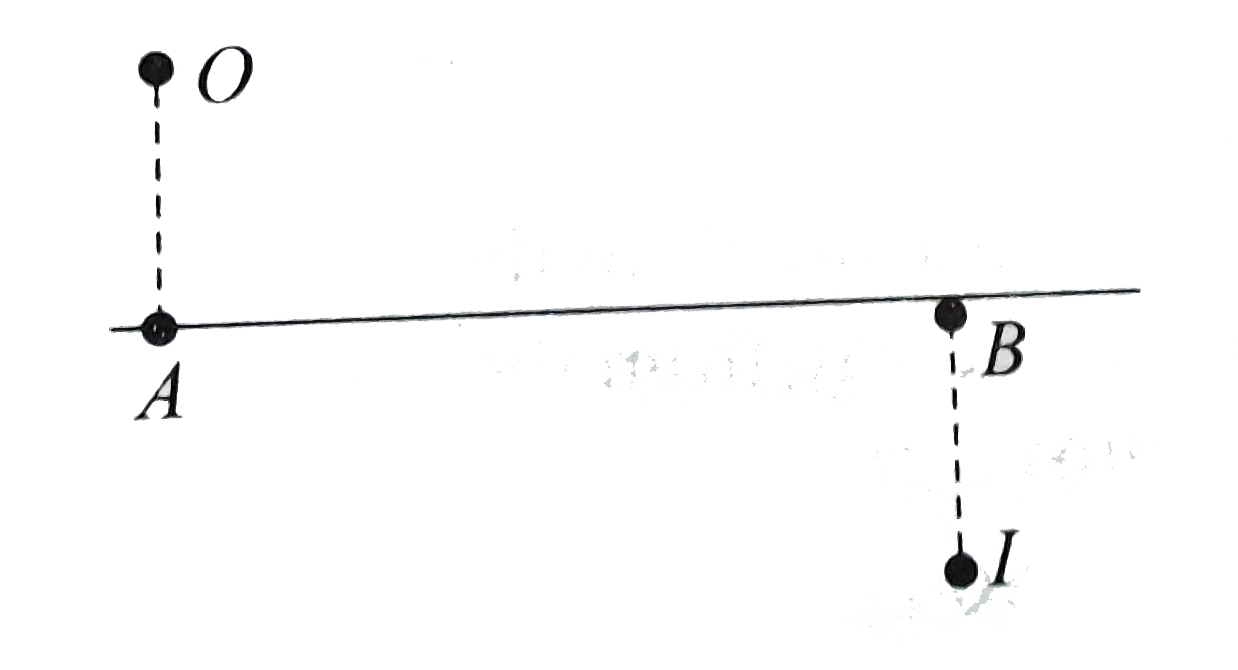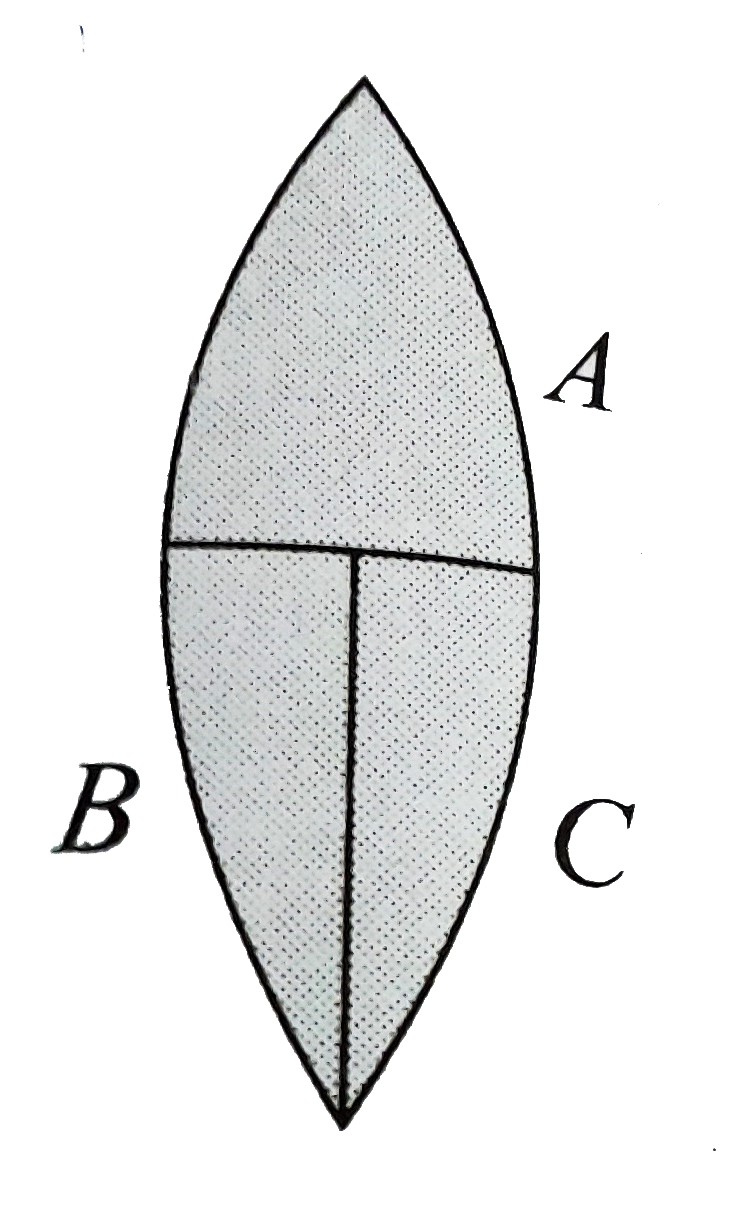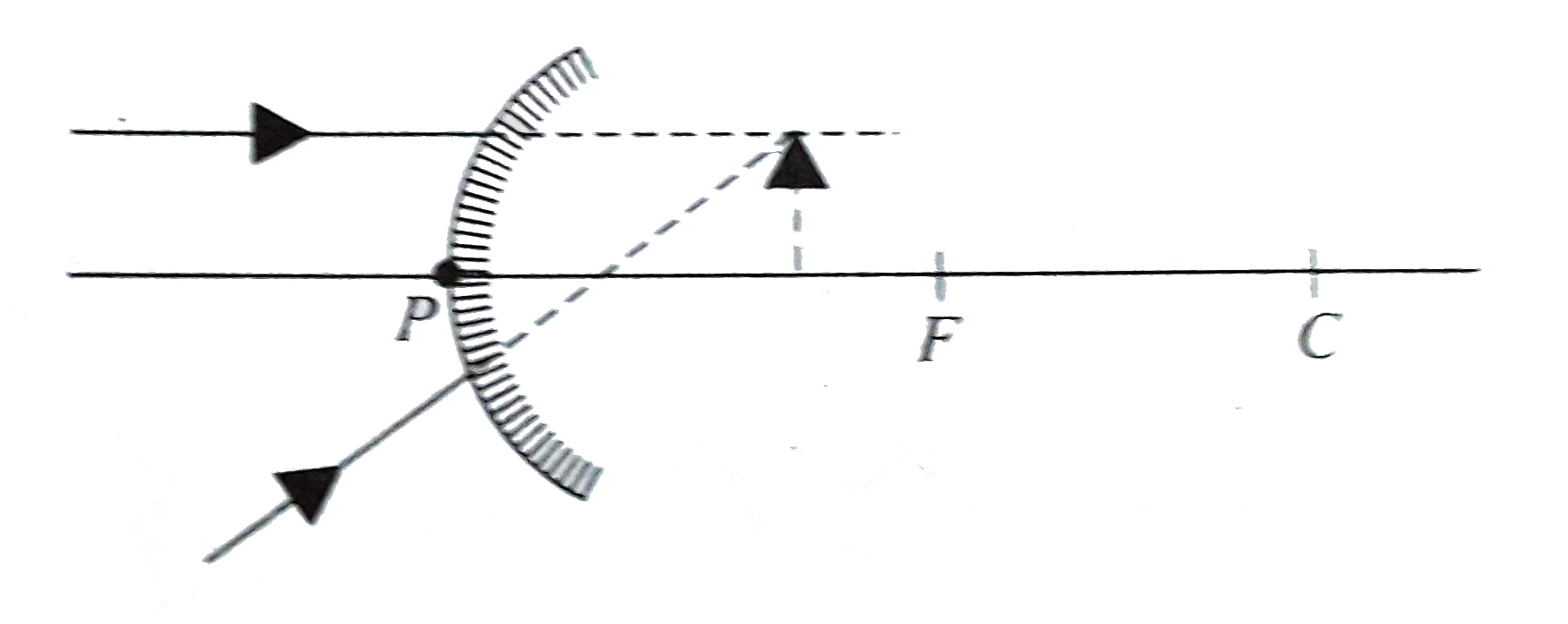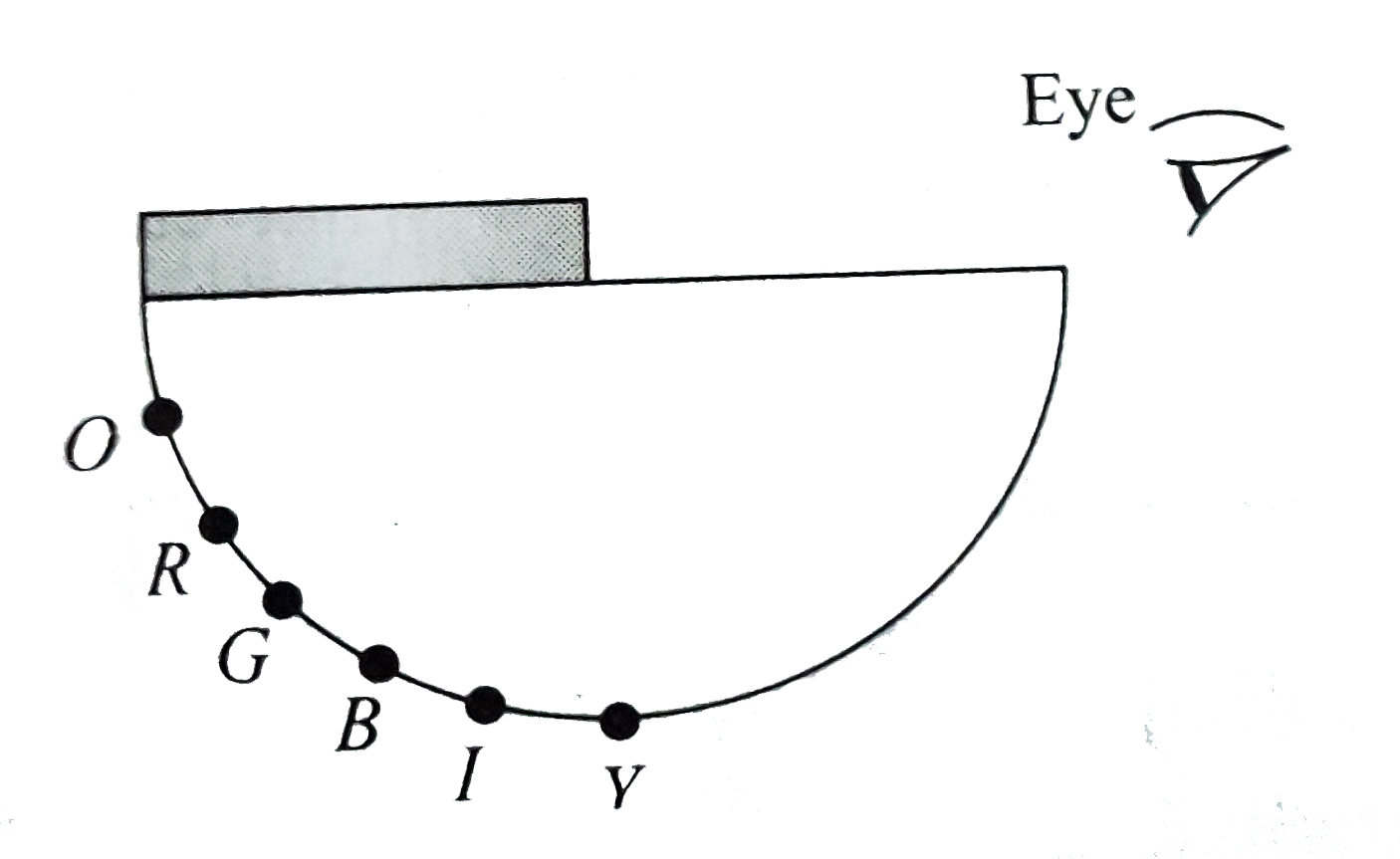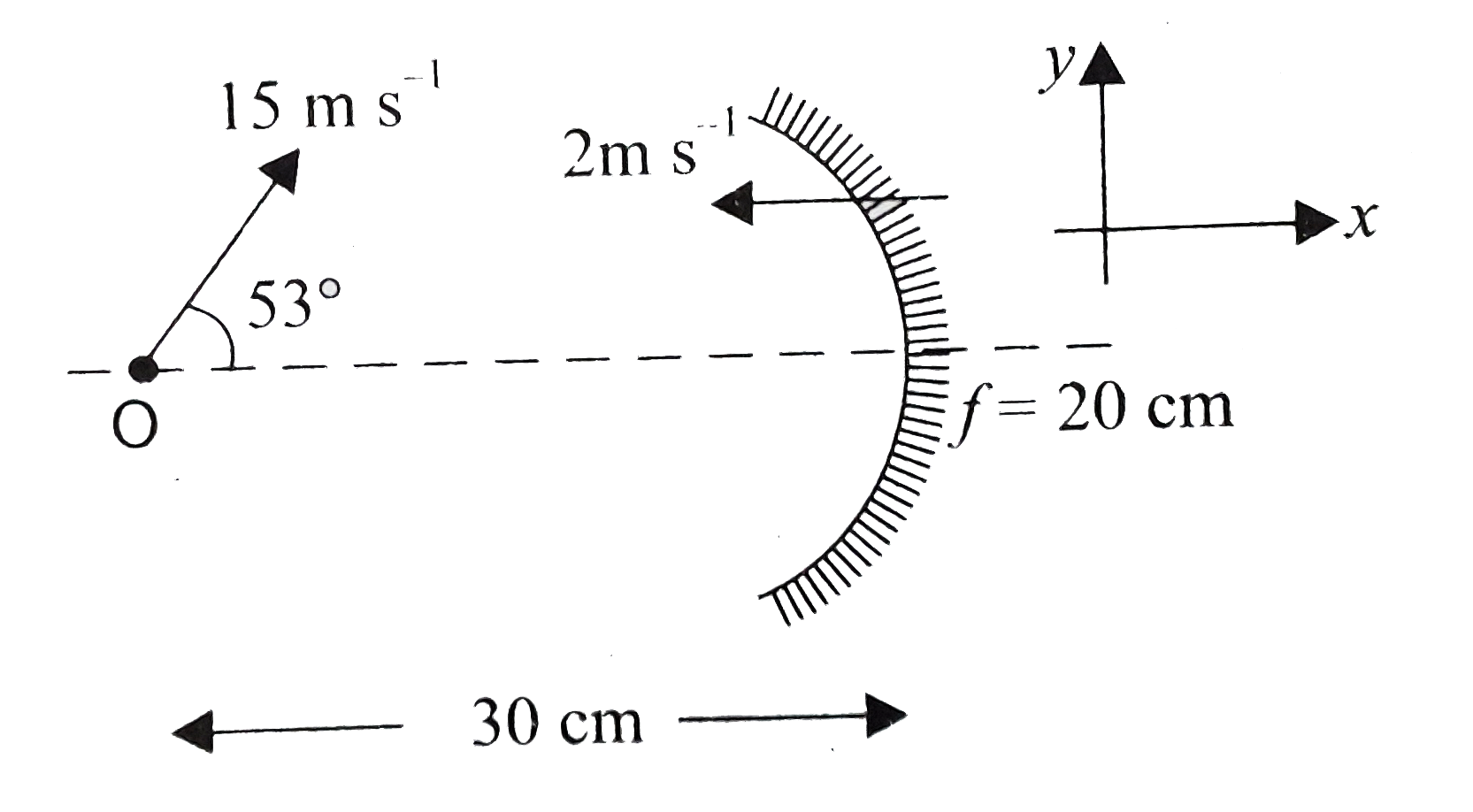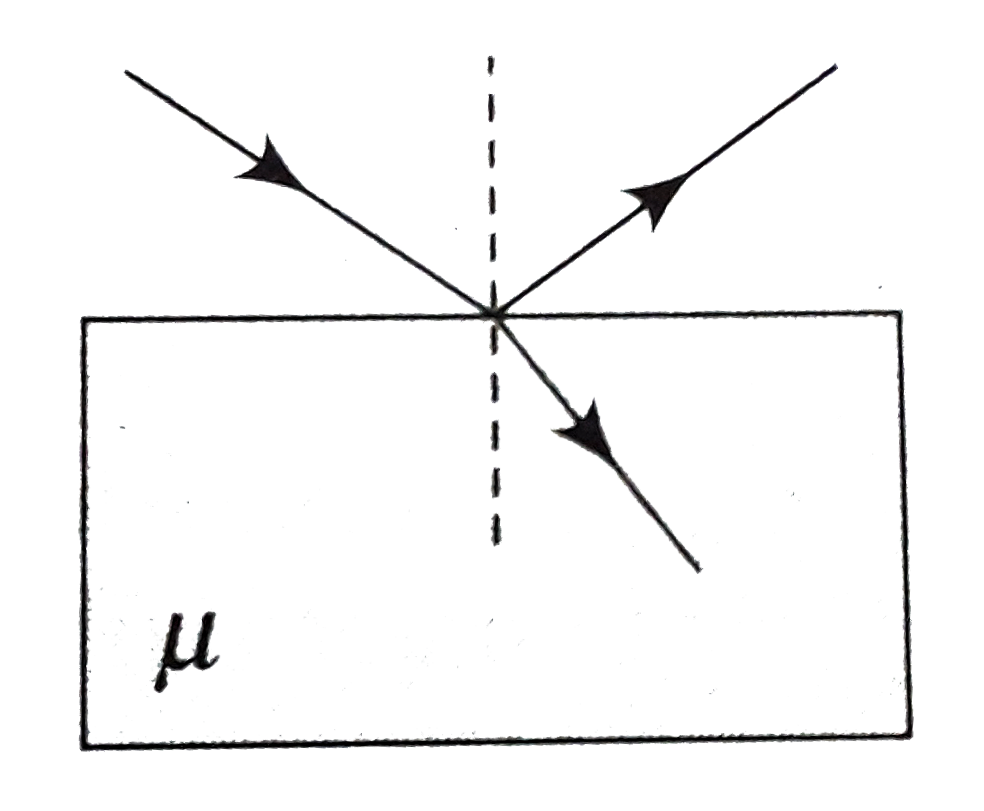Single Correct from CENGAGE PHYSICS (ENGLISH) Chapter 13 GEOMETRICAL OPTICS for Class 12
| Class 12 | PHYSICS |
| Chapter | GEOMETRICAL OPTICS |
| CENGAGE PHYSICS (ENGLISH) | Single Correct |
| Medium | English |
| Academic Year | 2023-2024 |
Question 2
A ray of light is incident on a medium with angle of incidence I and refracted into a second medium with angle of refraction r. The graph of sin(i)vssin(R) is as shown in figure. Then the velocity of light in the first medium in n times the velocity of light in the second medium. What shoul be th evalue of n?
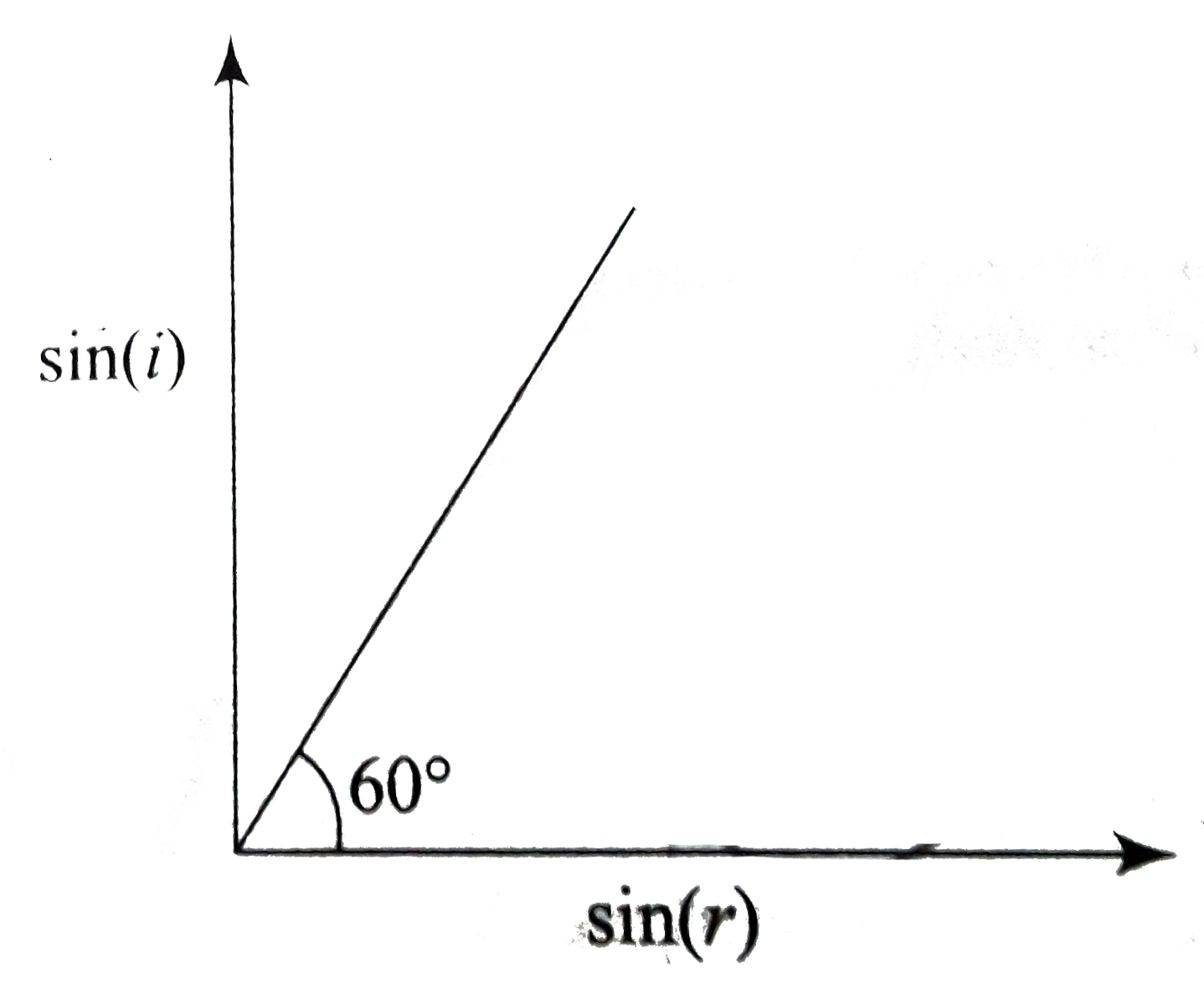 View Solution
View SolutionQuestion 4
You are given two identical plano-convex lenses. When you palce an object 20cm to the left of a single plano-convex lens, the image appears 40cm to the right of the lens. You then arrange the two plano-convex lenses back to back to form a double convex lens. If the object is 20cm to th eleft of this new lens, what is the approximate location of the image?
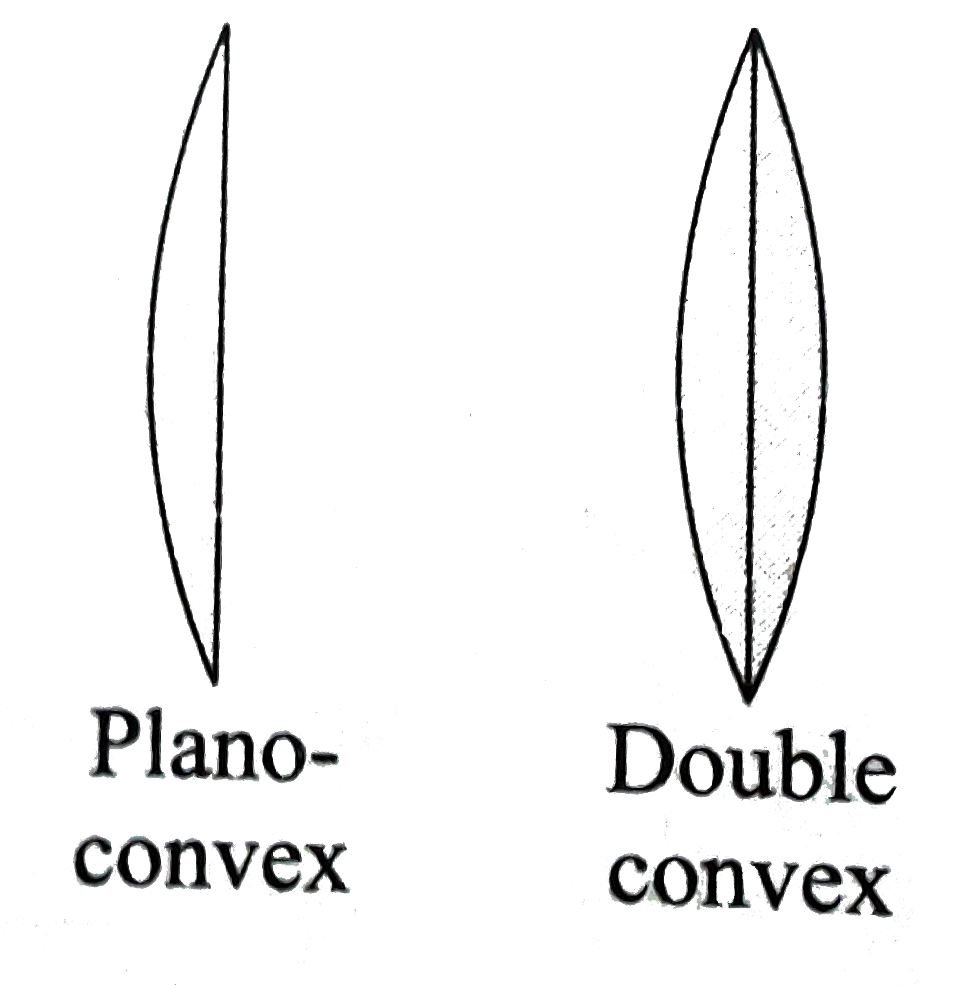 View Solution
View SolutionQuestion 16
Two thin lenses are placed 5cm apart along the same axis and illuminted with a beam of light parallel to that axis. The first lens in the path of the beam is a converging lens of focal length 10cm whereas the second is a diverging lens of focal length 5cm. If the second lens if now moved toward the first, the emergent light View SolutionQuestion 18
A plastic hemisphere has a radius of curvature of 8cm and an index of refraction of 1.6. On the axis halfway between the plane surface and the spherical one (4cm from each) is a small object O.
The distance between the two images when viewed along the axis from the two sides of the hemisphere is approximately.
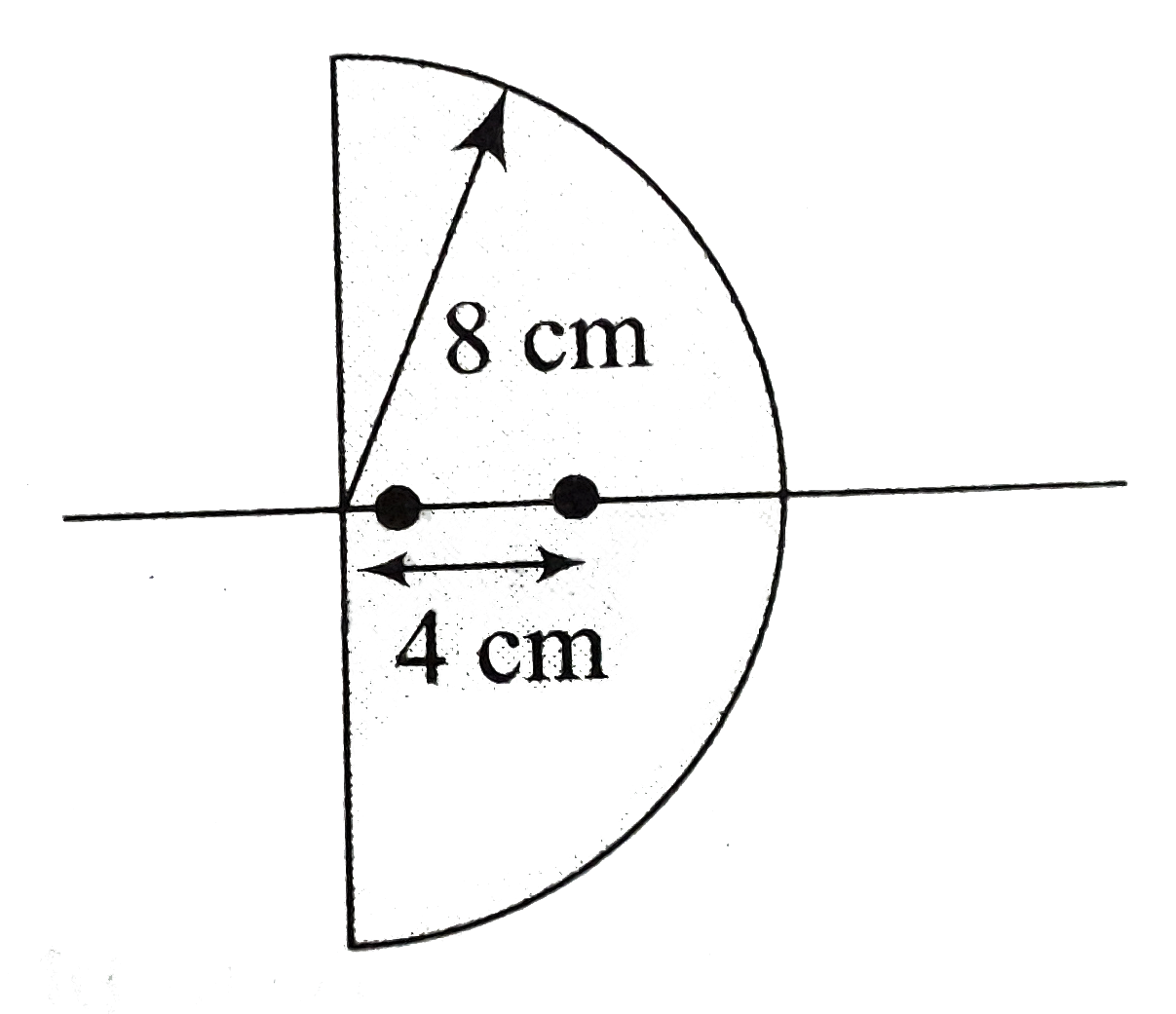 View Solution
View SolutionQuestion 22
Light is incident normally on face AB of a prism as shown in Figure. A liquid of refractive index μ is placed on face AC of the prism. The prism is made of glass of refractive indes 3/2 . Find the limits of μ for which total internal reflection takes place on the face AC.
(A)μ>√32 (B)3√34>μ (C)μ>√3 (D)μ<√32 View Solution
View SolutionQuestion 26
Point object O is placed on the principal axis of a convex lens of focal length 20cm at a distance of 40 cm to the left of it. The diameter of the lens is 10cm to the right of the lens at a distance h below the principal axis, then the maximum value of h to see the image will beView SolutionQuestion 34
Consider the situation shown in figure. Water (μw=43) is filled in a breaker upto a height of 10 cm. A plane mirror is fixed at a height of 5 cm from the surface of water. Distance of image from the mirror after reflection from it if an object O at the bottom of the beaker is
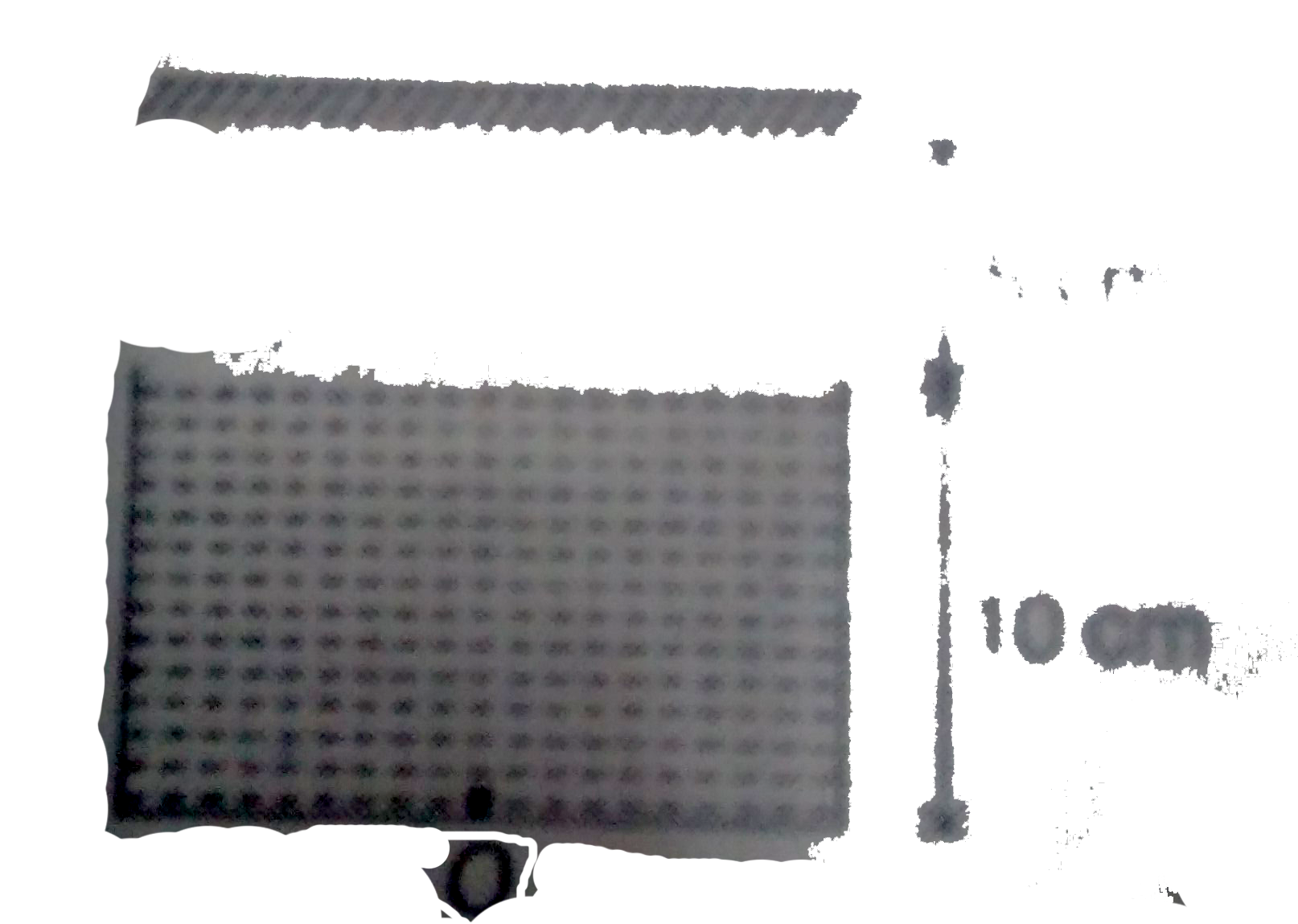 View Solution
View SolutionQuestion 40
A plano- convex lens fits exactly into a plano- concave lens. Their plane surfaces are parallel to each other. If lenses are made of different materials of refractive indices μ1 and μ2 and R is the radius of curvature of the curved curface of the lenses, then the focal length of the combination is View SolutionQuestion 56
A concave mirror is placed on a horizontal table with its axis directed vertically upward. Let O be the pole of the mirror C its center of curvature and F is the focus. A point object is placed at C. It has a real image, also located at C. If the mirror is now filled with water, the image will be View SolutionQuestion 58
A point source of light S, placed at a
distance L in front of the centre of a mirror of width d,
hangs vertically on a wall. A man walks in front of the
mirror along a line parallel to th mirror at a distane
2L form it as shown.The greatest distance over which
he can see the image of the light source in the mirror is
(a) d/2 (b) d (c) 2d (d) 3 d.
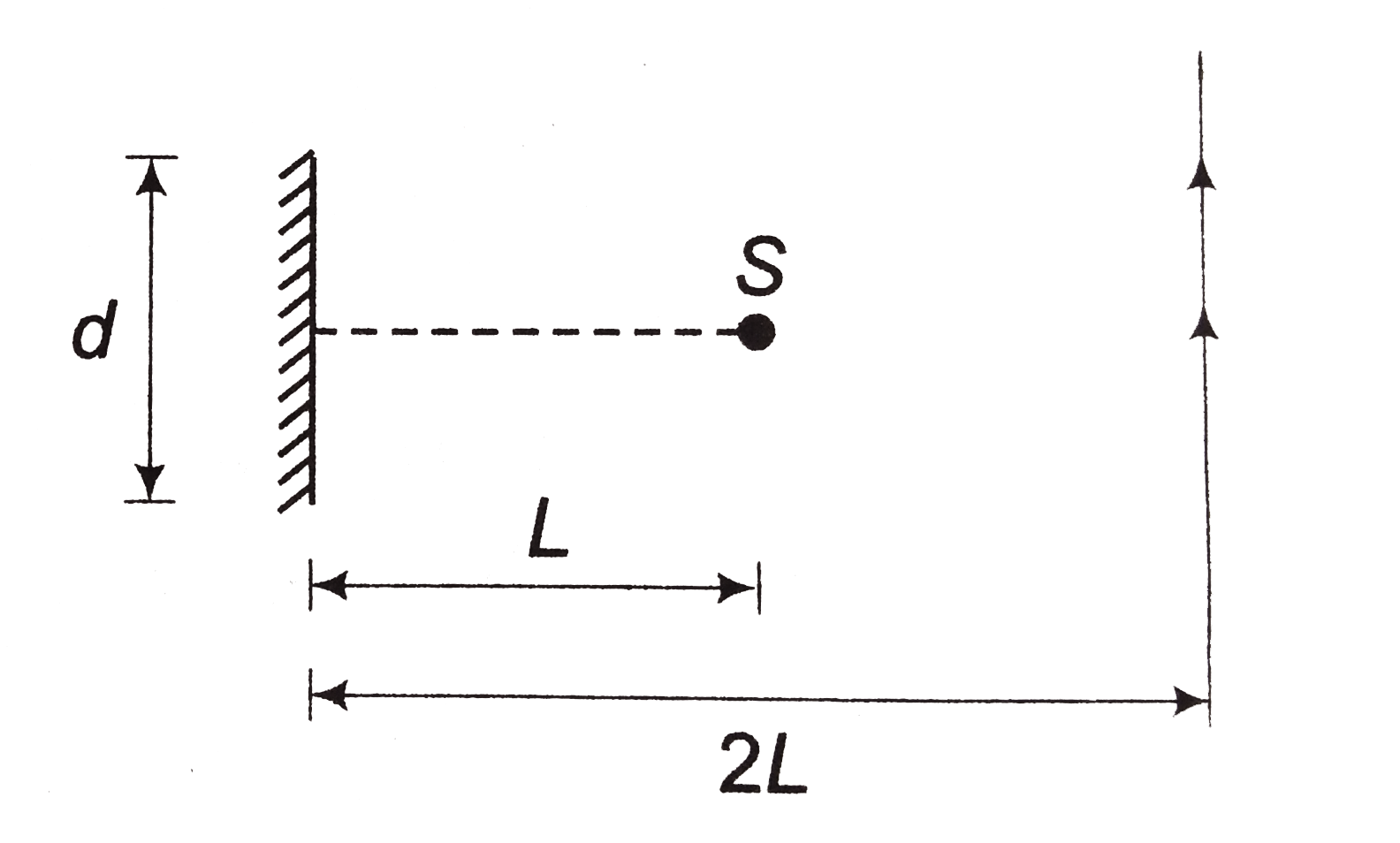 View Solution
View SolutionQuestion 64
A piece of wire bent into an L shape with upright and horizontal portion of equal lengths 10 cm each is placed with the horizontal portion along the axis of the concave mirror towards pole of mirror whose radius of curvature is 10 cm. If the bend is 20 cm from the pole of the mirror, then the ratio of the lengths of the images of the upright and horizontal portion of the wire is View SolutionQuestion 67
If a ray of light in a denser medium strikes a rarer medium at an angle of incidence i, the angles of reflection and refraction are respectively, r and r' If the reflected and refraction rays are at right angles to each other, the critical angle for the given pair of media isView SolutionQuestion 70
A ray of monochromatic light is incident on the refracting face of a prism (angle 75∘0 . It passes through the prism and is incident on the other face at the critical angle. If the refractive index of the prism is √2 , then the angle of incidence on the first of the prism is View SolutionQuestion 71
An object is placed at a distance of 15 cm from a convex lens of focal length 10 cm. On the other side of the lens, a convex mirror is placed at its focus such that the image formed by the combination coincides with the object itself. The focal length of the convex mirror is
 View Solution
View SolutionQuestion 74
A parallel beam of light falls axially on a thin converging lens of focal length 20cm. The emergent light falls on a screen placed 30cm beyond the lens. An opaque plate with a triangular aperture, side 1 cm, is in contact with the lens
Which one of the following diagrams best shows to appearance of the patch of light seen on the screen?
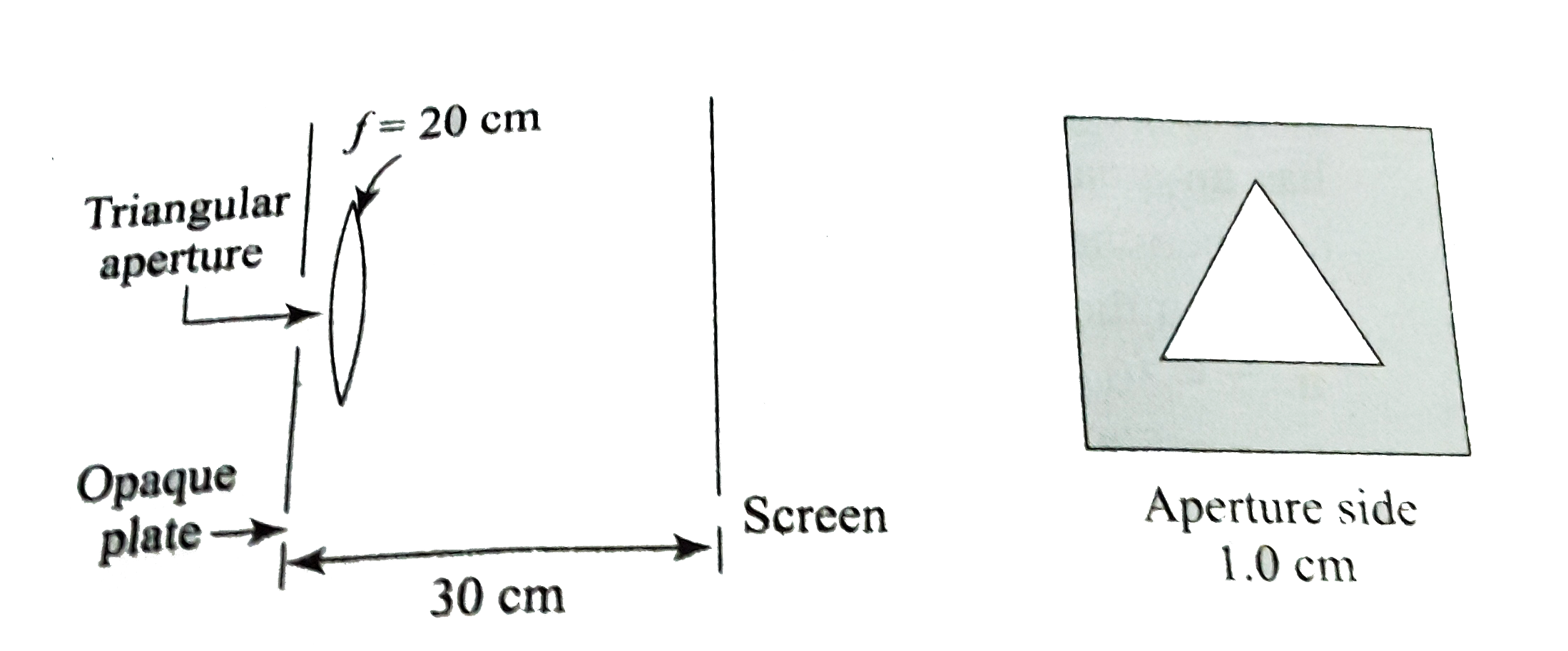 View Solution
View SolutionQuestion 76
Figure(a) shows two plano-convex lenses in contact as shown. The combination has focal length 24cm. Figure (b) shows the same with a liquid introduced between them. If refractive index of glass of the lenses is 1.50 and that of the liquid is 1.60, the focal length of system in figure (b) will be
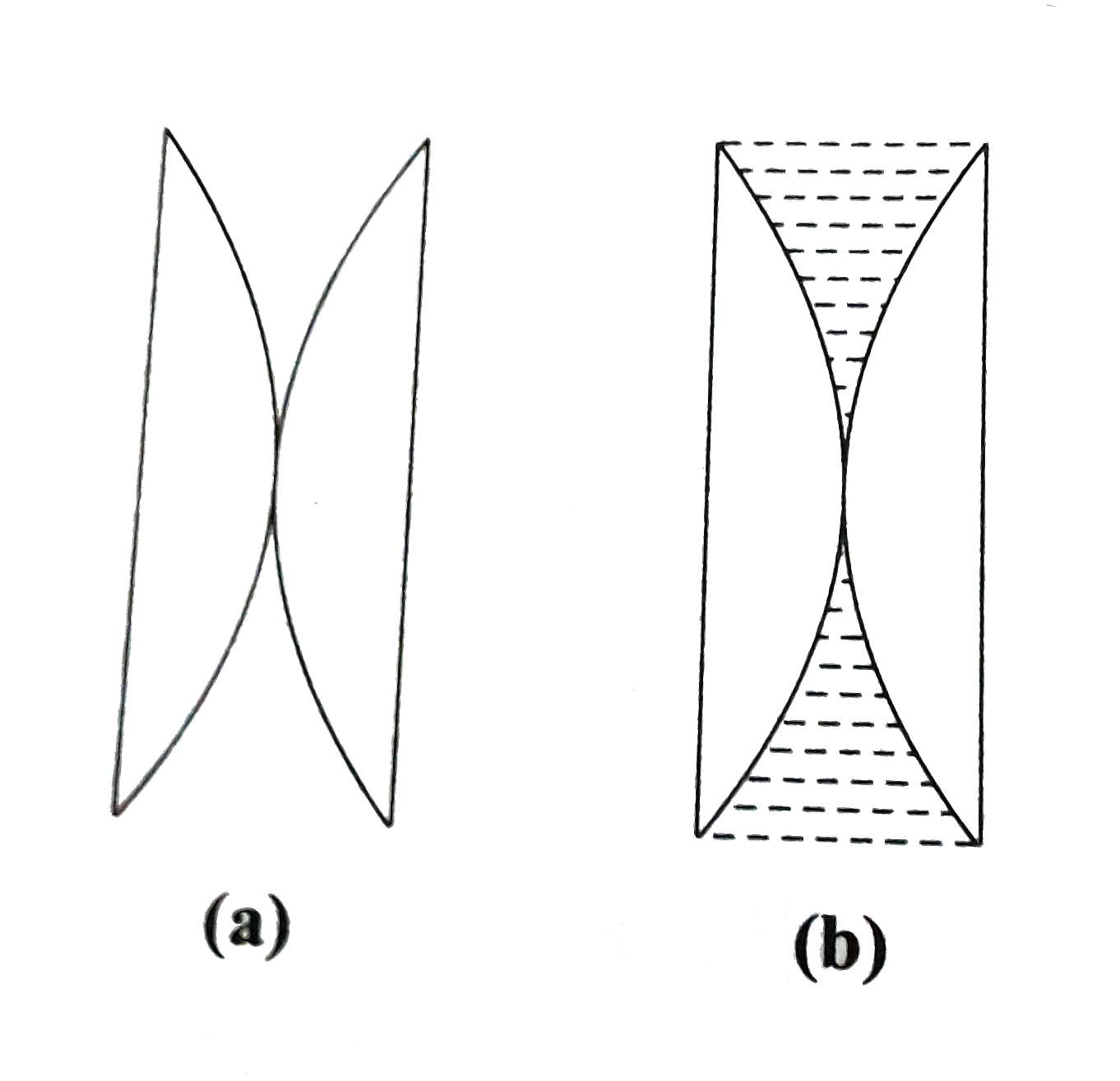 View Solution
View SolutionQuestion 84
An object is placed in front of a convex mirror at a distance of 50cm. A plane mirror is introduced covering the lower half of the convex mirror. If the distance between the object and the plane mirror is 30cm, it is found that there is no parallax between the images formed by the two mirrors. What is the radius of curvature of the convex mirror? View SolutionQuestion 85
A concave mirror of focal length 10cm and a convex mirror of focal length 15cm are placed facing each other 40cm apart. A point object is placed between the mirrors, on their common axis and 15cm from the concave mirror. Find the position and nature of the image produced by successive reflections, first at the concave mirror and then at the convex mirror. View SolutionQuestion 90
Two thin symmetrical lenses of different nature and of different material have equal radii of curvature R=15cm. The lenses are put close together and immersed in water (μw=43). The focal length of the system in water is 30 cm. The difference between refractive indices of the two lenses is View SolutionQuestion 93
A tranparent sphere of radius 20cm and refractive index 1.6 is fixed in a hole of the partition separating the two media: A(refractive index n1=1.2) and B ( refractive index n3=1.7). A luminous point object is placed 120cm from the surface of the sphere iin medium A. it is viewed from D in medium B in a direction normal to the sphere. Find the position of the image formed by the rays, from point N.
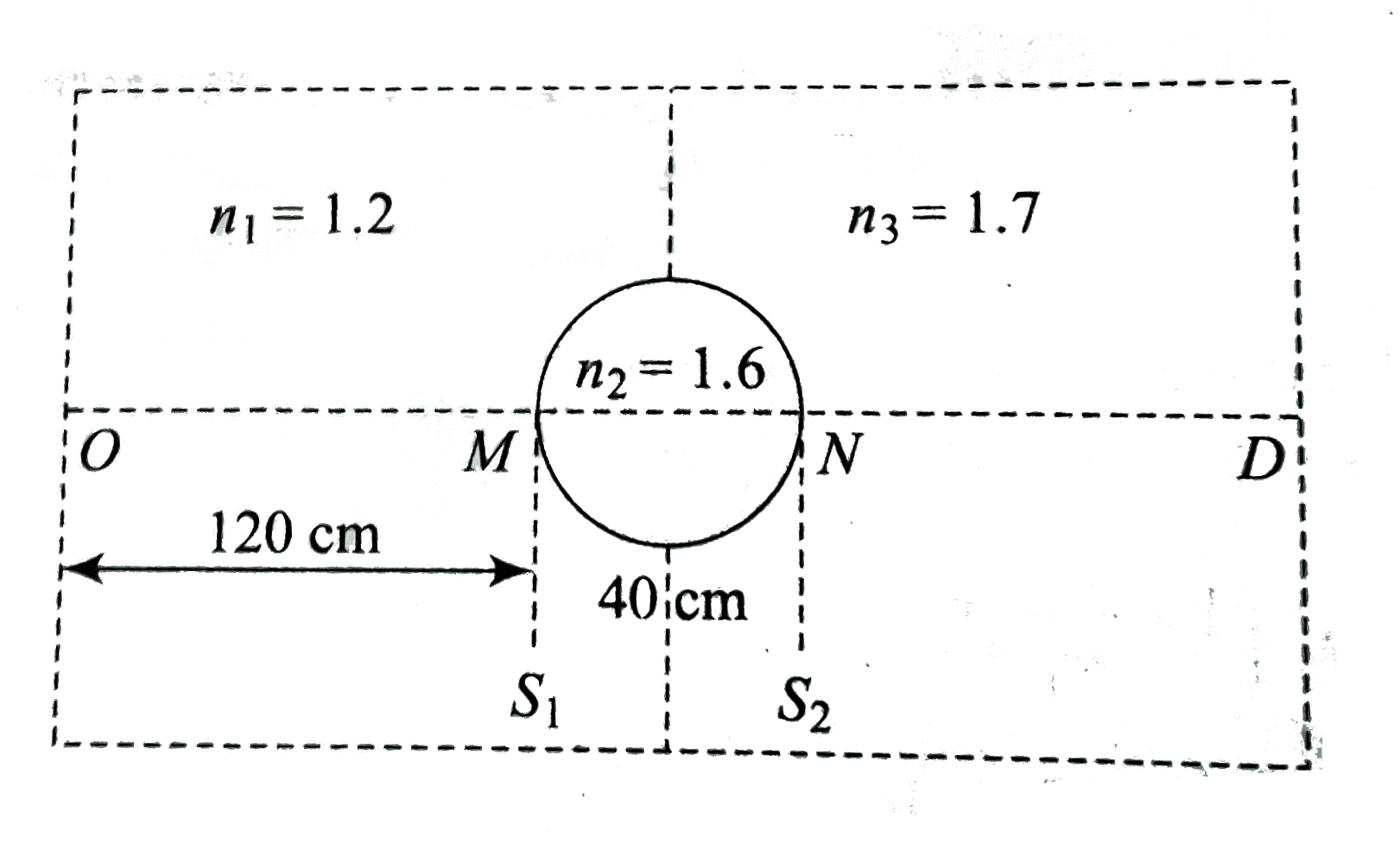 View Solution
View SolutionQuestion 104
A linear object AB is placed along the axis of a concave mirror. This object is moving towards the mirror with speed U. The speed of the image of the point A is 4U and the speed of the image of B is alSO 4U btu in opposite direction. If the center of the line AB is at a distance L from the mirror then find out the length of the object.
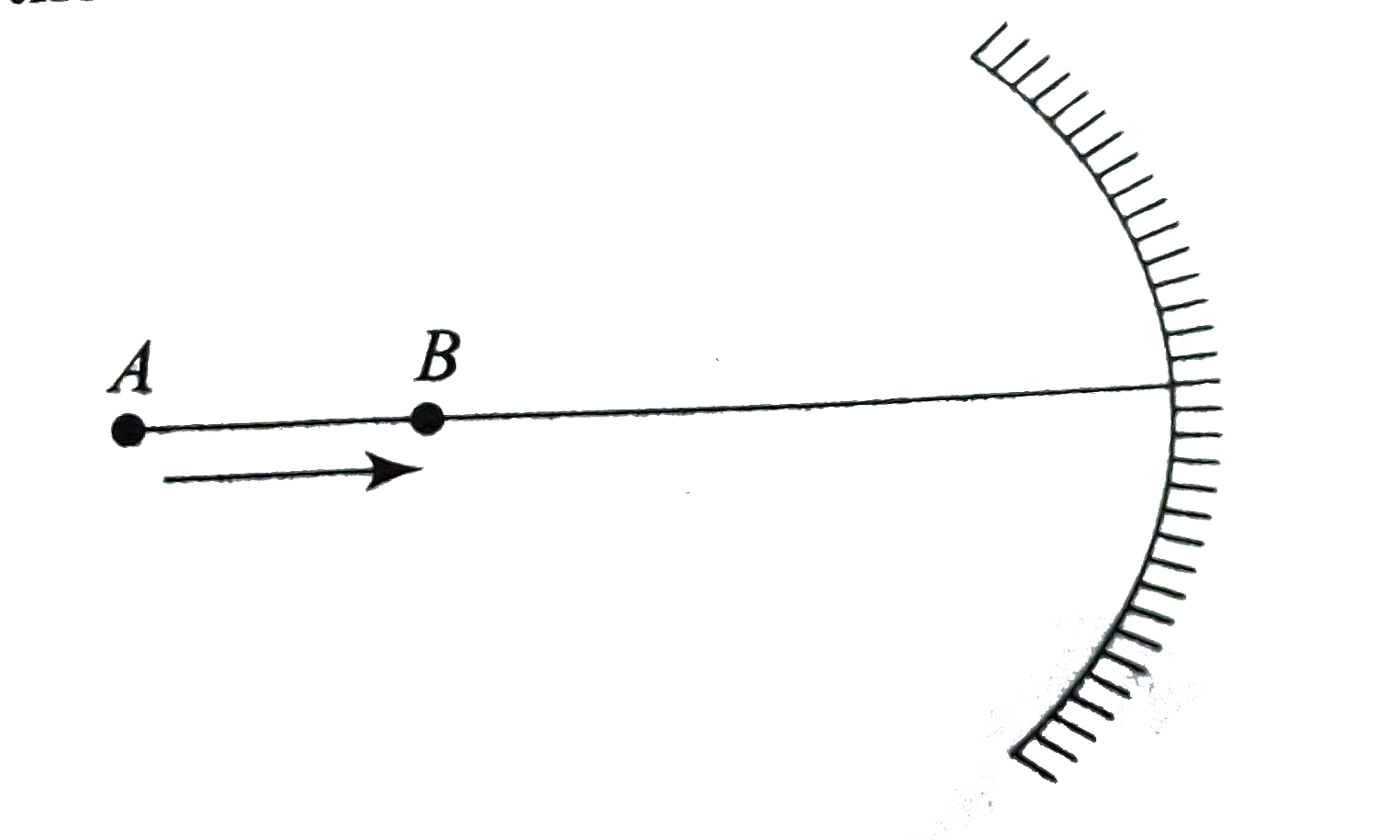 View Solution
View SolutionQuestion 105
A mango tree is at the bank of a river and one of the branch of tree extends over the river. A tortoise lives in the river. A mango falls just ono the tortoise. The acceleration of the mango falling from tree as it appears to the tortoise is (refractive index of water is 4/3 and the tortoise is stationary)View SolutionQuestion 114
In a thick glass slab of thicknes l, and refractive index n1, a cuboidal cavity of thickness 'm' is carved as shown in figure, and is filled with a liquid of R.I.n2(n1>n2). The ratio l/m, so that shift produced by this slab is zero when an observer A observes an object B with paraxial rays is
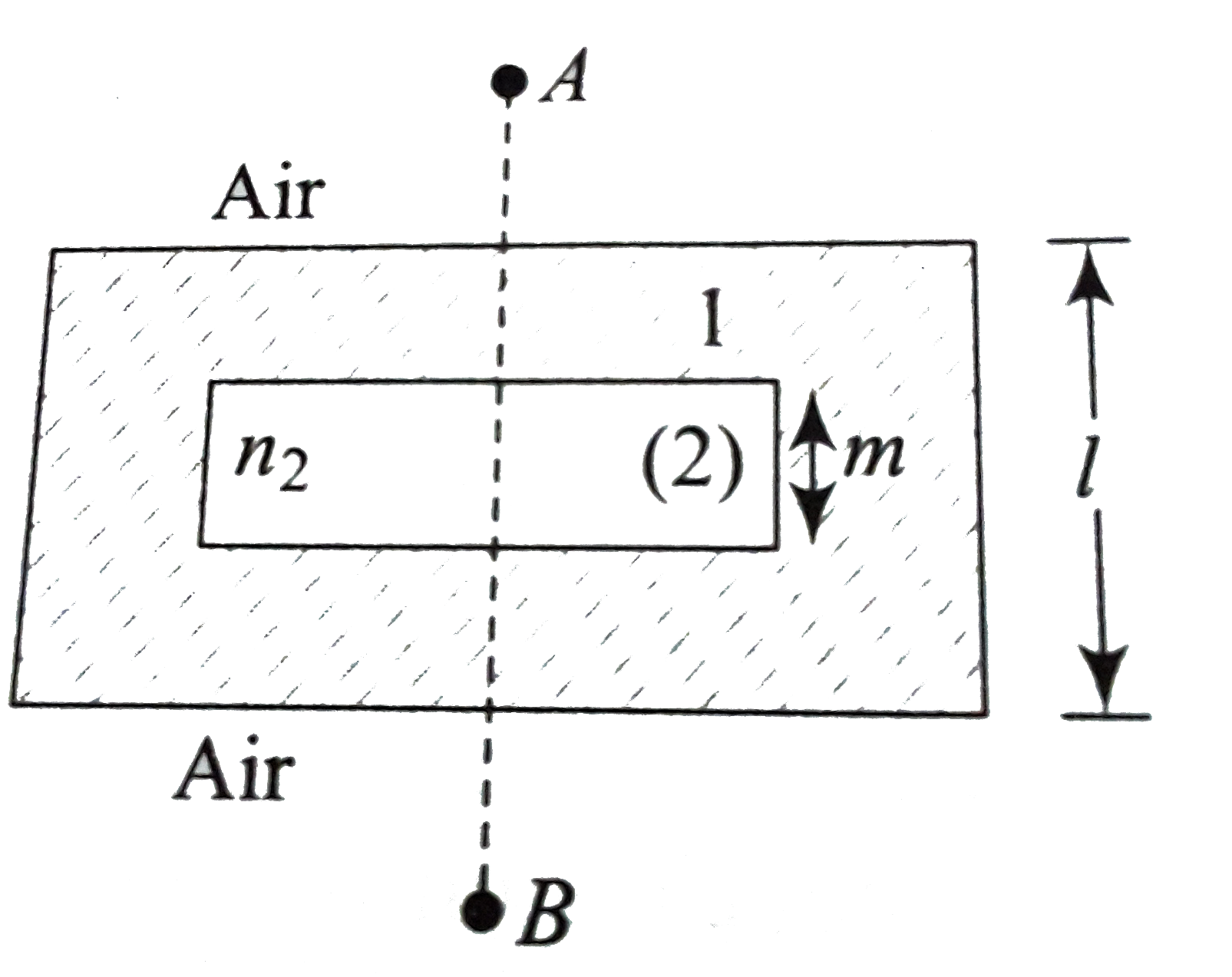 View Solution
View SolutionQuestion 115
In Figure, a point object O is placed in air. A spherical boundary separates two media. Ab is the principall axis. The refractive index above AB is 1.6 and below AB is 2.0. The separation between the images formed due to refraction at a the spherical surface is (assume the radius of curvature (R) to be 1 unit)
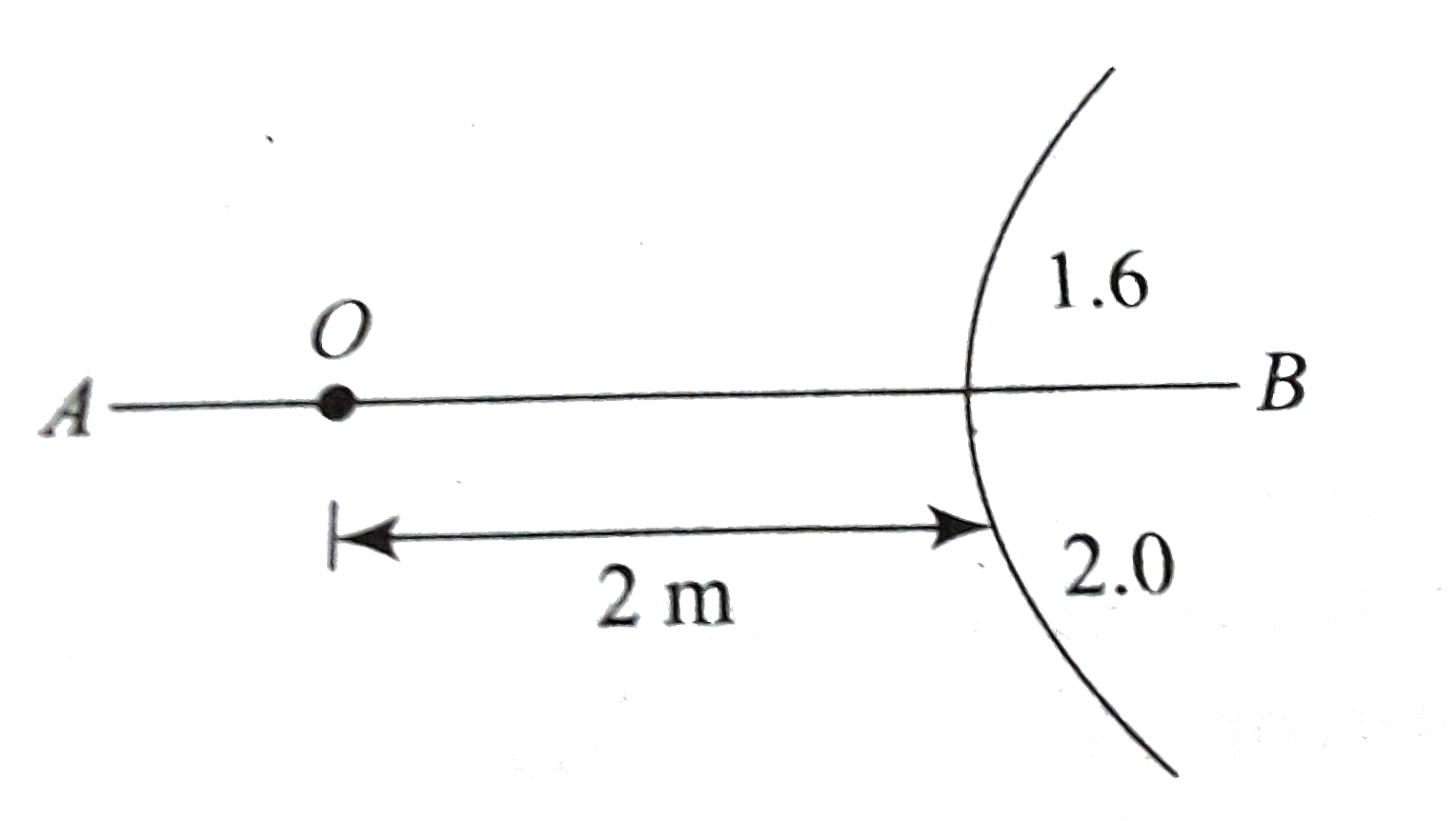 View Solution
View SolutionQuestion 117
A partical revolves in clockwise direction (as seen from point A) in a circle C of radius 1 cm and completes one revolution in 2 sec. The axis of the circle and the principal axis of the mirror M coincides, call it AB. The radius of curvature of the mirror of 20cm. Then, the direction of revolution (as seen from A) of the image of the partical and its speed is
 View Solution
View SolutionQuestion 141
An object kept on the principal axis and infront of a spherical mirror, is moved along the axis itself. Its lateral magnification m is measured, and plotted versus object distance |u| for a range of u, as shown in figure. The magnification of the object when it is placed at a distance 20cm in front of the mirror is
 View Solution
View SolutionQuestion 142
A lens of focal length 20.0 cm and aperture radius 2.0cm is placed at a distance 30.cm from a point source of light. On the other side a screen is placed at a distance 50.0cm from the lens. The radius of spot of light formed on screen is (neglect spherical abberation through lens)View SolutionQuestion 148
A converging beam of rays is incident on a diverging lens. Having passed through the lens the rays intersect at a point 15cm from the lens. If the lens is removed, the point where the rays meet, move 5cm closer to the mounting that holds the lens. Find the focal length of the lens. View SolutionQuestion 153
An equiconcave diverging lens of focal length F is cut into two equal halves. The two halves are turned around and joined with some liquid between them.The lens obtained is converging with focal length F. If the refractive index of the liquid is 3 then what is the refractive index of the lens?
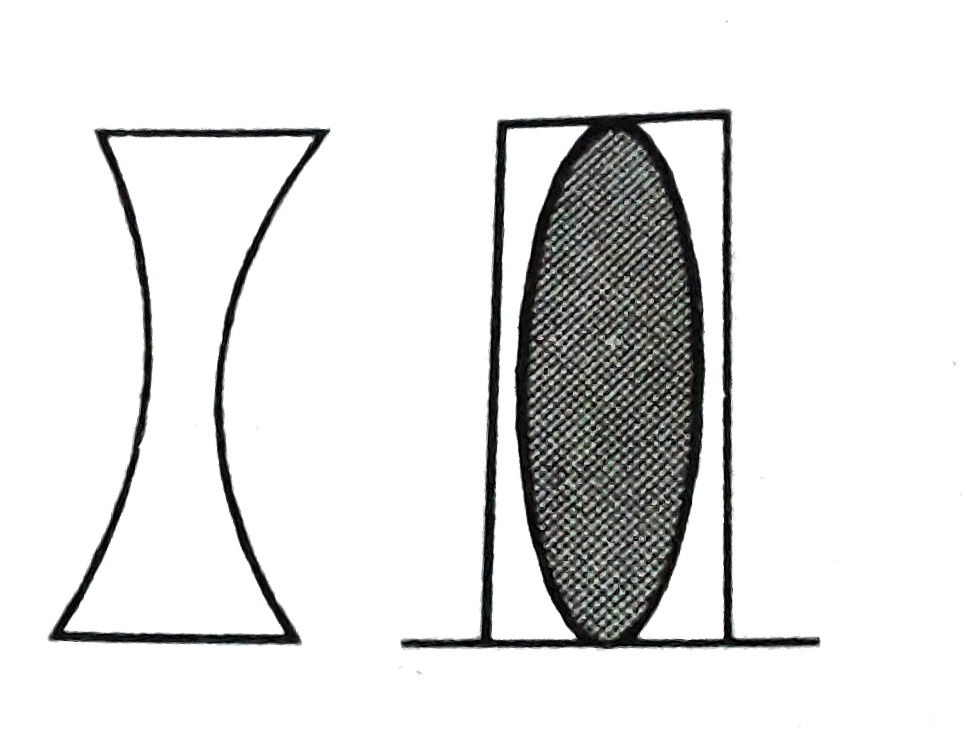 View Solution
View SolutionQuestion 154
In a optics experiment, with the positive of the object fixed, a student varies the positive of a convex lens and for each positive, the screen is adjusted to get a clear image of the object. A graph between the object distance u and the image distance v, from the lens, is plotted using the same scale for the two axes. A straight line passing through the origin and making an angle of 45∘ with the x-axis meets the experimental curve at P. The coordinates of P will beView SolutionQuestion 160
A concave mirror of radius of curvature h is placed at the bottom of a tank containing a liquid of refractive index μ upto a depth d. An object P is placed at height h above the bottom of the miror. Outside the liquid, an observer O views the object and its image in the mirror. The apparent distance between these two will be
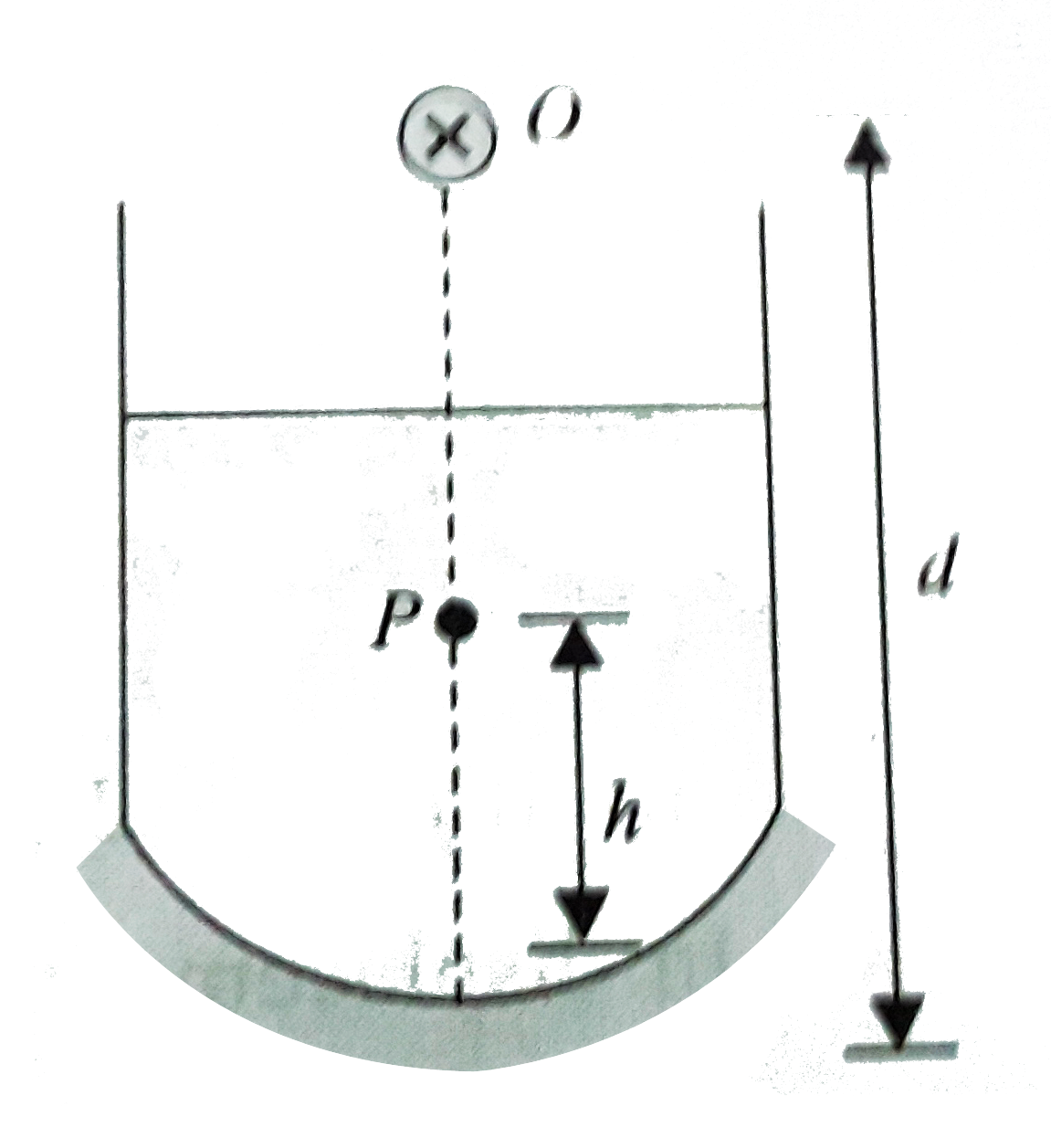 View Solution
View SolutionQuestion 161
A cylindrical vessel of diameter 12 cm contains 800π cm3of water. A cylindrical glass piece of diameter 8.0 cm and height 8.0 cm is placed in the vessel. If the bottom of the vessel under the glass piece is seen by the paraxial rays (see figure 18-E6), locate its image. The index of refraction of glass is 1.50 and that of water is 1.33.
 View Solution
View SolutionQuestion 162
When the sun is either rising or setting and appears to be just in the horizon, it is in fact below the horizon. The explanation for this seeming paradox is that light from the sun bends slightly when entering the earth's atmosphere as shown in figure. Assume that the atmosphere has uniform density and hence uniform index of refraction n and extends to a height h above the earth's surface, at which point is abruptly stop. The angle δ above the Sun's true position is given by
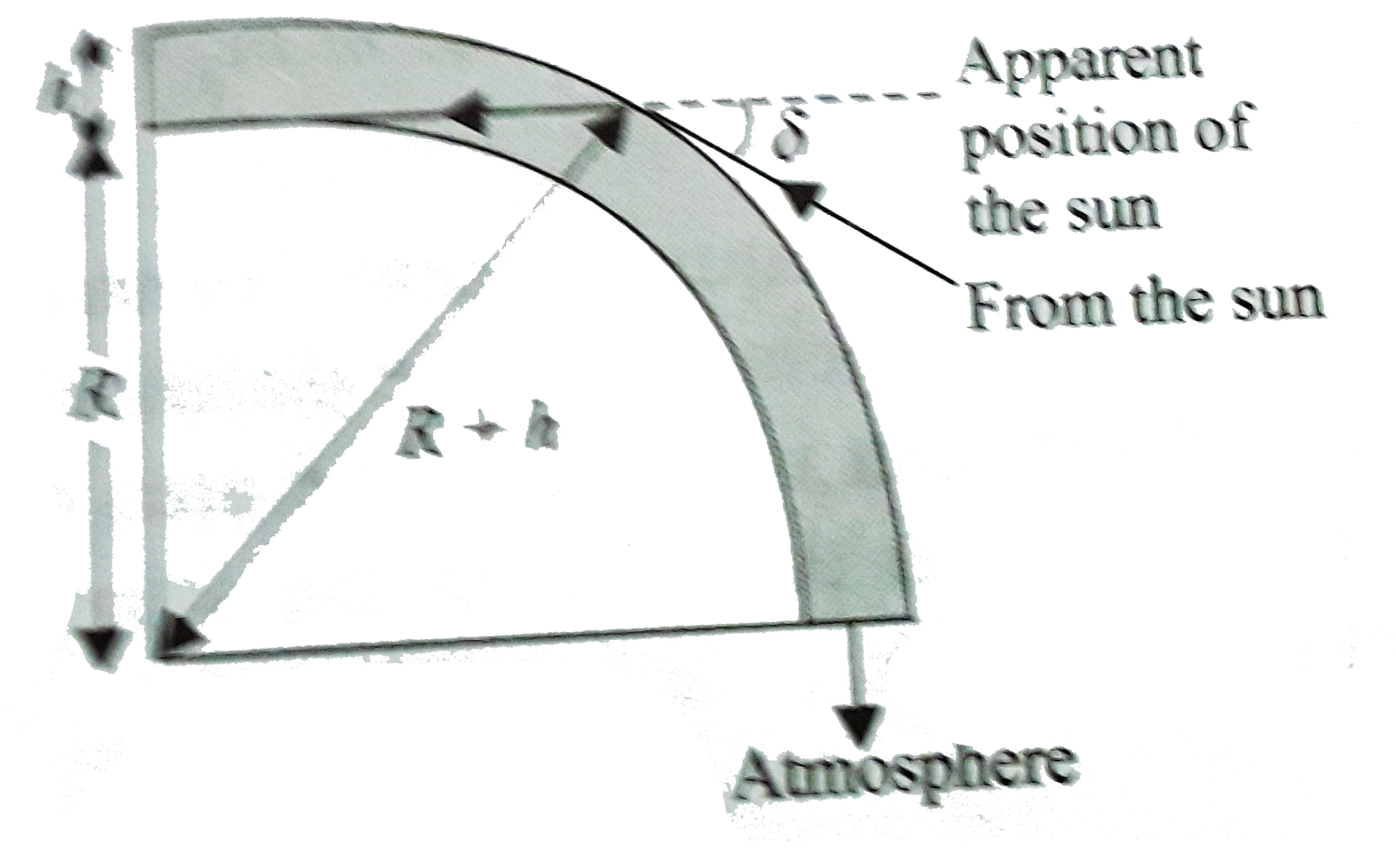 View Solution
View SolutionQuestion 164
When an object is placed on the principal axis of a convex lens at two different positins, it produces the images with magnifications +2 and −4 respectively. How many times more away from the lens the image will be formed in the second position as compared to the first postion?View SolutionQuestion 167
An object is placed at f/2 away from first focus of a convex lens where f is the focal length of the lens. Its image is formed at a distance 3f/2 in a slab of refractive index 3/2 , from the face of the slab facing the lens. Find the distance of this face of the slab from the second focus of the lens.
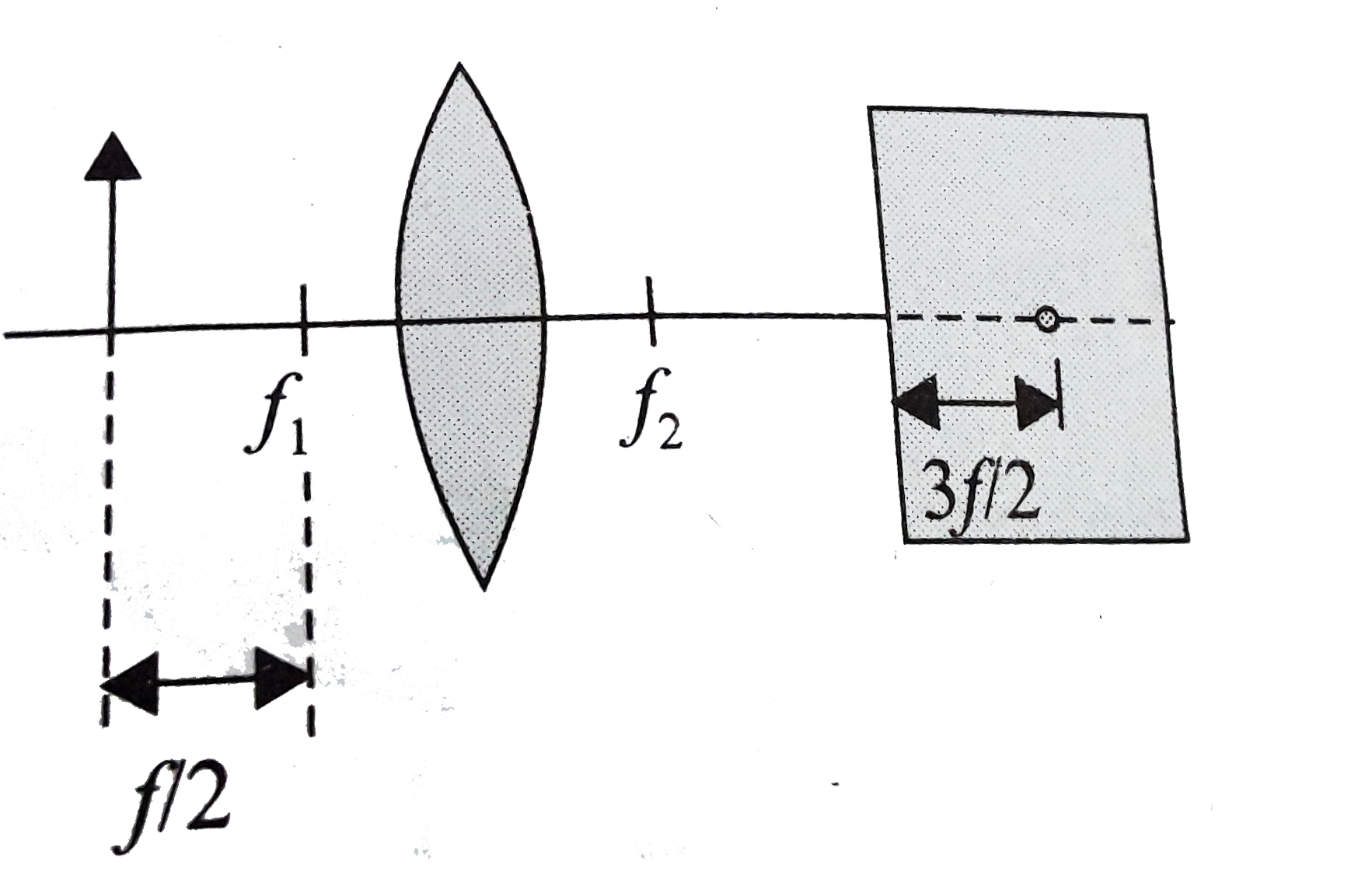 View Solution
View SolutionQuestion 168
A fish in a lake (refractive index 4/3 for water ) is viewed through a convex lens. From water surface, the lens is placed in air at half of the distance of the fish from the water surface, so that the image is formed at the fish itself. The focal length of the lens is how many times the depth of fish in water? View SolutionQuestion 175
A lense of focal length f is placed in between an object and screen at a distance D. The lens forms two real images of object on the screen for two of its different positions, a distance x apart. The two real images have magnification m1andm2 respectively (m1>m2). Choose the correct statement(s).View SolutionQuestion 187
A real point source is 5cm away from a plane mirror whose reflectinig ability is 50% , while the eye of an observer (pupil diameter 5mm) is 10cm away form the mirror. Asuume that both source and eye are on the same line perpendicular to the surface and refracted rays have no effect on intensity. Then, View SolutionQuestion 188
A plane mirror M is arranged parallel to a wall W at a distance l from it. The light produced by a point source S kept on the wall is reflected by the mirror and produces a patch of light on the wall. The mirroo moves with velocity v towards the wall.
Which of the following statement(s) is/are correct?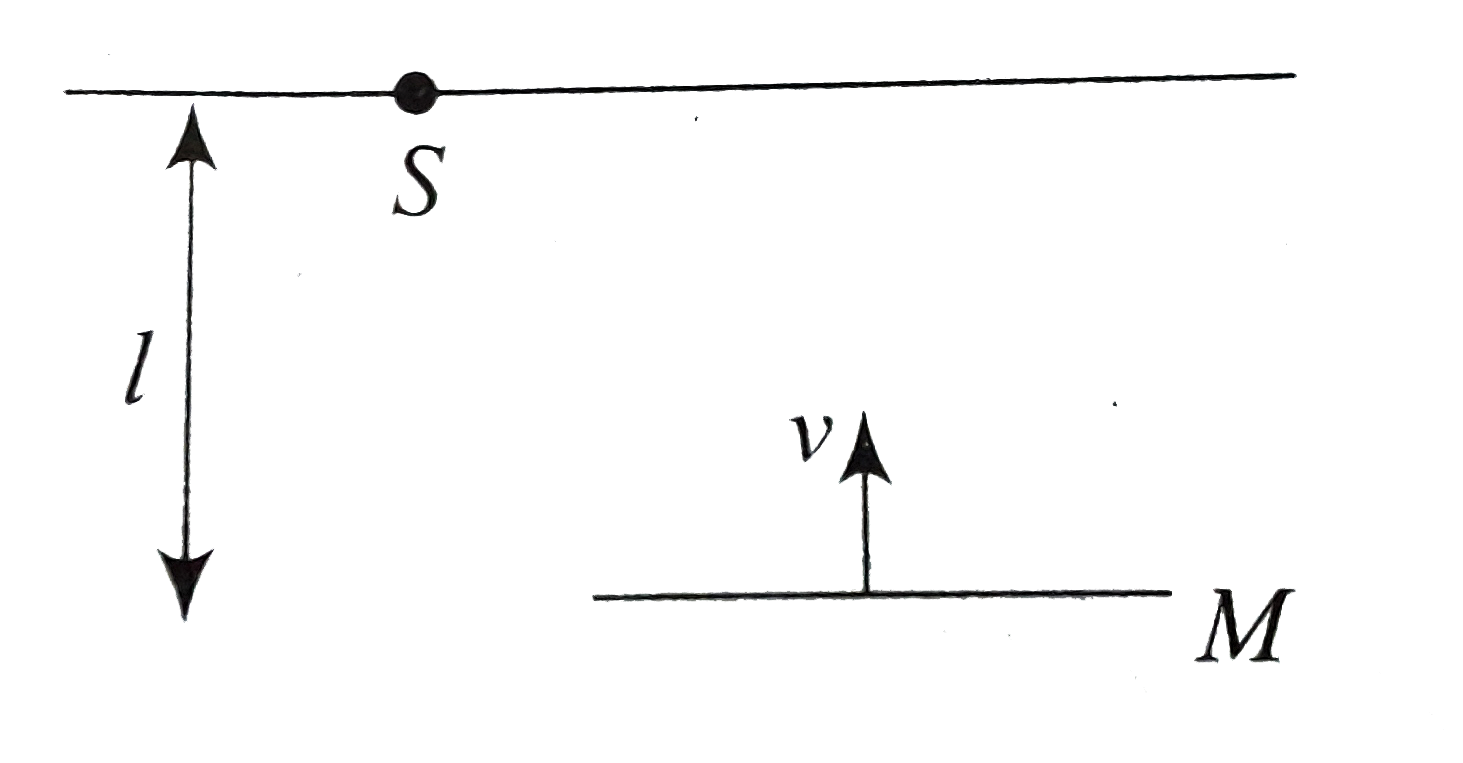 View Solution
View SolutionQuestion 193
A fish F, in the pond is at a depth of 0.8m from the water surface and is moving vertically upward with velocity 2ms−1. At the same instant, a bird B is at a height of 6m from the water surface and is moving downward with velocity 3ms−1. At this instant. both are on the same vertical line as shown in figure . Which of the following statements are correct?
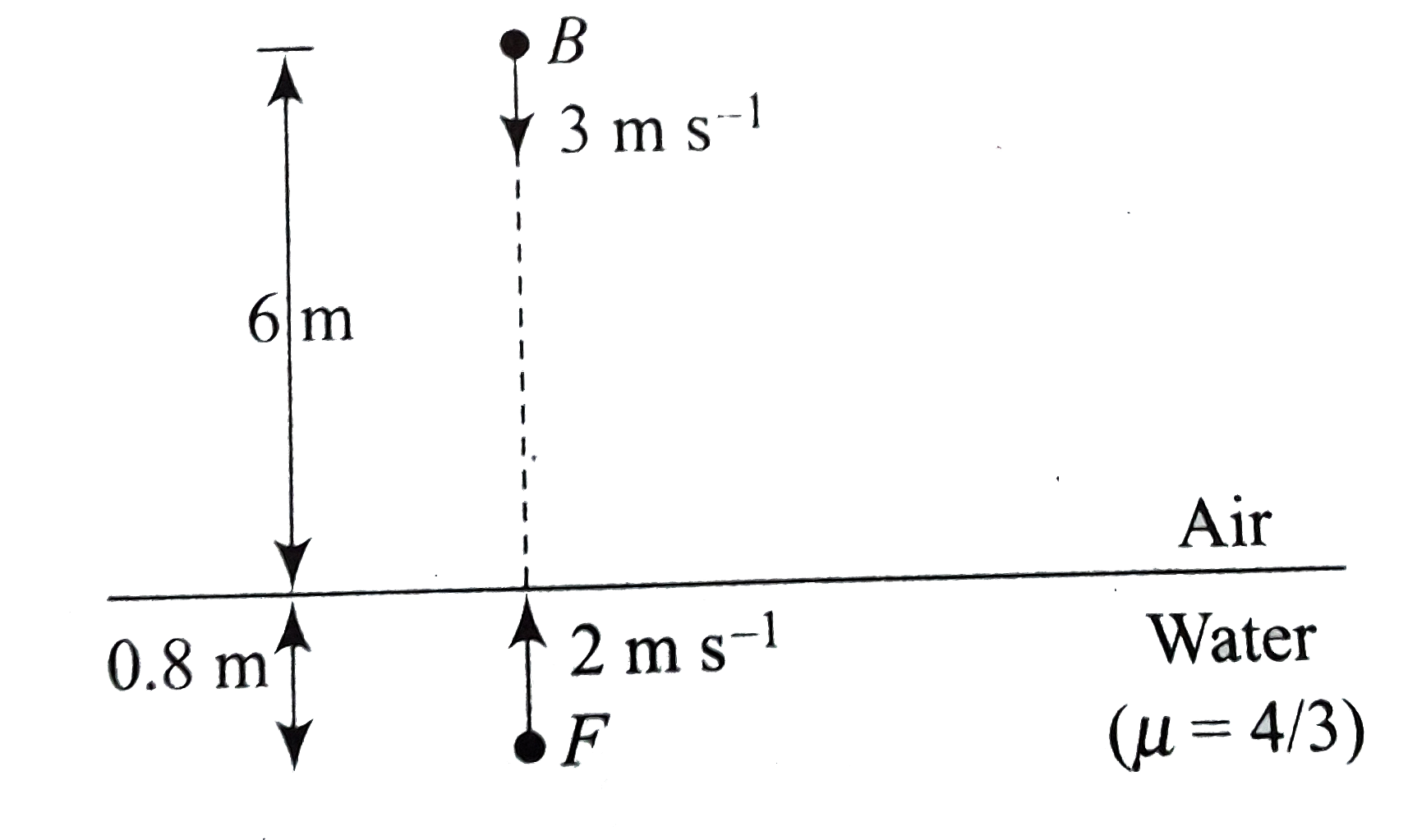 View Solution
View SolutionQuestion 195
An object is placed in front of a converging lens at a distance equal to twice the focal length f1 of the lens. On the other side of the lens is a concave mirror of focal length f2 separated from the lens is a concave mirror of focal length f2 separated from the lens by a distance 2(f1+f2). Light from the object passes rightward through the lens, reflects from the mirror, passes leftward throught the lens, and forms a final image of the object.
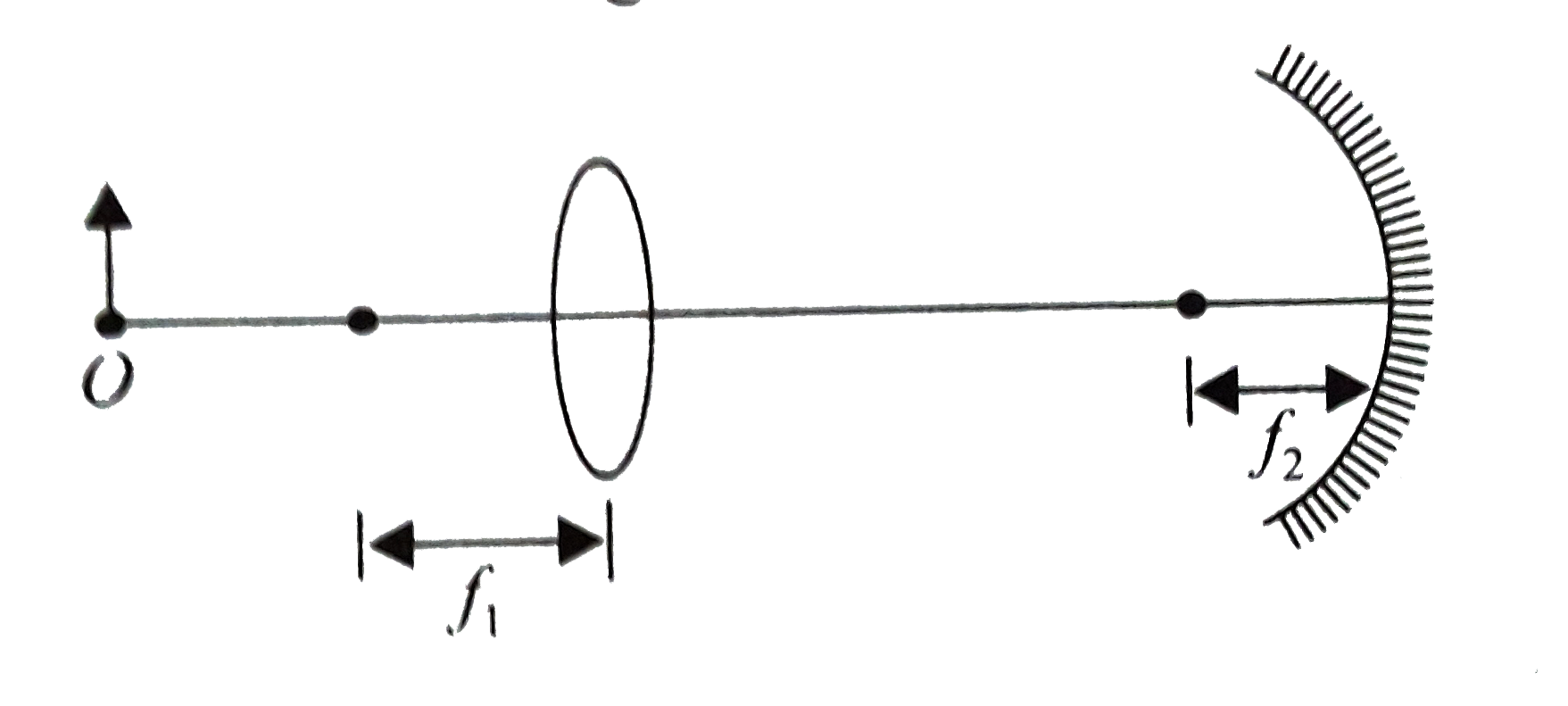 View Solution
View SolutionQuestion 208
A linear object of size 1.5cm is placed at 10 cm from a lens of focal length 20 cm. The optic centre of lens and the object are displaced are displaced a distance Δ. Thed magnification of the image formed is m. (Take optic centre of origin). The coordinates of image of A and B are (x1,y1) and (x2,y2) respectively then
 View Solution
View SolutionQuestion 210
Statement I: A beam of white light enters the curved surface of a semicircular piece of glass along the normal. The imcoming beam is moved clockwise (so that the angle θ increases), such that the beam always enters along th enormal to the curved side. Just before the refracted beam disappears, it becomes predominantly red.
Statement II: The index of refraction for light at the red end of the visible spectrum is more than at the violet end.
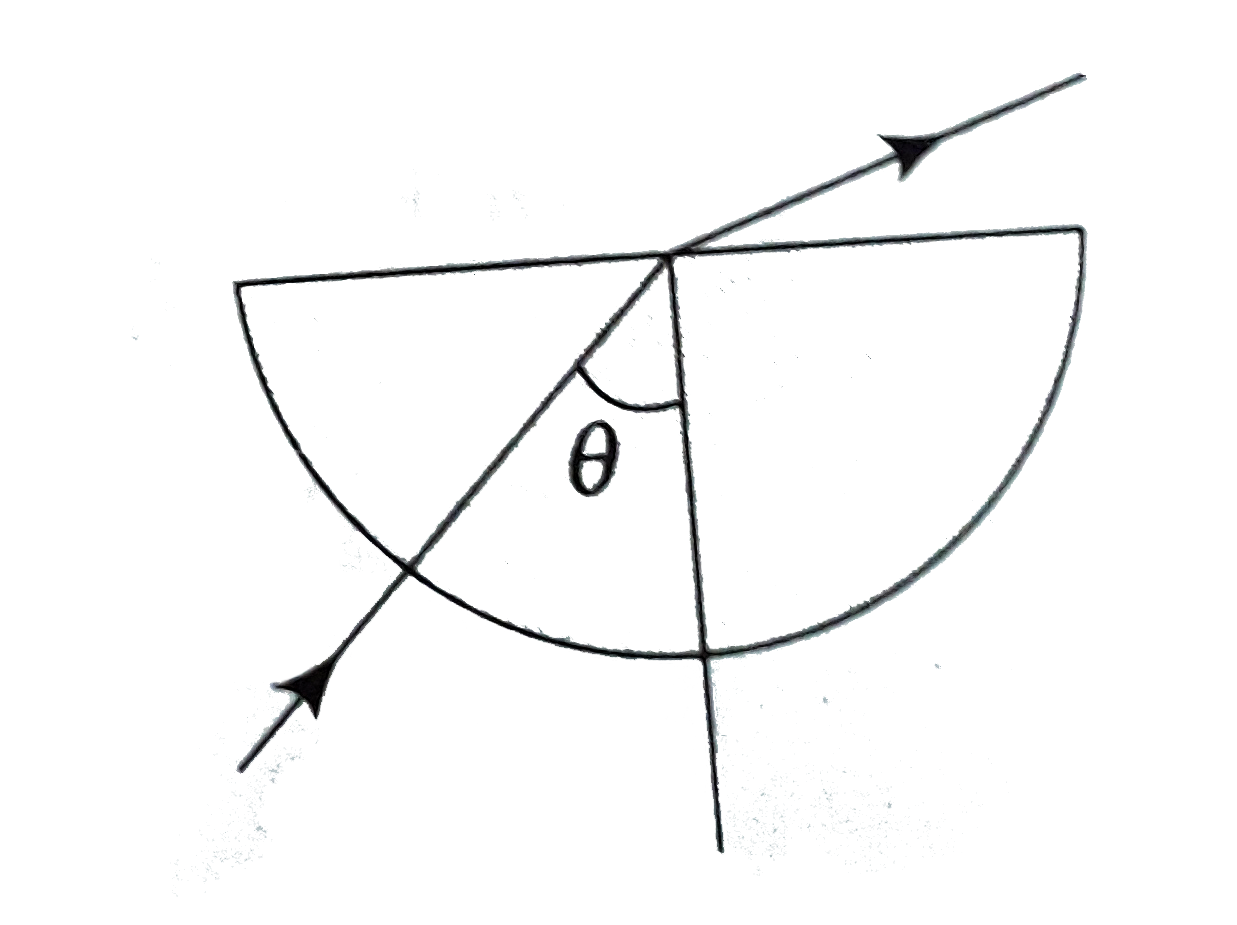 View Solution
View SolutionQuestion 211
Statement I: A ray is incident from outside on a glass sphere surrounded by air as shown in Figure. This ray may suffer total internal reflection at the second interface.
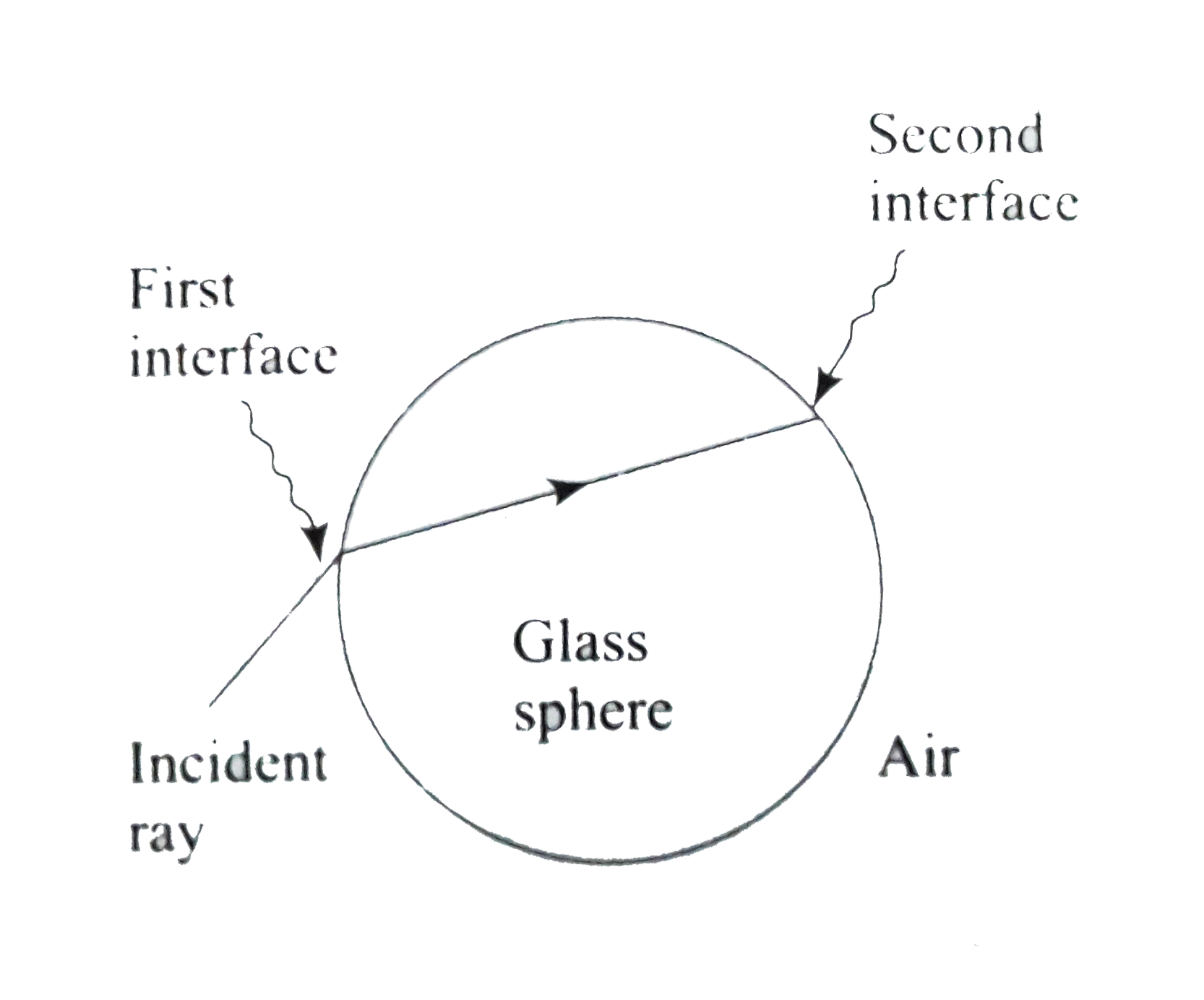
Statement II: For a ray going from a denser to rarer medium, the ray may suffer total internal reflection. View Solution


